biodiversity loss
description: extinction of species worldwide, and also the local reduction or loss of species in a certain habitat
94 results

Nomad Century: How Climate Migration Will Reshape Our World
by
Gaia Vince
Published 22 Aug 2022
The better and faster we are at restoration, the fewer people will need to migrate and the more pleasant all of our lives will be on this planet. The two biggest problems – both of our own making – are biodiversity loss and climate change. Fortunately, these are connected problems, and to some extent nature restoration and climate restoration can be done through similar routes. Biodiversity loss is mainly the result of the way we use land, but also of over-hunting and climate change. And, since climate change is a cause of biodiversity loss – for example, drought harms soils and forests – reducing global temperature would also bring biodiversity benefits. And it cuts both ways: restoring biodiversity helps suck up carbon dioxide and store it, which brings down global temperatures and thus reduces climate change.
…
Kung peoples; lack of water resources; low levels of migration to; migration from as relatively low; poor infrastructure and city planning; population rise in; rainfall due to Indian irrigation; remittances from urban migrants; and restoring of planet’s habitability; Transaqua Project of water diversion; transatlantic slave trade; transport infrastructure in; urbanization in African Union agoraphobia AI and drone technology aid, development/foreign air-conditioning/cooling airships or blimps Alaska algae Aliens Act (UK, 1905) Alps, European Amazon region Americas Anatolia Anchorage, Alaska Anderson, Benedict animals/wildlife; global dispersal of; impact of fires on; impact of ice loss on see also livestock farming Antarctica; ice sheet Anthropocene era; four horsemen of Aravena, Alejandro Archaeology architecture/buildings: Aravena’s ‘partial houses’; energy-efficiency retrofits; floating infrastructure; heat- and light-responsive materials; low-carbon concrete; prefabricated and modular housing; in successful migrant cities; wooden skyscrapers; zero-carbon new-builds Arctic region; first ice-free summer expected; opening up of due to climate change Argentina Arrhenius, Svante Asia: cities vulnerable to climate change; drought-hit areas; extreme La Niña events; extreme precipitation in monsoon regions; Ganges and Indus river basins; and heat ‘survivability threshold’; huge populations of South Asia; lack of water resources; rivers fed by glaciers; small hydropower installations; urbanization Aswan High Dam asylum-seekers: Australia’s dismal record on; Britain’s proud history on; dominant hostile narratives about; drownings in English Channel; limbo situation due to delayed claim-processing; misinformation about see also refugees Athens Australia: Black Summer (2019–20); energy-supply economy; impact of climate emergency; indigenous inhabitants; low population density in; migration to; and mineral extraction in Greenland; renewable power in; treatment of asylum-seekers; White Australia Policy aviation Aztecs Babylon bacteria, in food production bamboo Bangkok Bangladesh; ‘Bangla’ communities in London; Burmese Rohingya refugees; impact of climate emergency; migration across Indian border; population density in; relocation strategies; training for rural migrants Bantu people Barber, Benjamin Barcelona Beckett, Samuel Belarus Belgium Bergamo, Italy Bhutan Bijlmermeer (outside Amsterdam) biodiversity loss/ecosystem collapse; coral reefs as probably doomed; crash in insect and bird populations; depletion of fish stocks; due to agriculture; due to farming; four horsemen of the Anthropocene; and human behaviour; Key Biodiversity Areas; links with climate change; and marine heatwaves; and overuse of fertilizers; restoring of; species extinction; and urban adaptation strategies see also environmental sustainability bioenergy with carbon capture and storage (BECCS) biotech industry birds black soldier flies black-footed ferrets BoKlok (IKEA spinoff) Bolivia Borneo Bosch, Carl Boston, Massachusetts Boulder, Colorado Brazil Brexit Brin, Sergey British Columbia Brown, Pat bureaucracy Burke, Marshall Burma business/private sector Cairo California; forest fires in Cambodia Cameroon Canaan Canada; and charter cities model; Climate Migrants and Refugee Project; economic benefits from global heating; expansion of agriculture in; first carbon-neutral building in; forest fires in; indigenous populations; infrastructure built on permafrost; regional relocation schemes Capa, Robert, capitalism Caplan, Bryan Caprera (Italian warship) carbon capture/storage; BECCS; ‘biochar’ use in soil; carbon capture and storage (CCS); direct capture from the air; by forests; in grasslands; Key Biodiversity Areas; in oceans; by peatlands; by phytoplankton; vegetation as vital carbon pricing/taxing carbon/carbon dioxide: amount in atmosphere now; Arrhenius’ work on; and biomatter decay in soil, ‘carbon quantitative easing’; continued emitting of; decarbonizing measures; effect on crop growth; emissions cut by building from wood; emissions from farming; emissions from human energy systems; emissions from urban buildings; geoengineering to remove; during last ice age; Miocene Era levels; new materials made from; ocean release of; released by wildfires; tree-planting as offsetting method; in tropical rainforests Carcassonne, France Card, David Cardiff Castro, Fidel Çatalhöyük, ancient city of Central African Republic Central America Chad ‘char people’ charcoal (‘biochar’) Chicago children: childcare costs; deaths of while seeking safety; ‘invisible’/living on the margins; left behind by migrant parents; and move to cities; numbers at extreme risk; in refugee camps; and sense of ‘belonging’ Chile China: adaptation for heavy rainfall events; Belt and Road Initiative; cities vulnerable to climate change; demography; desertification of farmland in north; economic domination of far east; emigrants and knowledge-flow; emissions as still rising in; extreme La Niña events; ‘green wall’ tree-planting projects; and heat ‘survivability threshold’; Hong Kong–Shenzhen–Guangzhou mega-region; hukou system; integrated soil-system management; internal migration in; migrant workers in Russia’s east; and mineral extraction; net zero commitment; small hydropower installations; South-to-North Water Diversion Project; ‘special economic zones’; Uyghur Muslim communities in; and water scarcity; ‘zhuan‘ documents Chinatowns Churchill (town in Manitoba) Churchill, Winston cities: adapting to net-zero carbon economy; city state model; coastal cities; as concentrated nodes of connectivity; ‘consumption cities’ in Africa; control of migration by; deadly urban heat; demand for cooling; devolving power to communities; in eighteenth/nineteenth-century Europe; entrenched assets; and extreme flood risk; flood defences; as focal points for trade networks; food production in; genetic impacts of; in high altitude locations; large megacities; merging into mega-regions; as particularly vulnerable to climate change; phased abandonment of; population densities in; private gardens in; relocation of; relocation strategies within; sprawling shanty towns in; strategies against impact of heat; zero-carbon new-builds see also migrant cities; migration, urban citizenship; patriotism of welcomed migrants; ‘UN/international passport’ idea Clemens, Michael climate change, historic: Cretaceous–Palaeogene meteorite impact event; in late-bronze-age Near East; and migration; in Miocene Era; and transition to farming climate change/emergency; 3–5° C as most likely scenario; as affecting all of Earth; cities as particularly vulnerable to; destruction of dam infrastructure; enlisting of military/security institutions against; every tenth of a degree matters; extreme weather events; global climate niches moving north; global water cycle as speeding up; greenhouse gas emissions as still growing; impact of cities; impact on lives as usually gradual; inertia of the Earth’s climate system; lethality by 2100; links with biodiversity loss; near-universal acceptance of as human made; net zero pledges; Paris Agreement (2015); path to 3–4° C-hotter world; situation as not hopeless; slow global response to; as threat multiplier; warming as mostly absorbed by oceans see also biodiversity loss/ecosystem collapse; drought; fires; floods; heat climate models: future emissions scenarios; heating predictions; impact of 4° C-hotter world; IPCC ‘Representative Concentration Pathways’ (RCPs); optimum climate for human productivity; threshold for mass migrations coastal areas: coastal cities; migration from; retreating coastlines; seawater desalination plants cochineal scale insect Colombia colonialism, European Colorado Columbia Concretene construction industry copper coral reefs Cornwall Costa Rica cotton Covid-19 pandemic; cooperation during cross-laminated timber (CLT) Crusaders Cruz, Abel Cuba cultural institutions/practices: cultural losses over time; diversity as improving innovation; migration of; in well-planned migrant cities cyclones Cyprus Czech workers in Germany Dar es Salaam Death Valley Delhi Democratic Republic of Congo demographic changes/information: and decline of nationality viewed in racial terms; depopulation crisis; elderly populations in global north; GenZ; global climate niches moving north; global population patterns; global population rise; ‘household formation’; huge variation in global fertility rates; migrants as percentage of global population; population fall due to urban migration; population-peak projection; post-war baby boom; and transition to farming Denmark Denver, Colorado desert conditions Dhaka Dharavi (slum in Mumbai) diet and nutrition: edible seeds of sea grasses; genetically engineered microbes; global disparities in access to nutrition; and Haber–Bosch process; insects as source of protein and fats; loss of nutrition due to heat stress of crops; move to plant-based diet; vitamin D sources; zinc and protein deficiencies dinosaurs direct air capture (DAC) disease; waterborne Doha Domesday Book (1086) Driscolls (Californian berry grower) drone technology drought; as affecting the most people; in Amazon region; impact on farming; in late-bronze-age Near East; and rivers fed by glaciers; and sulphate cooling Dubai Duluth, Minnesota Dunbar, Robin economies; Chinese domination of far east; economic growth; forced move towards a circular economy; GDP per capita measure; Global Compact for Migration; global productivity losses due to heat; immigrant-founded companies; and influx of low-skilled migrant workers; migration as benefitting; mining opportunities exposed by ice retreat; and nation state model; need to open world’s borders; new mineral deposits in northern latitudes; northern nations benefitting from global heating; ‘special economic zone’ concept; taxing of robots see also employment/labour markets; green economy; political and socioeconomic systems; trade and commerce education: availability to migrants; as key to growth; and remittances from urban migrants; systems improved by migration Egypt; Ancient electricity: current clean generation as not sufficient; decarbonizing of production; electric vehicles; grid systems; hydroelectric plants; and net zero world; renewable production Elwartowski, Chad employment/labour markets: amnesties of ‘illegal’ migrants; and arguments against migration; and automation; controlled by city authorities; and global labour mobility; and the green economy; impact of heat on jobs; indentured positions; and influx of low-skilled migrant workers; jobs in growth industries; jobs restoring diversity; jobs that natives don’t want to do; mechanization/automation slowed down by migrant workers; migrants bring greater diversity to; need for Nansen-style scheme; occupational upgrading of locals due to immigration; refugees barred from working; role of business in migrant integration; rural workers moving to cities; skilled migrants; support/access for migrants; Trump’s work visa restrictions; ‘urban visas’ in USA; workforce shortages in global north energy systems: access to in global south; air-conditioning/cooling demand; and carbon capture; ‘closed-loop’ radiator construction; decarbonizing of; and economic growth; geothermal production; global energy use as increasing; new dam-construction boom in south; nuclear power; oceans as source; poor grid infrastructure in global south; power outages; power sharing as not equitable; reducing growth in demand; replacement of inefficient heating/cooling systems; transmission/transport see also electricity English Channel Environmental Protection Agency, US environmental sustainability: decarbonizing measures; decoupling of GDP from carbon emissions; and economic growth; heat- and light-responsive materials; low-energy plastic recycling methods; and migrant cities; need for open mind in planning for; phytoplankton as hugely important; replacement of inefficient heating/cooling systems; zero-carbon new-builds see also biodiversity loss/ecosystem collapse environmentalists; negative growth advocates; opponents of geoengineering equatorial belt Erdoğan, Recep Tayyip Eritrea Estonia Ethiopia Europe: 2003 heatwave; depopulation crisis; eighteenth/nineteenth-century shanty towns; impact of climate emergency; medieval barriers to movement; Mediterranean climate moving north; migrant indentured labour in; migration of women working in domestic service; small hydropower installations; three mass migrations in Stone and Bronze Ages European Union: free movement within; fund for aid to Africa; Green New Deal; no ‘asylum crisis’ within; nuclear power in; open-border policy for refugees from Ukraine; as popular migrant destination; seeks quota system for refugees; as successful example of regional union; war against migrants Fairbourne (Welsh village) farming: in abandoned areas in south; in Africa; ancient transition to; bad harvests as more frequent; barns/storehouses; benefits of warming in Nordic nations; biodiversity loss due to; cereal crops; closing the yield gap; early nineteenth century expansion of; ever-decreasing, sub-divided plots of land; expanded growing seasons; fertile land exposed by ice retreat; genetic research to produce new crops; genetically modified crop varieties; global disparities in food production; Green Revolution; greenhouse gas emissions from; in Greenland; Haber–Bosch process; heat-tolerant and drought-resistant crops; high-yielding wheat and rice variants; impact of climate emergency; indoor industrial systems; modern improvement in yields; nutrient and drip-irrigation systems; pre-twentieth-century methods; relying on new forms of; Russian dominance; salt-tolerant rice; smallholder; and solar geoengineering; solar-powered closed-cycle; urban vertical farms; use of silicates; and water scarcity; wildflower strips in fields see also livestock farming Fiji Fires fish populations: artisanal fishers; boost of in Arctic region; and decommissioned offshore oilrigs; fish farming; future pricing of fish products; as under huge pressure; insects as farmed-fish feed; land-based fish-farming Five Points slum, New York floods; flash floods; low-lying islands and atolls; sea walls/coastal defences; three main causes; in urban areas; water-management infrastructure Florida food: algal mats; carbon-pricing of meat; impact of soaring global prices; insect farming; kelp forest plantations; lab-grown meats; meat substitutes; for migrant city dwellers; move to plant-based diet; need for bigger sources of in global north; need to cut waste; photosynthesizing marine plants and algae; plant-based dairy products; reduced supplies due to temperature rises; refrigerated storage; replication of Maillard chemical reaction; sourced from the oceans see also diet and nutrition; farming; livestock farming food security Ford, Henry forests: advance north of in Nordic nations; deforestation; impact of climate emergency; ‘negative emissions activity’; replanting of; Siberian taiga forest fossil fuels; carbon capture and storage (CCS); as embedded in human systems France Fraser, Sean freedom of movement French Polynesia Friedman, Patri Gargano, Gabriele gas industry Gates, Bill gender: heat related inequalities; physical/sexual danger for female migrants; women in domestic service in Europe; women rejoining workforce genetic modification genetics, population Genghis Khan geoengineering; artificial sill proposals; cloud-brightening idea; as controversial/taboo; and ideal temperature question; possible unwanted effects; proposals for dealing with ice melt; to reduce atmospheric carbon dioxide; solar radiation reduction tools; sulphate cooling concept; thin-film technology; tools to reflect the sun’s heat away from Earth geology GERD dam, Ethiopia Germany; Syrian refugee resettlement in Ghana Glasgow climate meeting (2021) Global Parliament of Mayors global south; benefit of solar cooling idea; capital costs of deploying new renewables; cutting of food waste in; future repopulation of abandoned regions; global income gap as rising; little suitable landmass for climate-driven migration; migration to higher elevations with water; need for improved infrastructure; need for sustainable economic growth; new dam-construction boom in; new domestic sources of energy; population rise in; remittances from urban migrants; resource extraction by rich countries; and vested interests in the rich world see also Africa; Asia; Latin America and entries for individual nations golf courses Gore, Al, An Inconvenient Truth (2006) Gothenburg Grand Inga hydroelectric dam project (Congo River) Granville, Earl grasslands Great Barrier Reef Great Lakes region, North America Greece; Ancient green economy; and building of fair societies; Green New Deals; migration as vital to; multiple benefits of see also environmental sustainability; renewable power production; restoring our planet’s habitability greenhouse gas emissions; charging land owners for; in cities; emitters trying to avoid/delay decarbonization; from farming; national emissions-reductions pledges; underreporting of; unfair global impact of see also carbon/carbon dioxide Greenland; ice sheet; potato farming in Gulf states Haber, Fritz Hangzhou Hawaii health: climate change as threat multiplier; dementia care; diseases of poor sanitation; healthcare in successful migrant cities; heat related inequalities; lethality of extreme heat; and life in cities; mental illness and migration; migration as benefitting social care systems; pathogens in frozen tundras; rural living as single largest killer today; and smoke pollution heat: 35°C wet bulb threshold crossed; climate model predictions; cloud and water vapour feedbacks; combined with humidity; and demand for cooling; extreme hotspots; global productivity/work hour losses; impact of 4° C-hotter world; impact on farming/food supplies; infrastructure problems due to; lethality by 2100; lethality of extreme temperatures; Paris pledge of below 2°C; solar radiation reduction tools; subtropical climate spreading into higher latitudes; temperatures above 50°C; threshold for mass migrations; ‘threshold of survivability’; urban adaptation strategies; urban heat island effect; ‘wet bulb’ temperature calculations Held, David Hernando, Antonia HIV Höfn, southeastern Iceland Holocene epoch Honduras Hong Kong horses, domestication of housing: Aravena’s ‘partial houses’; controlled by city authorities; equitable access to; floating infrastructure; in flood-affected areas; and heat related inequalities; and migrants; planning and zoning laws; policies to prevent segregation; prefabricated and modular; twentieth-century social programmes see also slum dwellers Hudson Bay Huguenot immigrants human rights, universal Hungary hunter-gatherers hurricanes hydrogen ice age, last ice loss; as accelerating at record rate; in Antarctica; in Arctic region; artificial reflective snow idea; artificial sill proposals; and flash floods; loss of glaciers; permafrost thaw; reflective fleece blankets idea; retreat of ice sheets; rising of land due to glaciers melting; tipping points for ice-free world Iceland ICON, construction company identity: accentuation of small differences; and ancient transition to farming; borders as ‘othering’ structures; language as tool of self-construction; mistrust of outsiders; pan-species; sense of ‘belonging’; social norms of ‘tribe’; social psychology; stories crafting group identity see also national identity immigration policies: bilateral or regional arrangements; deliberately prejudicial policy; development of since later nineteenth-century; and harnessing migrant potential; immigrant inclusion programmes; immigration lottery schemes; move needed from control to managing,; points-based entrance systems; poorly designed; quota systems; responses to terrorist incidents; restrictions as for people not stuff; restrictive border legislation; Spain’s successful policy Impossible Foods India; crop irrigation in; emigrants and knowledge-flow; emissions as still rising in; falling fertility rate in; Ganges Valley; and heat ‘survivability threshold’; impact of climate emergency; internal migration in; lime-washing of roofs in; Mahatma Gandhi National Rural Employment Guarantee Act (MGNREGA); National River Linking Project; population density in; young population in indigenous communities Indo-European language Indonesia industrial revolution inequality and poverty: and access to reliable energy; benefit of solar cooling to south; climate change as threat multiplier; climate migration and social justice; and demand for cooling; despair and anger of ‘left behind’ natives; and environmental destruction; and European colonialism; as failure of social/economic policy; and geoengineered cooling; global disparities in access to nutrition; and global food prices; global income gap as rising; heat related; and impact of flooding; increased by ancient transition to farming; as matter of geographical chance; migration as best route out of; and modern farming; and national pride; need for redistributive policies; the poor trapped in vulnerable cities; and post-war institutions; rural living as single largest killer today; slow global response to crisis of; superrich and private jets; tribalism as not inevitable; and vested interests in the rich world insects; collapsing populations; farming of; as human food source insulation insurance, availability of Intergovernmental Panel on Climate Change (IPCC) International Energy Agency (IEA) International Fund for Agricultural Development (IFAD) International Labour Organization Iquique (Chile) Ireland iron, powdered Islam islands, small/low-lying Israel Italy Ithaca, city of (New York) Jakarta Japan Jobs, Steve Johnson, Boris Jordan kelp Kenya Khan, Sadiq Khoisan Bushmen Kimmel, Mara King, Sir David Kiribati knowledge and skills: better environment for in rich countries; ‘brain drain’ issue; channelled through migrant networks; diversity as improving innovation; global knowledge transfer; Global Skill Partnerships model; impact of European colonialism; migrants returning to origin countries; and Nansen-style schemes; need for rapid transference of; and points-based entrance systems Kodiak Island, Alaska krill Kuba Kingdom, West Africa !
…
Kung peoples Kutupalong refugee camp, Bangladesh Kyrgyzstan Lagos Lake Chad Lammy, David land ownership language/linguistics; language classes for new arrivals; and nation state Laos Las Vegas Latin America: Amazon region; first nation states in; fragile social systems in; impact of climate emergency; mega-El Niño (1997–8); migrants in Parla, Spain; rivers fed by glaciers; rural to urban migration League of Nations Leipzig liberalism Libya Lima livestock farming: by drone; feeding of animals; impact of drought; inhumane treatment of animals; insects as feed; land and water used for; meat and dairy subsidies; need for huge reduction in Ljubljana, Slovenia locust plagues London Macau Maillard chemical reaction maize production, global Malacca Straits Malaysia Maldives Mali Manchester Mangroves Marijuana marine life: fish populations; impact of global warming; starved of oxygen by algae marshes Mayan civilization Mayors Migration Council McCarthy, Kate McCay, Adam McConnell, Ed Medellín, Colombia media, prejudice against migrants Mediterranean Mekong River Melbourne, Pixel Building Merkel, Angela Mesopotamia Met Office, UK, methane Mexico Mexico City Miami Micronesians Middle East migrant cities: the Arctic as new region for; charter cities option; and circulation of community resources; ‘climate haven’ cities; creation of entirely new cities; as cultural factories; environmental sustainability; evidence of decline of tribalism in; expanding existing cities; in the new north; planning future cities; repurposing/adaptation of; successful urban development/planning in; as synergistic; training for rural migrants; water-management infrastructure migrants/immigrants: arrival in family groups; ‘Bangla’ communities in London; contribution to global GDP; creation of active markets by; distinction between refugees and; dominant hostile narratives of in West; ‘economic migrant’ term; evidence of decline in hostility towards; harnessing potential of; immigrant inclusion programmes; as indentured labour; internal migration; Boris Johnson’s language on; language classes for; levels of patriotism of; living in slums/shanty towns; mentoring and support for; as percentage of global population; racist and prejudicial tropes about; returning to origin countries; seasonal; situations of appalling abuse/danger; state-sponsored support needed for migration: and advantageous genetic modifications; barriers to today; as benefitting everyone; controlled by city authorities; as deeply interwoven with cooperation; and diversified genes/culture; evidence of decline of anti-immigrant feeling; free movement ends in twentieth century; and historic climate change; historical; human displacement at record levels; inherited routes and channels; and mental illness; as not reduced by aid; reluctance to move; and skin colour; of stuff/resources; as survival strategy used widely in nature; as valid and essential part of human nature; world’s major cities created by migration, arguments against/fears around: fears around crime and violence; and jobs; long evolutionary roots to prejudice; in the media; populist politicians; pressure on inadequate host services; prospect of radical change; resting on true/pure national identity idea; security/terrorism issues; and welfare systems migration, climate-driven: Covid cooperation as hopeful example; due to flooding; and geopolitical mindset; global agreement on pathways needed; hypothetical scenarios/models enabling; as inevitable; Kiribati’s ‘migration with dignity’ programme; mass movement already under way; move to higher elevations; national and regional relocation schemes; need for strong nation-states; need to plan practically now; numbers affected today; predicted future numbers; and Refugee Convention (1951); risk of domination by wealthy elites; as solution not problem; speed of movement of climate niches; water issues to be main driver migration, urban; access to health and education; community sponsorship models; family retention of farmland; and intensive infrastructure development; as most effective route out of poverty; population fall due to; role of business in migrant integration; from rural areas; successful management of; as unplanned and iterative; in the West (1850–1910); and workforce shortages in global north Miller, David mineral supples/extraction mining industry Mongla (Bangladesh) Mongolian steppes Morocco Mumbai, mussels Myanmar Nairobi Nansen, Fridtjof nation state: Anderson’s ‘imagined communities’; claims that country is ‘too full’; first created by revolutionaries; and genetic variation; and geopolitical mindset; and language; leases/purchases of territory by; model as often failing; nationality as arbitrary line drawn on map; need for reinvention of; as norm after First World War; and system of borders; translocation of existing nation states National Health Service (UK) national identity: and anti-immigrant feeling; and bureaucracy; creation of first nation states; ethnic and cultural pluralism as the norm; evidence of decline of tribalism; feelings of loss of/decline; and ideology of nationalism; lack of political meaning before end of eighteenth century; nation state as norm after First World War; need to change immigration narrative; patriotism of welcomed migrants; predicated on mythology of homogeneity; and supranational identity; transition to pan-species identity Nauru Neanderthals negative emissions technologies Netherlands; Delta Programme; Energiesprong house insulation Neukölln (Berlin) New Orleans New Story (nonprofit) New York City; ‘Big U’ seawall project; NYCID programme New Zealand; Managed Retreat and Climate Adaptation Act Newtok, Alaska Nicaragua Niger, West Africa Nigeria nitrogen Noem, Kristi nomadic pastoralism Nordic nations Normans North Korea Northern Ireland Northwest Passage Norway Notre Dame, University of, Global Adaptation Initiative nuclear power; fusion reactor technology Nusantara (Borneo) Nuuk (Greenland) Obayashi (Japanese firm) oceans/seas: acidification; as energy source in north; and enhanced weathering techniques; global warming absorbed by; impact of 4° C-hotter world; impact of carbon emissions; jellyfish explosions; long-distance migratory voyages; marine heatwaves; and migratory raiders; Miocene Era sea levels; North Atlantic currents; Northwest Passage; nutrient and oxygen circulation; ocean fertilization; release of carbon dioxide; rise in sea levels; sea grasses; sourcing food from; toxic algae blooms oil industry OmniTrax (US freight company) Ottoman Turks Overjeria, Bolivian village Paine, Thomas Pakistan Palaeo-Eskimos, Canadian palaeontology Palestine Panama Papua New Guinea Paris climate meeting (2015) Parla (near Madrid) passports Patagonia Patel, Priti patriotism Pearl River Delta Peatlands people-traffickers Peri, Giovanni permafrost, infrastructure built on Persian Gulf Peru Pfizer vaccine Philippines; nurses from Philistines Photios of Constantinople Phuket, Thailand Phytoplankton plains/steppes plants/vegetation: destruction of by wildfires; genetic tools to help adaptation; grass verge areas; heat damage to crops; during last ice age; move to plant-based diet; planted to increase crop yields; replanting of; rooftop vegetation/gardens plastic waste Pleistocene epoch Poland political and socioeconomic systems: in Africa; benefits to democracy of migration; cooperation during Covid upheaval; corporate food system; democracy based on inclusiveness; development of governance systems; end of multinational empires; erosion in the powers of global bodies; failure over decarbonization; far-right political parties/groups; fossil fuels as embedded in; geopolitical constraints; geopolitical implications of farming’s shift north; global institutions with enforceable powers needed; and ideal temperature question; inequality as failure of policy; institutional bias over skin-colour; institutional trust levels; international diplomacy; move from feudalism to centralized monarchy; nation-state model spreads; need for global planning over migration; need for redistributive policies; need for strong nation-states; new regional unions option; pledge of ‘strong borders’ as vote-winner; possible new political institutions/structures; post-war institutions and inequality; strong/stable institutions in north; translocation of existing nation states; and transnational rivers/’water towers’; vested interests in the rich world; Westphalian state system pollinators pollution Polynesians populist politicians Portugal postcolonial diaspora poverty see inequality and poverty Próspera ZEDE (embryonic charter city) Prussia Puerto Rico Putin, Vladimir Pygmies Qatar race and ethnicity: and anti-immigrant feeling; deliberately prejudicial policies; and demographic change; European colonialism; fallacy of biological ‘race’; heat related inequalities; unconscious bias in society; white supremacists rain gardens rainfall: altering patterns of; captured by roof gardens/storage; seeding of clouds rare earth metals Raworth, Kate, Doughnut Economics, recycling Refugee Convention (1951) refugees: from Afghanistan; barred from working; Burmese Rohingya in Bangladesh; climate change not in legal definition of; distinction between migrants and; EU seeks quota system for; hostile rhetoric towards; judgemental terms used about; and Nansen passports; privately sponsored; from Syrian crisis (2015–16) see also asylum-seekers renewable power production: as adding to, not replacing, fossil fuels; artificial light delivered by LEDs; hybrid hydro-solar power concept; hydroelectric plants; as leading job creator; and net zero targets; phenomenal rise in; refrigerant units in global south; solar-powered closed-cycle farming; storage technology; zero-carbon new-builds Republic of the Congo restoring our planet’s habitability; biodiversity loss; ‘blue carbon’; climate change-biodiversity loss as linked; cooling of global temperatures; decarbonizing measures; enhanced weathering techniques; future repopulation of abandoned regions; genetic tools to help species adapt; as global, labour-intensive task; natural restoration after human abandonment; nature guardianship in tropical regions; need for speed; negative emissions technologies; ocean fertilization; paying communities to protect ecosystems; regenerative agriculture; replanting of vegetation; solar radiation reduction tools, see also geoengineering retail services rice; SRI cultivation process rivers: drying out of; fed by glaciers; heavier rainfall as increasing flows; lack of in Gulf region; pollution discharged into; transnational Roatan, Caribbean island of Rocky Mountains Rome, ancient Romer, Paul Rotterdam rural living: and depopulation crisis; flight from drought/heat hit areas; impact of flooding; massive abandonment of in coming decades; migration to urban areas; and population expansion in Africa; remittances from urban migrants; as single largest killer today; and water scarcity Russell, Bertrand Russia: and charter cities model; depopulation crisis; economic benefits from global heating; economic sanctions on; expansion of agriculture in; infrastructure built on permafrost; invasion of Ukraine (2022); mega-heatwave (2010); migrant workforce in east; as potential area for charter cities; small-scale modular nuclear reactors in; water resources in Rwanda: Hutus and Tutsis in; special protective zones in; and UK asylum-seeker plan Salla, Finnish town of sanitation Saudi Arabia Saunders, Doug Sawiris, Naguib Scandinavia scientific discovery Scotland sea grasses Seasteading movement Seven Dials, London sex industry Shanghai sharing/circular economy Shenzhen Shyaam a-Mbul Siberia silicates Silicon Valley Silk Road Singapore sinkholes Skellefteå, Sweden slavery Slovenia slum dwellers; conditions at Kutupalong refugee camp; in Lagos; in Lima; and urban heat island effect; vulnerability to flooding social class/hierarchies: and anti-migrant attitudes; barriers erected against migration of the poorest; despair and anger of ‘left behind’ natives; development of; and gentrification; middle class migrants; myth of meritocracy; prejudice as often defensive fear-based reaction social networks; benefits of trade; cities as focal points for trade; Dunbar number; entangled ancestries/identities; forged by migrants; and knowledge flow; loss due to gentrification; migrants in family groups; and mistrust of outsiders; need for inclusive governance; and reluctance to migrate; in slum areas; social clustering of migrants; synergy created by; and unjust hierarchies; welcoming of strangers to social services see welfare systems and social services socioeconomic system see political and socioeconomic systems soil: ‘biochar’ use in; biomatter decay in; as carbon store; impact of heat on; impact of wildfires on; integrated soil-system management in China; and overuse of fertilizers; and perennial cereals; use of silicates in solar power Solar Radiation Management Governance Initiative South Dakota South Korea Southern Ocean Soviet Union soya production Spain Spitalfields, London stateless persons Sudan sulphate cooling concept Sumerian civilization Sunak, Rishi Sweden Switzerland Syrian crisis (2015–16) Tabasco, Mexican state of Tabassum, Marina Tahiti Tajikistan Tanzania Tasmania textiles industry Thailand Thepdet, Supranee thermal wallpaper Thiel, Peter Thirty Years War Thwaites Glacier Tokyo Toltecs Tong, Anote Tourism trade and commerce; cities as focal points for networks; free movement of goods; free trade; global trade deals; origins and development of transport infrastructure: aviation; decarbonizing of; electric-powered vehicles; equitable access to; in global south; and limitations of battery weight; problems due to extreme heat; sail power as due a revival; in successful migrant cities; use of foot or pedal trees: American chestnut trees; cycles of burn and recovery; as ‘emissions offset’; giant sequoias; ‘green wall’ tree-planting projects; vine-like lianas Trestor, Anne Marie tropical regions: benefit of solar cooling idea; impact of climate emergency; nature guardianship in; population rise in Trump, Donald Tsipras, Alexis tundra Turkey Turkmenistan Tuvalu UAE Uganda Ukraine: maize exports; Russian invasion of (2022) United Kingdom: ageing population in; anti-immigrant feeling in; Brexit; Commonwealth Immigrants Act (1962); and Covid pandemic; destruction of peatlands in; flood defences in London; historical migration to; history of granting asylum; ‘hostile environment’ policy; impact of climate emergency; and inevitability of change; low statutory sick pay level; migratory shift to southeast; planned fusion reactors; planning laws; renewable power production; Rwanda proposal for asylum-seekers; slow processing of asylum claims; small boats in English channel; wet-farming in United Nations: Global Compact for Safe, Orderly and Regular Migration (2018); HCR; Human Rights Council; International Labour Organization; International Organization for Migration; and Nansen Passport concept; suggested new global migration body United States: Chinese Exclusion Act (1882); ‘climate-proof’ cities in; as created from global migrants; dam removal in; demographic change in; and depopulation crisis; and extreme La Niña events; and future climate problems; Green New Deal; heat related inequalities; Homestead Act; immigrant-founded companies; impact of climate emergency; indigenous communities; and inevitability of change; lack of universal healthcare in; leases/purchases of territory by; low spending on social services; mass incarceration of Mexicans in; meat industry in; migration to since 1980s; and mineral extraction; municipal codes; net zero commitment; nineteenth century migration to; patriotism of migrants; refugee children in detention camps; resettlement project in Louisiana; rural to urban migration; seeding of clouds in; Trump’s work visa restrictions; ‘urban visas’ in; yield gap in university towns urban development/planning: Bijlmermeer (outside Amsterdam); and elderly populations; and inclusive government policies; machizukuri process in Tokyo; need for integrated high-rise/low-rise; new canals/water features to combat heat; parks/squares/public spaces; planning and zoning laws; slum clearance programmes; social capital investment in cities USAID Uttarakhand, Indian state Uzbekistan Venezuela Venice Vermont Vietnam Vikings war/violent conflict: over water scarcity; triggered by climate upheaval water, fresh: circulated, cleaned, stored and reused; closed-circuit water recycling; conflict triggered by scarcity; crop irrigation; desalination techniques; drip-irrigation systems; evaporative losses; geopolitics of water control; held in glaciers; impact of heat on supplies; importance of new water policies; inland lake systems; need for urban underground reservoirs; new waterways and river diversions; pumping of groundwater; purified sewage recycled; as resource anxiety of this century; running dry of aquifers; salination of groundwater; used for livestock; water pricing/tax policies Waterloo, Ontario weather systems: cyclonic storms in Bay of Bengal; El Niño events; extreme La Niña events; extreme weather events; Intertropical Convergence Zone (ITCZ); monsoon regions; trade winds welfare systems and social services: access to in migrant cities; and arguments against migration; and bureaucracy; despair and anger of ‘left behind’ natives; intensive infrastructure development needed; low spending on in USA; migrant access to; migration as benefitting social care systems; punitive restrictions on new migrants Westphalia, Peace of (1648) Whales wheat production, global Wilson, E.

Not the End of the World
by
Hannah Ritchie
Published 9 Jan 2024
Food production is responsible for one-quarter of the world’s greenhouse gas emissions; it uses half of the world’s habitable land, 70% of the world’s freshwater withdrawals, and the leading driver of biodiversity loss. Growing enough food is not the problem – it’s about growing and using this food in a smarter way. Make better decisions and we can feed 9 or 10 billion people without frying the planet at the same time. (5) Biodiversity Loss It’s not just farm animals that we should be concerned about. Wildlife is also in dire trouble. Biodiversity loss is driven by many of the problems covered in this book: species are affected by climate change, deforestation, habitat loss through expanding land, hunting for meat, plastic pollution and overfishing.
…
The good news is that the solutions are cross-cutting: eating less meat would reduce the amount of land we use for farming, climate change and biodiversity loss. Stopping deforestation will reduce habitat loss and greenhouse gas emissions. What are driving the world’s species to extinction? The share of assessed species that are threatened with extinction by a specific driver of biodiversity loss. This is based on a study of 8,688 species that are near-threatened or threatened with extinction on the IUCN Red List. Around 80% of assessed species are at risk from more than one threat. How do we prevent a Sixth Mass Extinction? Biodiversity loss is the trickiest environmental problem that I cover in this book, though I still think we can change things.
…
The obvious problem is that we often don’t know what these species are (remember Hardin’s ‘you can never merely do one thing’). To add to that, people still view other animals as very separate from them. They miss the true co-dependencies. They seem less important than cutting air pollution or tackling climate change. We see biodiversity loss more as a charitable cause than as a core element of how we move forward. I don’t think we’ll put as much direct effort into solving biodiversity loss as our other environmental problems. But what makes me optimistic is that we will reduce it indirectly by tackling all of the other problems. A wonderful by-product of slowing climate change, fixing our food systems, stopping deforestation, ending plastic pollution and protecting our oceans is that we stop piling pressure on the species around us.

The God Species: Saving the Planet in the Age of Humans
by
Mark Lynas
Published 3 Oct 2011
We have poisoned, outcompeted, or simply eaten so many other species that the Earth is currently in the throes of its most severe mass extinction event in 65 million years, and it is this crisis of biodiversity loss that arguably forms humanity’s most urgent and critical environmental challenge. Many of our other impacts on the Earth system are more or less reversible, but extinction is forever, and a flourishing diversity of life is essential for the biosphere to function successfully during the Anthropocene and beyond. By removing species, we damage ecosystems, collapse food webs, and ultimately undermine the planetary life-support system on which our species depends just as much as any other. The planetary boundaries expert group proposes a biodiversity loss boundary of a maximum of ten species lost to life per million species per year.
…
I was invited to join a group of scientists meeting in closed session to discuss the concept of “planetary boundaries,” a term coined by the Swedish director of the Stockholm Resilience Centre, Professor Johan Rockström. The scientists—all world experts in their fields—were trying to nail down which parts of the Earth system were being most affected by humans, and what the implied limits might be to human activities in these areas. Some, like climate change and biodiversity loss, were familiar and obvious contenders for top-level concern. Others, like ocean acidification and the accumulation of environmental toxics, were newer and less well-understood additions to the stable. During hours of debate, and with much scribbling of numbers and spider diagrams on flip-chart paper, humanity’s innumerable list of ecological challenges was reduced to just nine.
…
On climate change, meeting the proposed planetary boundary means being carbon-neutral worldwide by mid-century, and carbon-negative thereafter. The former will not be possible in my view without nuclear new-build on a large scale, and the latter will need the deployment of air-capture technologies to reduce the concentration of ambient CO2. On biodiversity loss, we need to rapidly scale up “payments for ecosystem services,” schemes that use private-and public-sector approaches to make planetary ecological capital assets like rain forests and coral reefs worth more alive than dead. To meet the other boundaries we will need to deploy genetically engineered nitrogen-and water-efficient plants, remove unnecessary dams from rivers, eliminate the spread of environmental toxics like dioxins and polychlorinated biphenyls (PCBs), and get much better at making and respecting international treaties.
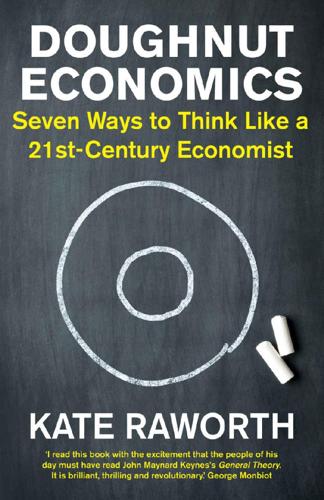
Doughnut Economics: Seven Ways to Think Like a 21st-Century Economist
by
Kate Raworth
Published 22 Mar 2017
The full diagram is set out in the next chapter, but in essence it is a pair of concentric rings. Below the inner ring – the social foundation – lie critical human deprivations such as hunger and illiteracy. Beyond the outer ring – the ecological ceiling – lies critical planetary degradation such as climate change and biodiversity loss. Between those two rings is the Doughnut itself, the space in which we can meet the needs of all within the means of the planet. Sugary, deep-fried doughnuts hardly seem a likely metaphor for humanity’s aspirations but there was something about the image that struck a chord in me and in others, so it stuck.
…
The effects of this dramatic intensification of human activity are clearly visible in an array of indicators that monitor Earth’s living systems. Since 1950 there has been an accompanying surge in ecological impacts, from the build-up of greenhouse gases in the atmosphere to ocean acidification and biodiversity loss.24 ‘It is difficult to overestimate the scale and speed of change,’ says Will Steffen, the scientist who led the study documenting these trends. ‘In a single lifetime humanity has become a planetary-scale geological force … This is a new phenomenon and indicates that humanity has a new responsibility at a global level for the planet.’25 This Great Acceleration in human activity has clearly put our planet under pressure.
…
If you are itching to pick up a pen and start drawing arrows on the Doughnut to explore how each of the boundaries might affect the others, you’ve got the idea – and the Doughnut will soon start to look more like a bowl of spaghetti. Take, for example, what happens when hillsides are deforested. Land conversion of this kind is likely to accelerate biodiversity loss, weaken the freshwater cycle, and exacerbate climate change – and these impacts, in turn, put increased stress on remaining forests. Furthermore, the loss of forests and secure water supplies may leave local communities more vulnerable to outbreaks of disease and to lower food production, resulting in children dropping out of school.

The Climate Book: The Facts and the Solutions
by
Greta Thunberg
Published 14 Feb 2023
In the few regions with no history of settled agriculture, hunting is often still the main driver of biodiversity loss, so the impacts echo the first wave’s megafaunal extinction. For example, in remote parts of many tropical rainforests, wild-meat hunting has largely or totally removed the large mammals; poaching likewise threatens the large mammals in many legally protected areas. Where subsistence farming is widespread, the impacts are more like they were during the second wave: there is a local pulse of biodiversity loss when natural ecosystems are converted to simpler agricultural ones, but the resulting landscapes – a complex, changing jumble, kept free of agrochemicals – can maintain moderate levels of biodiversity.
…
The New York declaration of 2014 pledged to reverse deforestation by 2030. The UN pledged as one of its Sustainable Development Goals of 2015 to ‘protect, restore and promote sustainable use of terrestrial ecosystems, sustainably manage forests, combat desertification, and halt and reverse land degradation and halt biodiversity loss’. These plans are all on a clear path to failure, if they haven’t failed already. There is a pattern here. Every once in a while, our leaders make a few pledges and set a variety of vague, non-binding, often distant targets. Then, as soon as they have failed to reach them, they immediately set some new ones.
…
However, the boreal forest zone is shifting northwards, and the greening area is three times that of the browning caused by mortality in the warmest margins of the biome, which could compensate for the carbon losses from wildfire. The interconnected impacts of climate change, harvesting, homogenization and land-use conversion (such as stripping forests for oil sands mining) have also accelerated biodiversity losses throughout the boreal region. For example, North America’s boreal forests are home to herds of migratory caribou that can travel 500–1,500 kilometres in an annual migration, and to migratory and non-migratory wolves. Loss of migratory corridors that allow these animals to move to a better climate and habitat are a major threat to their survival.
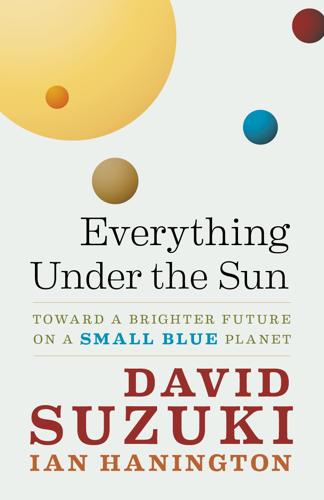
Everything Under the Sun: Toward a Brighter Future on a Small Blue Planet
by
Ian Hanington
Published 13 May 2012
The response of our leaders has, for the most part, been abysmal. The United Nations declared 2010 the International Year of Biodiversity. Countries reported on their progress in reducing biodiversity loss as required under an international treaty called the Convention on Biological Diversity that most nations have signed. However, the UN has admitted that governments have failed to meet the treaty’s objectives “to achieve by 2010 a significant reduction of the current rate of biodiversity loss at the global, regional, and national level as a contribution to poverty alleviation and to the benefit of all life on Earth.” Despite our collective failure to meet the 2010 biodiversity target, countries are negotiating new global targets to slow the rate of biodiversity loss.
…
Despite our collective failure to meet the 2010 biodiversity target, countries are negotiating new global targets to slow the rate of biodiversity loss. It’s easy to be skeptical about the effect these negotiations and meetings in plush hotel ballrooms will have on protecting life on our planet, given the lack of meaningful progress so far. But one outcome of the global biodiversity talks gives us hope. In 2010, government negotiators from around the world met in Busan, South Korea, where they approved the creation of a new global science body to act as an “early warning system” to inform government leaders on major biodiversity declines and to identify what governments must do to reverse these damaging trends.
…
We must then try to determine the best possible conditions for it to live in healthy numbers and study the threats that could undermine its persistence. It’s no different with humans, except that the problems we have created for ourselves—on a global scale—are even more complex. Sometimes it seems that science is inadequate to address the myriad problems of pollution, global warming, population growth, biodiversity loss, changing ocean conditions, and so on. Scientists don’t always take a big-picture approach. Applied science, for example, is often focused on knowledge for a specific need or to solve a practical problem, such as the invention of a new technology. The science may delve into the mechanics of the technology with little regard for its social implications.
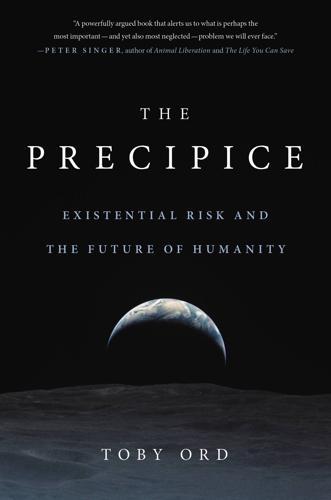
The Precipice: Existential Risk and the Future of Humanity
by
Toby Ord
Published 24 Mar 2020
In any event, our inability to rule out being in the midst of a mass extinction is deeply troubling. And while extinction is a useful measure of biodiversity loss, it is not the whole story. It doesn’t capture population reductions or species disappearing locally or regionally. While “only” 1 percent of species have gone extinct on our watch, the toll on biodiversity within each region may be much higher, and this may be what matters most. From the perspective of existential risk, what matters most about biodiversity loss is the loss of ecosystem services. These are services—such as purifying water and air, providing energy and resources, or improving our soil—that plants and animals currently provide for us, but we may find costly or impossible to do ourselves.
…
But it may well have a useful role to play as a last resort, or as a means for the eventual restoration of our planet’s climate.92 ENVIRONMENTAL DAMAGE Climate change is not the only form of environmental damage we are inflicting upon the Earth. Might we face other environmental existential risks through overpopulation, running out of critical resources or biodiversity loss? When environmentalism rose to prominence in the 1960s and 1970s, one major concern was overpopulation. It was widely feared that humanity’s rapidly growing population would far outstrip the Earth’s capacity to feed people, precipitating an environmental and humanitarian catastrophe. The most prominent advocate of this view, Paul Ehrlich, painted an apocalyptic vision of the near future: “Most of the people who are going to die in the greatest cataclysm in the history of man have already been born.”93 This catastrophe would come soon and pose a direct existential risk.
…
About ten million years hence, even the damage we have inflicted upon biodiversity is expected to have healed. This is how long it took for species diversity to fully recover from previous mass extinctions and our best guess for how long it will take to recover from our current actions.5 I hope and believe that we can address pollution and biodiversity loss much more quickly than this—that sooner or later we will work to actively remove the pollution and to conserve the threatened species. But there is comfort in knowing that at the very least, Earth, on its own, can heal the damage we have done. Over this span of time roughly half of Earth’s species will naturally become extinct, with new species arising in their place.
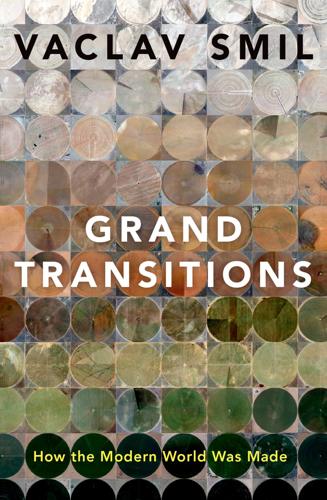
Grand Transitions: How the Modern World Was Made
by
Vaclav Smil
Published 2 Mar 2021
Environmental degradation Expansion of agricultural production and its far from globally completed intensification have aggravated some long-standing problems (soil erosion in arid regions, leaching of nitrates) and have caused new environmental concerns ranging from the impacts of large-scale crop monocultures to the risks of soil contamination with heavy metals. Crop and animal farming have been also major sources of biodiversity loss and emissions of greenhouse gases: these impacts will be considered in the chapter on environmental transitions. The most obvious environmental marker of agricultural transition has been the vast expansion of agricultural land. Our best reconstructions of past aggregates show that the world’s agricultural land (arable land and permanent crops) had nearly sextupled in two centuries, from about 260 million ha in 1700 to 1.5 billion ha in the year 2000, with further slow growth afterwards (FAO 2019).
…
Davis et al. (2018) used a birth–death tree framework to demonstrate that even if today’s extinction rates were to decelerate to pre-anthropogenic levels the recovery of lost mammalian phylogenetic diversity would most likely take millions of years. But even hoping for such a deceleration is misplaced: Butchart et al. (2010) assessed long-term trends of global biodiversity loss and concluded that, despite some local successes, the overall rate of loss was not slowing. Environmental interference includes a large variety of undesirable additions and interventions that affect normal biophysical properties and functions. Loss of darkness has been one of the most consequential interferences.
…
Rockström et al. (2009) identified nine of these processes and set their safe boundaries well below the biophysical thresholds in order to acknowledge some inherent uncertainties regarding their placement and to act as warnings by allowing time to react. The identified planetary thresholds that should not be crossed in order to prevent intolerable environmental change were climate change; rate of biodiversity loss (terrestrial and marine); interference with the nitrogen and phosphorus cycles; stratospheric ozone depletion; ocean acidification; global freshwater use; changes in land use; chemical pollution; and atmospheric aerosol loading. The first assessment concluded that by 2009 we have already passed their boundaries, and that the safe boundaries of global freshwater use, change in land use, ocean acidification, and interference in the global phosphorus cycle were fast approaching.

Less Is More: How Degrowth Will Save the World
by
Jason Hickel
Published 12 Aug 2020
Ramping up the extraction of ores and construction materials means more open-cast mining, with all the downstream pollution that entails, and more cars and ships and buildings that demand yet more energy. And all this entails more waste: more landfills in the countryside, more toxins in our rivers, and more plastics in the sea. According to the United Nations, material extraction alone is responsible for 80% of total global biodiversity loss.14 In fact, scientists often use material footprint as a proxy for ecological impact itself.15 The rise in material use after 1945 reflects what scientists have called the Great Acceleration – the most aggressive and destructive period of the Capitalocene. Virtually every indicator of ecological impact has exploded as a result.
…
In 2009, a team led by Johan Rockström at the Stockholm Resilience Centre, the US climatologist James Hansen, and Paul Crutzen, the man who coined the term Anthropocene, published a groundbreaking paper describing a new concept they referred to as ‘planetary boundaries’.30 The Earth’s biosphere is an integrated system that can withstand significant pressures, but past a certain point it begins to break down. Drawing on data from Earth-systems science, they identified nine potentially destabilising processes that we have to keep under control if the system is to remain intact: climate change, biodiversity loss, ocean acidification, land-use change, nitrogen and phosphorous loading, freshwater use, atmospheric aerosol loading, chemical pollution and ozone depletion. Scientists have estimated ‘boundaries’ for each of these processes. For example, atmospheric carbon concentration should not breach 350ppm if the climate is to remain stable (we crossed that boundary in 1990, and hit 415ppm in 2020); the extinction rate should not exceed ten species per million per year; conversion of forested land should not exceed 25% of the Earth’s land surface; and so on.
…
But in order for the planet to maintain these capacities, we can only take as much as its ecosystems can regenerate, and pollute no more than the atmosphere and rivers and soil can safely absorb. If we overshoot these boundaries, ecosystems begin to break down and the web of life begins to unravel. That’s what’s happening right now. According to the most recent data, we have already shot past four of the planetary boundaries: for climate change, biodiversity loss, deforestation and biogeochemical flows. And ocean acidification is nearing the boundary. So what does all this mean for economic growth? Hitting or crossing the planetary boundaries doesn’t mean that economic growth will suddenly stop. We are already sliding into dangerous tipping points, and growth shows no sign of ending.
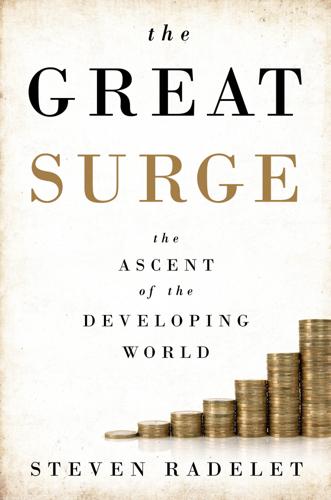
The Great Surge: The Ascent of the Developing World
by
Steven Radelet
Published 10 Nov 2015
There is still a long way to go in creating well-functioning democracies in which basic rights are respected and leaders are held accountable. In many countries, especially India and China, rapid economic growth has come with a high price in terms of environmental degradation, air and water pollution, and biodiversity loss (as it has for much longer in today’s rich countries). Rising greenhouse gas emissions and accelerating climate change are serious threats. These issues are central to the prospects for both sustaining and spreading the recent progress in developing countries. Nevertheless, the changes over the last two decades are a big start—the strongest and most promising start ever—in improving the well-being of millions of people in many of the world’s poorest countries.
…
Their children gain their collective skills and wisdom and take them to the next level. BUT IS IT SUSTAINABLE? The news is not all good. The surge in economic growth has been accompanied in many countries by losses in natural resources and growing environmental degradation, including air and water pollution, reductions in soil quality, biodiversity loss, and increased greenhouse gas emissions that contribute to climate change. Production of timber comes at a cost of clearing forests; overfishing can lead to depletion and species loss; industrial production generates waste that can be dumped into groundwater supplies; and increased economic activity brings greater automobile, factory, and power plant emissions.
…
By contrast (and alarmingly), in Venezuela, the stock of natural capital fell by 12 percent in just five years and comprehensive wealth declined.18 After accounting as best we can for changes in natural assets, we find that developing countries have registered significant increases in overall welfare and wealth in recent years. But not all countries have done so. The big concern, of course, is whether this pattern of increasing wealth can continue in the future, especially with growing climate change, biodiversity loss, and other environmental concerns. Continued progress with less environmental degradation won’t happen automatically: it will require strong leadership that focuses more on natural assets, investments in new technologies, changes in behavior, and wise policy choices. HAS THE SURGE IN GROWTH HELPED THE POOR?
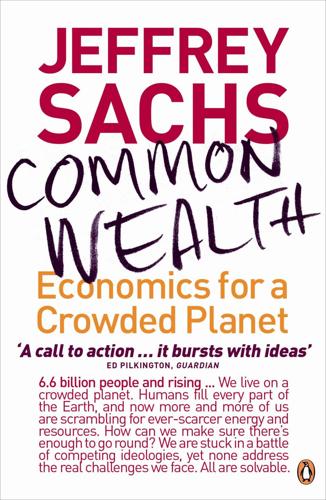
Common Wealth: Economics for a Crowded Planet
by
Jeffrey Sachs
Published 1 Jan 2008
The objectives of the treaty are described as “the conservation of biological diversity, the sustainable use of its components and the fair and equitable sharing of the benefits arising out of the utilization of genetic resources.” The treaty, at its core, calls on countries to take appropriate actions to conserve biological diversity. The rich countries promised additional financial resources for this effort. The following wide range of conservation actions was envisaged: Reduce the rate of biodiversity loss, including: (1) biomes, habitats, and ecosystems; (2) species and populations; and (3) genetic diversity. Promote sustainable use of biodiversity. Address the major threats to biodiversity, including those arising from invasive alien species, climate change, pollution, and habitat change. Maintain ecosystem integrity, and the provision of goods and services provided by biodiversity in ecosystems, in support of human well-being.
…
Mobilize financial and technical resources for implementing the convention and the strategic plan, especially for developing countries, in particular the least developed countries and small island developing states among them, and countries with economies in transition. The most specific of the treaty’s goals was actually adopted by the treaty’s signatories a decade later, in 2002, when the parties committed themselves to “achieve by 2010 a significant reduction of the current rate of biodiversity loss at the global, regional and national level as a contribution to poverty alleviation and to the benefit of all life on Earth.” This target was also adopted at the 2002 World Summit on Sustainable Development and was incorporated by the UN General Assembly as a target under the Millennium Development Goals.
…
Third, universities, like governments, are actually not well organized to take on the intellectual challenges of sustainable development. Faculties and research activities are divided among traditional academic disciplines, such as economics, politics, or ecology, rather than along problem-solving lines. The problems themselves—such as poverty, environmental degradation, climate change, water stress, and biodiversity loss—don’t come packaged along the traditional lines of inquiry. They require cross-disciplinary teams and research strategies. This creates tensions throughout a university in hiring, resource allocation, research funding, student enrollments, and project oversight. Cross-disciplinary efforts, such as the one I direct at The Earth Institute at Columbia University, are promising ways to recast the conventional disciplinary lines so that the expertise of the university can be harnessed on complex interdisciplinary challenges.
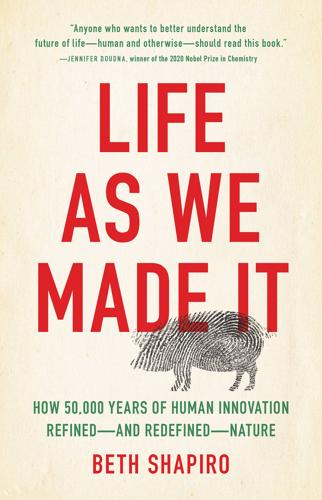
Life as We Made It: How 50,000 Years of Human Innovation Refined--And Redefined--Nature
by
Beth Shapiro
Published 15 Dec 2021
Chapter 6, “Polled,” focuses on how biotechnologies like cloning and genetic engineering impact plant and animal agriculture by allowing us, for example, to engineer domesticated species without the messiness of traditional breeding. Chapter 7, “Intended Consequences,” considers how new biotechnologies can protect endangered species and habitats. From cloned mammoths to transgenic ferrets to self-limiting mosquitoes, biotechnologies could speed up the process of adaptation and, in doing so, slow the rate of biodiversity loss and restore stability to declining habitats. Finally, Chapter 8, “Turkish Delight,” speculates about what else we might do with our new biotechnologies. No longer limited by traditional species boundaries, will we stick with what we know and continue to make our food, pets, and crops better versions of themselves, or will we reach beyond what is currently imaginable to invent something even better?
…
With near-constant legal challenges, there is a tendency among wildlife managers to avoid unnecessary risk and stick with conservation strategies that limit human activities that might negatively impact listed species. Today, however, there is a growing realization that these passive strategies have not slowed the rate of biodiversity loss, and that our role as protectors is to intervene. One of the highest-profile endangered species in North America was saved because people intervened. Florida panthers are an ecotype of puma, a large cat that goes by many names, including mountain lion, catamount, painter, cougar, and mountain screamer, the latter for the bone-chilling call that females make when searching for a mate.
…
The official website of the US Fish and Wildlife Service includes details of the history of the Endangered Species Act and its various amendments. Pimm et al. (2014) explore the impact of international biodiversity-related conventions on the protection of endangered species. The efficacy of approaches in use today to slow biodiversity loss is reviewed by Johnson et al. (2017). Bongaarts (2019) summarizes the key findings of the 2019 report of the United Nations’ Intergovernmental Science-Policy Platform on Biodiversity and Ecosystem Services. The full report, which was published on May 9, 2019, can be accessed at the website https://ipbes.net /global-assessment.
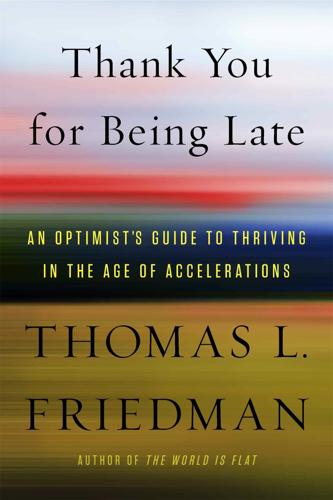
Thank You for Being Late: An Optimist's Guide to Thriving in the Age of Accelerations
by
Thomas L. Friedman
Published 22 Nov 2016
That is, global flows of commerce, finance, credit, social networks, and connectivity generally are weaving markets, media, central banks, companies, schools, communities, and individuals more tightly together than ever. The resulting flows of information and knowledge are making the world not only interconnected and hyperconnected but interdependent—everyone everywhere is now more vulnerable to the actions of anyone anywhere. And “Mother Nature” is my shorthand for climate change, population growth, and biodiversity loss—all of which have also been accelerating, as they, too, enter the second halves of their chessboards. Here again, I am standing on the shoulders of others. I derive the term “the age of accelerations” from a series of graphs first assembled by a team of scientists led by Will Steffen, a climate change expert and researcher at the Australian National University, Canberra.
…
It’s true that no single weather event can conclusively tell you anything one way or another about climate change, but what is striking about this moment is how many totally outside-the-norm weather and climate readings have been piling up. These readings scream to us that when it comes to climate change, biodiversity loss, and population growth, particularly in the most vulnerable countries, Mother Nature has also entered the second half of the chessboard, just like Moore’s law and the Market. And in many ways, she has been driven there by the multiple accelerations in technology and globalization. When you have more and more people on the planet and then you amplify the impact that each one person can have, the “power of many” can become incredibly constructive, if harnessed to the right objectives.
…
Louis Park Agadez, Niger age of accelerations; dislocation and; education and; human adaptability as challenged by; as inflection point; innovation as response to; leadership and; the Machine and; Moore’s law and; social technologies and agriculture: in Africa and Middle East; climate change and; monocultures vs. polycultures in Airbnb; trust and air-conditioning Aita, Samir algorithms; human oversight and; self-improving Alivio Capital Allen, Paul Allisam, Graham Almaniq, Mati Al Qaeda Al-Shabab AltaVista Amazon (company) Amazon rain forest Amazon Web Services American Civil Liberties Union American Dream American Interest American University of Iraq “America’s New Immigrant Entrepreneurs: Then and Now” (Kauffman Foundation) Amman, Jordan amplifying, as geopolitical policy Andersen, Jeanne Anderson, Chris Anderson, Ross Anderson, Wendell Andreessen, Marc Andrews, Garrett Android AngularJS Annan, Kofi Anthropocene epoch Anthropocene Review anti-Semitism APIs (application programming interfaces) Apple; see also Jobs, Steve Applebaum, Anne Apple Newton Apple Pay apps revolution Arab Awakening Arabic, author’s study of Arab-Muslim world, golden age of Arafat, Yasser architects, software for Armstrong, Neil artificial intelligence (AI); intelligent algorithms and; intelligent assistance and Artnet.com Ashe, Neil Ashraf, Quamrul Assad, Bashar al- Associated Press Astren, Fred AT&T; intelligent assistance and; iPhone gamble of; lifelong learning and; as software company Atkinson, Karen atmosphere: aerosol loading in; CO2 in; ozone layer of ATMs Auguste, Byron Austria Austro-Hungarian Empire Autodesk automation, see computers, computing autonomous systems; see also cars, self-driving Autor, David Avaaz.org Azmar Mountain Bajpai, Aloke Baker, James A., III balance of power Bandar Mahshahr, Iran bandwidth Bangladesh bankruptcy laws bank tellers Barbut, Monique baseball, class-mixing and BASIC Bass, Carl Batman, Turkey BBCNews.com Bee, Samantha Beinhocker, Eric Beirut: civil war in; 1982 Israeli-Palestinian war in Bell, Alexander Graham Bell Labs Bennis, Warren Benyus, Janine Berenberg, Morrie Berenberg, Tess Berkus, Nate Berlin, Isaiah Berlin Wall, fall of Bessen, James Betsiboka River “Better Outcomes Through Radical Inclusion” (Wells) Between Debt and the Devil (Turner) Beykpour, Kayvon Bible Bigbelly garbage cans big data; consumers and; financial services and; software innovation and; supernova and Big Shift Big World, Small Planet (Rockström) “Big Yellow Taxi” (song) Bingham, Marjorie bin Laden, Osama bin Yehia, Abdullah biodiversity: environmental niches and; resilience and biodiversity loss; climate change and biofuels biogeochemical flows biomass fuels biotechnology bioweapons birth control, opposition to Bitcoin black elephants Blase, Bill blockchain technology Bloomberg.com Blumenfeld, Isadore “Kid Cann” Bobby Z (Bobby Rivkin) Bodin, Wes Bohr, Mark Bojia, Ayele Z.
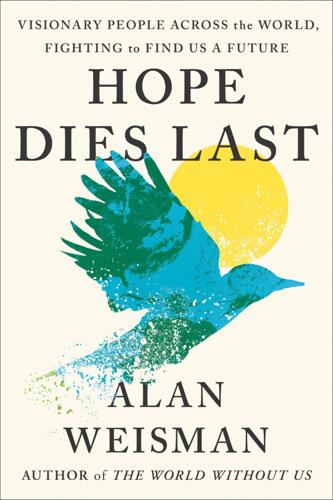
Hope Dies Last: Visionary People Across the World, Fighting to Find Us a Future
by
Alan Weisman
Published 21 Apr 2025
Berenbaum, and David Stopak. “Insect Decline in the Anthropocene: Death by a Thousand Cuts.” Proceedings of the National Academy of Sciences 118, no. 2 (2021): e2023989118. https://doi.org/10.1073/pnas.2023989118. Watts, Jonathan. “Stop Biodiversity Loss or We Could Face Our Own Extinction.” The Guardian, November 6, 2018. https://www.theguardian.com/environment/2018/nov/03/stop-biodiversity-loss-or-we-could-face-our-own-extinction-warns-un. Weisman, Alan. “Cat Fight.” Pacific Standard, August/September, 2017. Whitcomb, Theo. “Copper Mine near Tucson Dealt a Blow.” High Country News, June 9, 2022. https://www.hcn.org/articles/south-latest-copper-mine-near-tucson-dealt-a-blow.
…
“I was working in social compliance,” he says. “I realized sugar, cocoa, and tea essentially depend on modern slavery: 40 million people kept in misery, three times more than America imported from Africa. Hundreds of millions are polluted and starving. Our supply chains drive climate change and biodiversity loss. Intensive agriculture destroys the soil and uses up the water. I realized there is no solution.” On land, that is. In 2020 Doumeizel’s UN initiative published the “Seaweed Manifesto,” endorsed by the secretary-general, to convince us to make an enormous dietary leap for the planet’s health and our own.
…
The Conversation, September 30, 2020. https://theconversation.com/the-arctic-hasnt-been-this-warm-for-3-million-years-and-that-foreshadows-big-changes-for-the-rest-of-the-planet-144544. Byrd, Deborah. “Methane Release Likely Caused Mystery Crater on Yamal Peninsula.” EarthSky, July 31, 2014. https://earthsky.org/earth/second-mysterious-crater-reported-from-yamal. Cafaro, Philip, Pernilla Hansson, and Frank Götmark. “Overpopulation Is a Major Cause of Biodiversity Loss and Smaller Human Populations Are Necessary to Preserve What Is Left.” Biological Conservation 272 (2022): 109646. Center for Climate Repair at Cambridge. https://web.archive.org/web/20220628222434/https:/www.climaterepair.cam.ac.uk/marine-cloud-brightening-mcb. Ceres. https://www.ceres.org.

This Is Not a Drill: An Extinction Rebellion Handbook
by
Extinction Rebellion
Published 12 Jun 2019
We believe that we must now take radical action to reduce the very worst effects of climate breakdown and, in doing so, reform and extend our broken democracy. We therefore have three key demands: 1/ the government must tell the truth by declaring a climate and ecological emergency, working with other institutions to communicate the urgency for change 2/ the government must act now to halt biodiversity loss and reduce greenhouse-gas emissions to net zero by 2025 3/ The government must create and be led by the decisions of a Citizens’ Assembly on climate and ecological justice These demands have been adapted by different international groups in accordance with our decentralized system of governance.
…
Change won’t come from above but from below – and change cannot happen unless it addresses the monstrous injustices that are built into our highly destructive, unsustainable, high-carbon economy. An economy in which the wealthiest 10 per cent are responsible for more than half of all greenhouse-gas emissions. One based on an industrialized farming system that destroys forests, decarbonizes and depletes soil, drives biodiversity loss and yet, globally, receives hundreds of billions in taxpayer subsidies. Above all, an economy sustained by a finance sector that fuels endless consumption with seemingly endless credit – all in the name of vast capital gains, regardless of the ecological cost to both this generation and future generations.
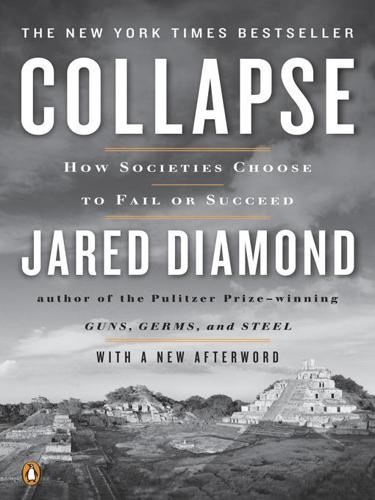
Collapse: How Societies Choose to Fail or Succeed
by
Jared Diamond
Published 2 Jan 2008
Montana’s environmental problems today include almost all of the dozen types of problems that have undermined pre-industrial societies in the past, or that now threaten societies elsewhere in the world as well. Particularly conspicuous in Montana are problems of toxic wastes, forests, soils, water (and sometimes air), climate change, biodiversity losses, and introduced pests. Let’s begin with seemingly the most transparent problem, that of toxic wastes. While concern is mounting in Montana about runoff of fertilizer, manure, septic tank contents, and herbicides, by far the biggest toxic waste issue is posed by residues from metal mining, some of it from the last century and some of it recent or ongoing.
…
They force farmers to change many practices simultaneously: pulling out weeds, applying herbicides, changing fertilizer use, releasing insect and fungus enemies of weeds, lighting controlled fires, changing mowing schedules, and altering crop rotations and annual grazing practices. All that because of a few small plants whose dangers were mostly unappreciated at the time, and some of whose seeds arrived unnoticed! Thus, seemingly pristine Montana actually suffers from serious environmental problems involving toxic wastes, forests, soils, water, climate change, biodiversity losses, and introduced pests. All of these problems translate into economic problems. They provide much of the explanation for why Montana’s economy has been declining in recent decades to the point where what was formerly one of our richest states is now one of the poorest. Whether or how these problems become resolved will depend on the attitudes and values that Montanans hold.
…
It has the world’s highest production rate of steel, cement, aquacultured food, and television sets; both the highest production and the highest consumption of coal, fertilizers, and tobacco; it stands near the top in production of electricity and (soon) motor vehicles, and in consumption of timber; and it is now building the world’s largest dam and largest water-diversion project. Marring these superlatives and achievements, China’s environmental problems are among the most severe of any major country, and are getting worse. The long list ranges from air pollution, biodiversity losses, cropland losses, desertification, disappearing wetlands, grassland degradation, and increasing scale and frequency of human-induced natural disasters, to invasive species, overgrazing, river flow cessation, salinization, soil erosion, trash accumulation, and water pollution and shortages. These and other environmental problems are causing enormous economic losses, social conflicts, and health problems within China.
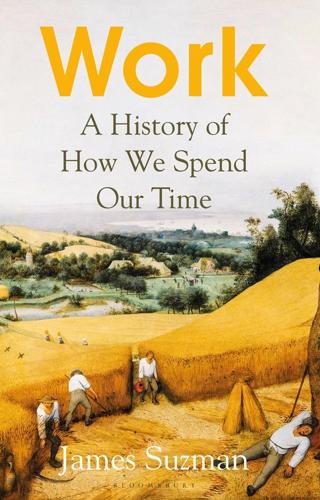
Work: A History of How We Spend Our Time
by
James Suzman
Published 2 Sep 2020
The evidence is now so overwhelming that debate within the scientific community on the scale of human impact on our planet has shifted to asking whether the current geological era merits being redubbed the Anthropocene – the human era. In John Maynard Keynes’s economic utopia, there was no anthropogenic climate change. Nor was there ocean acidification or large-scale biodiversity loss. But if there were, it would almost certainly be under better control than it is now. His utopia was, after all, a place where the scientific method was respected, scientists were admired, and laypeople paid serious heed to their warnings. But more importantly, it was a place where meeting the energy-expensive ‘relative needs’ that animate our urge to consume had diminished to the point that people were no longer inclined to periodically upgrade and replace everything they owned simply to keep the wheels of commerce turning.
…
Indeed, a huge number of people have found it easier to question the integrity of hard science, rather than ask the challenging questions about soft economics that sustainability raises. It is unsurprising, however, that many initiatives aimed at addressing anthropogenic climate change and biodiversity loss have had to try to justify their existence in terms of the very principles of the economics responsible for them in the first place. Thus well-heeled hunters gun down lions, elephants and a host of other wildlife, persuaded that they are supporting a handful of jobs that wouldn’t otherwise exist while simultaneously raising revenues used to protect these species; marine biologists argue for efforts to restore bleached coral reefs by reference to the economic impacts likely to be associated with their destruction; environmentalists debate the fate of functioning ecosystems with politicians by invoking the ‘services’ these ecosystems undertake on our behalf; and climatologists find themselves trying to make the ‘business case’ for reducing carbon emissions or mitigating climate change impacts.
…
In this sense, he was not so different from people like Karl Marx and Emile Durkheim, both of whom believed that, in the end, history would somehow sort itself out, even if they had very different views about how that would happen. While Keynes could not have imagined the scale and risks associated with anthropogenic climate change and biodiversity loss because of our efforts to solve the economic problem, being a fan of Robert Malthus he would have understood it immediately. Where history is a better guide to the future is on the nature of change. It reminds us that we are a stubborn species: one that is deeply resistant to making profound changes in our behaviour and habits, even when it is clear that we need to do so.
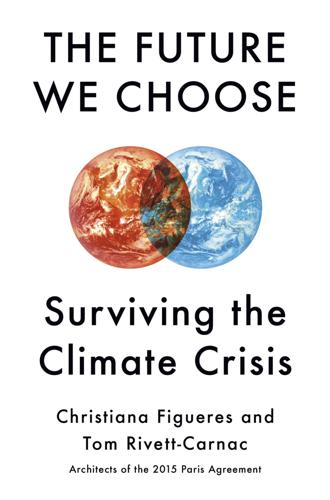
The Future We Choose: Surviving the Climate Crisis
by
Christiana Figueres
and
Tom Rivett-Carnac
Published 25 Feb 2020
With humans gone, the plants started to grow back, supporting worms and fungi that nourished the soil. Birdsong is now abundant and even large mammals like boars and bears have returned. If we remove the pressures we have wielded, nature tends to return to health. The converging crises of climate change, deforestation, biodiversity loss, desertification, and acidification of the oceans have taken us to the point where we can no longer naïvely depend on the Earth’s natural resilience or capacity to recuperate. While nature is innately restorative, regeneration does not always occur completely on its own. Right now, we have almost extinguished nature’s capacity for self-renewal.
…
Rémi d’Annunzio, Marieke Sandker, Yelena Finegold, and Zhang Min, “Projecting Global Forest Area Towards 2030,” Forest Ecology and Management 352 (2015): 124–33, https://www.sciencedirect.com/science/article/pii/S0378112715001346; John Vidal, “We Are Destroying Rainforests So Quickly They May Be Gone in 100 Years,” Guardian (U.S. edition), January 23, 2017, https://www.theguardian.com/global-development-professionals-network/2017/jan/23/destroying-rainforests-quickly-gone-100-years-deforestation. 7. Josh Gabbatiss, “Earth Will Take Millions of Years to Recover from Climate Change Mass Extinction, Study Suggests,” Independent, April 8, 2019, https://www.independent.co.uk/environment/mass-extinction-recovery-earth-climate-change-biodiversity-loss-evolution-a8860326.html. 8. Richard Gray, “Sixth Mass Extinction Could Destroy Life as We Know It—Biodiversity Expert,” Horizon, March 4, 2019, https://horizon-magazine.eu/article/sixth-mass-extinction-could-destroy-life-we-know-it-biodiversity-expert.html; Gabbatiss, “Earth Will Take Millions of Years.” 9.
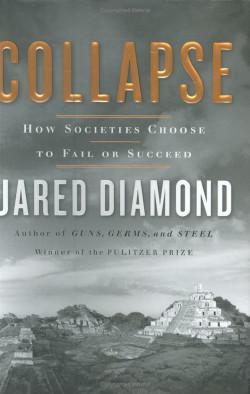
Collapse
by
Jared Diamond
Published 25 Apr 2011
Montana's environmental problems today include almost all of the dozen types of problems that have undermined pre-industrial societies in the past, or that now threaten societies elsewhere in the world as well. Particularly conspicuous in Montana are problems of toxic wastes, forests, soils, water (and sometimes air), climate change, biodiversity losses, and introduced pests. Let's begin with seemingly the most transparent problem, that of toxic wastes. While concern is mounting in Montana about runoff of fertilizer, manure, septic tank contents, and herbicides, by far the biggest toxic waste issue is posed by residues from metal mining, some of it from the last century and some of it recent or ongoing.
…
They force farmers to change many practices simultaneously: pulling out weeds, applying herbicides, changing fertilizer use, releasing insect and fun-gus enemies of weeds, lighting controlled fires, changing mowing schedules, and altering crop rotations and annual grazing practices. All that because of a few small plants whose dangers were mostly unappreciated at the time, and some of whose seeds arrived unnoticed! Thus, seemingly pristine Montana actually suffers from serious environmental problems involving toxic wastes, forests, soils, water, climate change, biodiversity losses, and introduced pests. All of these problems translate into economic problems. They provide much of the explanation for why Montana's economy has been declining in recent decades to the point where what was formerly one of our richest states is now one of the poorest. Whether or how these problems become resolved will depend on the attitudes and values that Montanans hold.
…
It has the world's highest production rate of steel, cement, aquacultured food, and television sets; both the highest production and the highest consumption of coal, fertilizers, and tobacco; it stands near the top in production of electricity and (soon) motor vehicles, and in consumption of timber; and it is now building the world's largest dam and largest water-diversion project. Marring these superlatives and achievements, China's environmental problems are among the most severe of any major country, and are getting worse. The long list ranges from air pollution, biodiversity losses, cropland losses, desertification, disappearing wetlands, grassland degradation, and increasing scale and frequency of human-induced natural disasters, to invasive species, overgrazing, river flow cessation, salinization, soil erosion, trash accumulation, and water pollution and shortages. These and other environmental problems are causing enormous economic losses, social conflicts, and health problems within China.
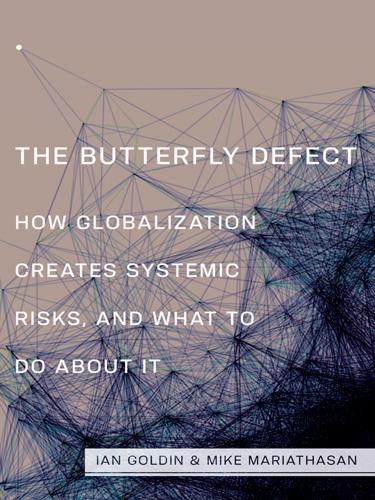
The Butterfly Defect: How Globalization Creates Systemic Risks, and What to Do About It
by
Ian Goldin
and
Mike Mariathasan
Published 15 Mar 2014
James Stafford, 2012, “Tom Murphy Interview: Resource Depletion Is a Bigger Threat Than Climate Change,” Oilprice.com, 22 March, accessed 18 August, http://oilprice.com/Interviews/Tom-Murphy-Interview-Resource-Depletion-is-a-Bigger-Threat-than-Climate-Change.html. 17. See, for example, Ian Goldin, ed., forthcoming, Is the Planet Full? (Oxford, UK: Oxford University Press). 18. OECD, 2003a, 42. 19. Monitira J. Pongsiri et al., 2009, “Biodiversity Loss Affects Global Disease Ecology,” BioScience 59 (11): 945–954, quote on 945. 20. Nick Nuttall, 2004, “Overfishing: A Threat to Marine Biodiversity,” Ten Stories, United Nations website, accessed 14 April 2012, http://www.un.org/events/tenstories/06/story.asp?storyID=800. 21. OECD, 2003a, 42. 22.
…
Theory and Society 38 (3): 217–243. Peters, Kai, and Narendra Laljani. 2009. “The Evolving MBA.” Global Study Magazine 4 (3): 36–49. Pongsiri, Monitira J., Joe Roman, Vanessa O. Ezenwa, Tony L. Goldberg, Hillel S. Koren, Stephen C. Newbold, Richard S. Ostfeld, Subhrendu K. Pattanayak, and Daniel J. Salkeld. 2009. “Biodiversity Loss Affects Global Disease Ecology.” BioScience 59 (11): 945–954. Prasad, Eswar S., Kenneth Rogoff, Shang-Jin Wei, and M. Ayan Kose. 2003. “Effects of Financial Globalization on Developing Countries: Some Empirical Evidence.” IMF Occasional Paper 220. International Monetary Fund, Washington, DC.
…
See Global Public Health Intelligence Network Gramm, Phil, 48, 49 Gramm-Leach-Bliley Act of 1999, 48, 49 Great Moderation, 50 Greece: debt crisis in, 10, 188, 192; elections in, 186–87; extremist parties in, 187, 188, 192; inequality in, 172 greenhouse gas emissions: economic development and, 134, 136–37; effects of, 133, 134; increases in, 129, 133–34, 135f, 136f; reduction of, 187; sources of, 106, 134, 135f, 136; by world region, 134, 136f. See also climate change Group of Thirty, 204, 210 hackers, 114, 115. See also cyber risks Haiti, 123, 206 Haldane, Andrew G., 50, 54, 57, 63, 68 Hammond, Ross A., 121 health/disease system, 127 health risks: biodiversity loss and, 132; of climate change, 129–30; genetic disorders, 159–60; globalization and, 144, 145–49, 158–60, 163; of “lifestyle” diseases, 159; management of, 144–45, 148–49, 160–67, 214; new, 145; of noninfectious diseases, 159–60; systemic, 146–47; in urban areas, 29, 148. See also pandemics; viruses hedging transactions, 42b, 45 herding behavior, in financial markets, 58–59 HIV/AIDS, 145, 152–53, 162 Hong Kong: bird flu in, 154–56; SARS in, 144, 155f Hong Kong flu, 152.
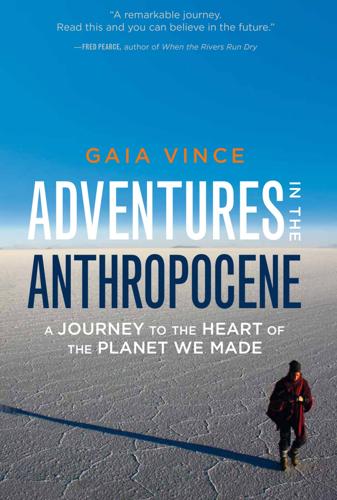
Adventures in the Anthropocene: A Journey to the Heart of the Planet We Made
by
Gaia Vince
Published 19 Oct 2014
For example, glacier melt at the poles could reach a tipping point at which sudden runaway melting occurs and sea level rises by metres. Fears of big changes like these have led some scientists to describe ‘planetary boundaries’ – biophysical limits for human safety, such as the extent of land-use change and biodiversity loss – some of which they say we’ve already exceeded.10 In leaving the relative safety of stable Holocene conditions, it is clear that humans face unprecedented challenges. The key here is how we will deal with the consequences. It may have been desirable to keep within the internationally agreed ‘safe’ global-warming limit of 2°C (above pre-industrial levels), for example, but we will almost certainly exceed that by the end of this century, and so the question becomes how we can live in the warmer Anthropocene environment.11 We have always altered ecosystems to serve our needs and presumably will continue to do so.
…
The indigenous tribes that were evicted for the creation of Yellowstone National Park – 300 people were killed in a single day – were an intrinsic part of the Holocene ecosystem, and when they were removed, it meant there was no top predator and no one to manage the vegetation through regular burnings which prevent devastating wildfires. As a result, ungulates overbred, eating saplings unsustainably, and the area suffered biodiversity loss. Park managers – for without a functioning ecosystem, these ‘natural’ areas must be managed by humans – have since tried reintroducing wolves to replace the human top predator and keep the ungulates in check. But here they have run into trouble, because while the park might be a human-free attempt at the Pleistocene, the rest of the country is very much living in the populated Anthropocene, and farmers don’t appreciate their cattle being eaten by predators that their ancestors successfully eliminated centuries ago.
…
At the same time, warmer temperatures have led to an increase in beetle infestation and fires in boreal forests, so they have become net emitters of carbon dioxide.3 Only the new regrowth forests in the abandoned farmlands of Europe and the US have tipped the balance in favour of soaking up carbon dioxide. In the Anthropocene, forests have never been more threatened, and yet, in the wake of global warming, biodiversity loss and water shortages, they have never been more necessary. The laid-back settlement of Rurrenabaque, in the Amazon lowlands of Bolivia, is surrounded by lush karsts, the foothills of the Andes, and perched on the edge of the rushing Beni River. Once the daytime scooters and market chitter-chatter have ceased, the damp air saturates with the noise of frogs and cicadas, bird whistles and bat clicks – the sounds of the Amazon rainforest.
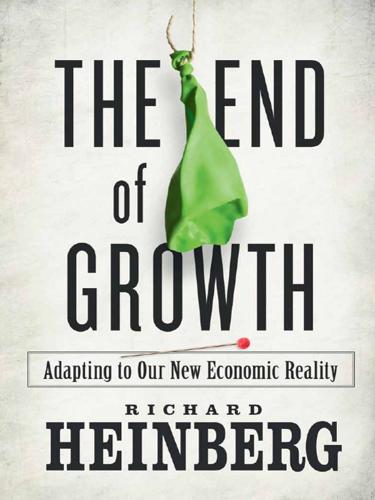
The End of Growth: Adapting to Our New Economic Reality
by
Richard Heinberg
Published 1 Jun 2011
According to one recent study, one in five plant species faces extinction as a result of climate change, deforestation, and urban growth.103 Many species have existing or potential economically significant uses; the yew tree, for instance, was until recently considered a “trash tree,” but is now the source for taxol, relied on by tens of thousands of people as a life-saving treatment for breast, prostate, and ovarian cancers. Sales of the drug have amounted to as much as $1.6 billion in some recent years.104 As species disappear, potential uses and economic rewards disappear with them. Another study, this one by the UN, has determined that businesses and insurance companies now see biodiversity loss as presenting a greater risk of financial loss than terrorism — a problem that governments currently spend hundreds of billions of dollars per year to contain or prevent.105 Non-human species perform ecosystem services that only indirectly benefit our kind, but in ways that turn out to be crucial.
…
The report’s authors noted that EU environmental policy had “delivered substantial improvements,” but added: “major environmental challenges remain, which will have significant consequences for Europe if left unaddressed.” For example, while Europe’s network of protected areas and habitats has expanded to cover about 18 percent of the continent’s landmass, the EU has failed to meet its target to halt biodiversity loss by 2010. The report, according to its executive summary, “does not present any warnings of imminent environmental collapse. However, it does note that some local and global thresholds are being crossed, and that negative environmental trends could lead to dramatic and irreversible damage to some of the ecosystems and services that we take for granted.”112 A 2010 study by Pavan Sukhdev, a former banker, to determine a price for the world’s environmental assets, concluded that the annual destruction of rainforests entails an ultimate cost to society of $4.5 trillion — $650 for each person on the planet.
…
Currently human efforts along these lines (ignoring, for the moment, the natural ongoing carbon capturing processes in soils, forests, and oceans) are making only an insignificant difference in the rate of growth in atmospheric greenhouse gases. 102. Heinberg, Searching for a Miracle. 103. Juliette Jowit, “One in Five Plant Species Face Extinction,” The Guardian, September 29, 2010. 104. Frank Stephenson, “A Tale of Taxol,” Florida State University, Research in Review, rinr.fsu.edu/fall2002/taxol.html. 105. Jonathan Watts, “Biodiversity Loss Seen As Greater Financial Risk Than Terrorism,” The Guardian, October 27, 2010. 106. Richard Black, “Plankton Decline Across Oceans As Waters Warm,” BBC News, posted July 28, 2010. 107. Peter Tatchell, “The Oxygen Crisis,” The Guardian, August 13, 2008. 108. Matt Chorley, “$5,000,000,000,000: The Cost Each Year of Vanishing Rainforest,” The Independent, October 3, 2010. 109.

Living in a Material World: The Commodity Connection
by
Kevin Morrison
Published 15 Jul 2008
The focus on wetlands, endangered species and biodiversity is another aspect of climate change. The Millennium Ecosystem Assessment Board, established by the UN to monitor world biodiversity loss, said: ‘The current rate of biodiversity loss, in aggregate and at a global scale, gives no indication of slowing, although there have been CLIMATE | 157 local successes in some groups of species. The momentum of the underlying drivers of biodiversity loss, and the consequences of this loss, will extend many millennia into the future’ (Millennium Ecosystem Assessment, 2005). Adam Davis, a partner in The Sustainable Land Fund – an investor in environmental projects – said every improvement in the environment is worth money.

Numbers Don't Lie: 71 Stories to Help Us Understand the Modern World
by
Vaclav Smil
Published 4 May 2021
Why unemployment figures do not tell the whole story Many economic statistics are notoriously unreliable, and the reason often has to do with what is included in the measurement and what is left out. Gross domestic product offers a good example of a measure that leaves out key environmental externalities such as air and water pollution, soil erosion, biodiversity loss, and the effects of climate change. Unemployed men lining up for food during the Great Depression Measuring unemployment is also an exercise in exclusion, and the choices are perhaps best illustrated with detailed data from the United States. Casual consumers of US economic news will be familiar only with the official figure, which put the country’s total unemployment at 3.5 percent in December 2019.
…
It rises not only when lives get better and economies progress but also when bad things happen to people or to the environment. Higher alcohol sales, more driving under the influence, more accidents, more emergency-room admissions, more injuries, more people in jail—GDP goes up. More illegal logging in the tropics, more deforestation and biodiversity loss, higher timber sales—again, GDP goes up. We know better, but we still worship high annual GDP growth rate, regardless of where it comes from. Human minds have many irrational preferences: we love to speculate about wild and crazy innovations but cannot be bothered to fix common challenges by relying on practical innovation waiting to be implemented.
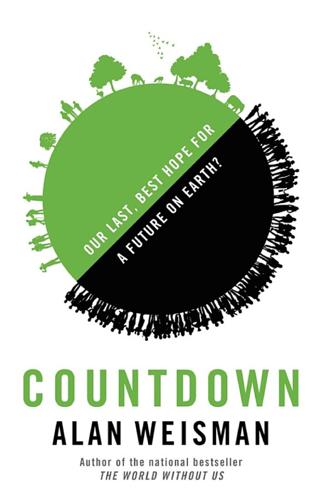
Countdown: Our Last, Best Hope for a Future on Earth?
by
Alan Weisman
Published 23 Sep 2013
The paper they published in the journal Nature—versions also appeared in Ecology and Society and in Scientific American—identified nine planetary boundaries, beyond which the world would enter a phase shift that could prove cataclysmic for humanity. They acknowledged that, while based on the best science available, these were “rough, first estimates only, surrounded by large uncertainties and knowledge gaps” that will require major scientific advancements to fill. The nine boundaries were climate change, biodiversity loss, disruption of global nitrogen and phosphorus cycles, ozone depletion, ocean acidification, freshwater use, changes in land use, chemical pollution, and atmospheric particulates. Behind each of these was the same unspoken cause: cumulative human presence, for which they did not hazard a boundary.
…
Another worry about phosphorus, however, is that this essential mineral nutrient is scarce in the planet’s soils, and deposits in Pacific guano atolls and Florida limestone formations are nearly spent. Only one plentiful source remains, in Morocco and neighboring Western Sahara, a barely functioning state whose future stability has agronomists everywhere concerned.) The third was biodiversity loss. Before the Industrial Revolution, the fossil record suggests, 0.1 to 1 species per million went extinct annually. The acceptable limit they proposed was 10. The actual current loss is at least 100 missing species per million, a figure widely feared to rise tenfold this century. Nothing remotely similar has happened since an asteroid did away with the dinosaurs.
…
Population and Environment: A Journal of Interdisciplinary Studies, vol. 12, no. 3 (Spring 1991): 339–49. Heller, Karen. “Some Family-Planning Wisdom from Nixon.” Philadelphia Inquirer, April 13, 2011. Hooper, David U., E. Carol Adair, Bradley J. Cardinale, Jarrett E. K. Byrnes, Bruce A. Hungate, et al. “A Global Synthesis Reveals Biodiversity Loss as a Major Driver of Ecosystem Change.” Nature, vol. 486 (June 2012): 105–8. Horton, Tom. “Concerns over U.S. Population Growth Date Back to Nixon Era.” Chesapeake Bay Journal, April 2012. IAP: The Global Network of Science Academies. Statement on Population and Consumption, June 2012. Johnson, Robert.

Prosperity Without Growth: Foundations for the Economy of Tomorrow
by
Tim Jackson
Published 8 Dec 2016
This is a completely different kind of economy than the one we have at the moment, which drives itself forward by using up more and more materials and emitting more and more carbon into the atmosphere. Stark choices Playing with numbers may seem like dancing angels on the head of a pin. But simple arithmetic reveals stark choices. Are we really committed to eradicating poverty? Are we serious about reducing carbon emissions? Do we genuinely care about resource scarcity, deforestation, biodiversity loss? Or are we so blinded by economic growth that we daren’t do the sums for fear of revealing the truth? The Paris Agreement was an extraordinary moment of unprecedented commitment to combat climate change. But our current direction of travel is entirely wrong. Emissions and resource use are rising not falling.
…
INDEX Locators in italic refer to figures absolute decoupling 84–6; historical perspectives 89–96, 90, 92, 94, 95; mathematical relationship with relative decoupling 96–101, 111 abundance see opulence accounting errors, decoupling 84, 91 acquisition, instinctive 68 see also symbolic role of goods adaptation: diminishing marginal utility 51, 68; environmental 169; evolutionary 226 advertising, power of 140, 203–4 Africa 73, 75–7; life-expectancy 74; philosophy 227; pursuit of western lifestyles 70; growth 99; relative income effect 58, 75; schooling 78 The Age of Turbulence (Greenspan) 35 ageing populations 44, 81 agriculture 12, 148, 152, 220 Aids/HIV 77 algebra of inequality see inequality; mathematical models alienation: future visions 212, 218–19; geographical community 122–3; role of the state 205; selfishness vs. altruism 137; signals sent by society 131 alternatives: economic 101–2, 139–40, 157–8; hedonism 125–6 see also future visions; post-growth macroeconomics; reform altruism 133–8, 196, 207 amenities see public services/amenities Amish community, North America 128 An Inquiry into the Nature and Causes of the Wealth of Nations (Smith) 123, 132 angelised growth see green growth animal welfare 220 anonymity/loneliness see alienation anthropological perspectives, consumption 70, 115 anti-consumerism 131 see also intrinsic values anxiety: fear of death 69, 104, 115, 212–15; novelty 116–17, 124, 211 Argentina 58, 78, 78, 80 Aristotle 48, 61 The Art of Happiness (Dalai Lama) 49 arts, Baumol’s cost disease 171–2 assets, stranded 167–8 see also ownership austerity policies xxxiii–xxxv, 189; and financial crisis 24, 42–3; mathematical models 181 Australia 58, 78, 128, 206 authoritarianism 199 autonomy see freedom/autonomy Ayres, Robert 143 backfire effects 111 balance: private interests/common good 208; tradition/innovation 226 Bank for International Settlements 46 bank runs 157 banking system 29–30, 39, 153–7, 208; bonuses 37–8 see also financial crisis; financial system basic entitlements: enterprise as service 142; income 67, 72–9, 74, 75, 76, 78; limits to growth 63–4 see also education; food; health Basu, Sanjay 43 Baumol, William 112, 147, 222, 223; cost disease 170, 171, 172, 173 BBC survey, geographical community 122–3 Becker, Ernest 69 Belk, Russ 70, 114 belonging 212, 219 see also alienation; community; intrinsic values Bentham, Jeremy 55 bereavement, material possessions 114, 214–15 Berger, Peter 70, 214 Berry, Wendell 8 Better Growth, Better Climate (New Climate Economy report) 18 big business/corporations 106–7 biodiversity loss 17, 47, 62, 101 biological perspectives see evolutionary theory; human nature/psyche biophysical boundaries see limits (ecological) Black Monday 46 The Body Economic (Stuckler and Basu) 43 bond markets 30, 157 bonuses, banking 37–8 Bookchin, Murray 122 boom-and-bust cycles 157, 181 Booth, Douglas 117 borrowing behaviour 34, 118–21, 119 see also credit; debt Boulding, Elise 118 Boulding, Kenneth 1, 5, 7 boundaries, biophysical see limits (ecological) bounded capabilities for flourishing 61–5 see also limits (flourishing within) Bowen, William 147 Bowling Alone (Putnam) 122 Brazil 58, 88 breakdown of community see alienation; social stability bubbles, economic 29, 33, 36 Buddhist monasteries, Thailand 128 buen vivir concept, Ecuador xxxi, 6 built-in obsolescence 113, 204, 220 Bush, George 121 business-as-usual model 22, 211; carbon dioxide emissions 101; crisis of commitment 195; financial crisis 32–8; growth 79–83, 99; human nature 131, 136–7; need for reform 55, 57, 59, 101–2, 162, 207–8, 227; throwaway society 113; wellbeing 124 see also financial systems Canada 75, 206, 207 capabilities for flourishing 61–5; circular flow of the economy 113; future visions 218, 219; and income 77; progress measures 50–5, 54; role of material abundance 67–72; and prosperity 49; relative income effect 55–61, 58, 71, 72; role of shame 123–4; role of the state 200 see also limits (flourishing within); wellbeing capital 105, 107–10 see also investment Capital in the 21st Century (Piketty) 33, 176, 177 Capital Institute, USA 155 capitalism 68–9, 80; structures 107–13, 175; types 105–7, 222, 223 car industry, financial crisis 40 carbon dioxide emissions see greenhouse gas emissions caring professions, valuing 130, 147, 207 see also social care Cat on a Hot Tin Roof (Williams) 213 causal path analysis, subjective wellbeing 59 Central Bank 154 central human capabilities 64 see also capabilities for flourishing The Challenge of Affluence (Offer) 194 change see alternatives; future visions; novelty/innovation; post-growth macroeconomics; reform Chicago school of economics 36, 156 children: advertising to 204; labour 62, 154; mortality 74–5, 75, 206 Chile xxxiii, xxxvii, 58, 74, 74, 75, 76 China: decoupling 88; GDP per capita 75; greenhouse gas emissions 91; growth 99; life expectancy 74; philosophy 7; post-financial crisis 45–6; pursuit of western lifestyles 70; relative income effect 58; resource use 94; savings 27; schooling 76 choice, moving beyond consumerism 216–18 see also freedom/autonomy Christian doctrine see religious perspectives chromium, commodity price 13 Cinderella economy 219–21, 224 circular economy 144, 220 circular flow of the economy 107, 113 see also engine of growth citizen’s income 207 see also universal basic income civil unrest see social stability Clean City Law, São Paulo 204 climate change xxxv, 22, 47; critical boundaries 17–20; decoupling 85, 86, 87, 98; fatalism 186; investment needs 152; role of the state 192, 198, 201–2 see also greenhouse gas emissions Climate Change Act (2008), UK 198 clothing see basic entitlements Club of Rome, Limits to Growth report xxxii, xxxiii, 8, 11–16, Cobb, John 54 collectivism 191 commercial bond markets 30, 157 commitment devices/crisis of 192–5, 197 commodity prices: decoupling 88; financial crisis 26; fluctuation/volatility 14, 21; resource constraints 13–14 common good: future visions 218, 219; vs. freedom and autonomy 193–4; vs. private interests 208; role of the state 209 common pool resources 190–2, 198, 199 see also public services/amenities communism 187, 191 community: future visions of 219–20; geographical 122–3; investment 155–6, 204 see also alienation; intrinsic values comparison, social 115, 116, 117 see also relative income effect competition 27, 112; positional 55–61, 58, 71, 72 see also struggle for existence complexity, economic systems 14, 32, 108, 153, 203 compulsive shopping 116 see also consumerism Conference of the Parties to the UN Framework Convention on Climate Change (CoP21) 19 conflicted state 197, 201, 209 connectedness, global 91, 227 conspicuous consumption 115 see also language of goods consumer goods see language of goods; material goods consumer sovereignty 196, 198 consumerism 4, 21, 22, 103–4, 113–16; capitalism 105–13, 196; choice 196; engine of growth 104, 108, 120, 161; existential fear of death 69, 212–15; financial crisis 24, 28, 39, 103; moving beyond 216–18; novelty and anxiety 116–17; post-growth economy 166–7; role of the state 192–3, 196, 199, 202–5; status 211; tragedy of 140 see also demand; materialism contemplative dimensions, simplicity 127 contraction and convergence model 206–7 coordinated market economies 27, 106 Copenhagen Accord (2009) 19 copper, commodity prices 13 corporations/big business 106–7 corruption 9, 131, 186, 187, 189 The Cost Disease: Why Computers get Cheaper and Health Care Doesn’t (Baumol) 171, 172 Costa Rica 74, 74, 76 countercyclical spending 181–2, 182, 188 crafts/craft economies 147, 149, 170, 171 creative destruction 104, 112, 113, 116–17 creativity 8, 79; and consumerism 113, 116; future visions 142, 144, 147, 158, 171, 200, 220 see also novelty/innovation credit, private: deflationary forces 44; deregulation 36; financial crisis 26, 27, 27–31, 34, 36, 41; financial system weaknesses 32–3, 37; growth imperative hypothesis 178–80; mortgage loans 28–9; reforms in financial system 157; spending vs. saving behaviour of ordinary people 118–19; and stimulation of growth 36 see also debt (public) credit unions 155–6 crises: of commitment 192–5; financial see financial crisis critical boundaries, biophysical see limits (ecological) Csikszentmihalyi, Mihalyi 127 Cuba: child mortality 75; life expectancy 74, 77, 78, 78; response to economic hardship 79–80; revolution 56; schooling 76 Cushman, Philip 116 Dalai Lama 49, 52 Daly, Herman xxxii, 54, 55, 160, 163, 165 Darwin, Charles 132–3 Das Kapital (Marx) 225 Davidson, Richard 49 Davos World Economic Forum 46 Dawkins, Richard 134–5 de Mandeville, Bernard 131–2, 157 death, denial of 69, 104, 115, 212–15 debt, public-sector 81; deflationary forces 44; economic stability 81; financial crisis 24, 26–32, 27, 37, 41, 42, 81; financial systems 28–32, 153–7; money creation 178–9; post-growth economy 178–9, 223 Debt: The First Five Thousand Years (Graeber) 28 decoupling xix, xx, xxxvii, 21, 84–7; dilemma of growth 211; efficiency measures 84, 86, 87, 88, 95, 104; green growth 163, 163–5; historical perspectives 87–96, 89, 90, 92, 94, 95; need for new economic model 101–2; relationship between relative and absolute 96–101 deep emission and resource cuts 99, 102 deficit spending 41, 43 deflationary forces, post-financial crisis 43–7, 45 degrowth movement 161–3, 177 demand 104, 113–16, 166–7; post-financial crisis 44–5; post-growth economy 162, 164, 166–9, 171–2, 174–5 dematerialisation 102, 143 democratisation, and wellbeing 59 deposit guarantees 35 deregulation 27, 34, 36, 196 desire, role in consumer behaviour 68, 69, 70, 114 destructive materialism 104, 112, 113, 116–17 Deutsche Bank 41 devaluation of currency 30, 45 Dichter, Ernest 114 digital economy 44, 219–20 dilemma of growth xxxi, 66–7, 104, 210; basic entitlements 72–9, 74, 75, 76, 78; decoupling 85, 87, 164; degrowth movement 160–3; economic stability 79–83, 174–6; material abundance 67–72; moving beyond 165, 166, 183–4; role of the state 198 diminishing marginal utility: alternative hedonism 125, 126; wellbeing 51–2, 57, 60, 73, 75–6, 79 disposable incomes 27, 67, 118 distributed ownership 223 Dittmar, Helga 126 domestic debt see credit dopamine 68 Dordogne, mindfulness community 128 double movement of society 198 Douglas, Mary 70 Douthwaite, Richard 178 downshifting 128 driving analogy, managing change 16–17 durability, consumer goods 113, 204, 220 dynamic systems, managing change 16–17 Eastern Europe 76, 122 Easterlin, Richard 56, 57, 59; paradox 56, 58 eco-villages, Findhorn community 128 ecological investment 101, 166–70, 220 see also investment ecological limits see limits (ecological) ecological (ecosystem) services 152, 169, 223 The Ecology of Money (Douthwaite) 178 economic growth see growth economic models see alternatives; business-as-usual model; financial systems; future visions; mathematical models; post-growth macroeconomics economic output see efficiency; productivity ‘Economic possibilities for our grandchildren’ (Keynes) 145 economic stability 22, 154, 157, 161; financial system weaknesses 34, 35, 36, 180; growth 21, 24, 67, 79–83, 174–6, 210; post-growth economy 161–3, 165, 174–6, 208, 219; role of the state 181–3, 195, 198, 199 economic structures: post-growth economy 227; financial system reforms 224; role of the state 205; selfishness 137 see also business-as-usual model; financial systems ecosystem functioning 62–3 see also limits (ecological) ecosystem services 152, 169, 223 Ecuador xxxi, 6 education: Baumol’s cost disease 171, 172; and income 67, 76, 76; investment in 150–1; role of the state 193 see also basic entitlements efficiency measures 84, 86–8, 95, 104, 109–11, 142–3; energy 41, 109–11; growth 111, 211; investment 109, 151; of scale 104 see also labour productivity; relative decoupling Ehrlich, Paul 13, 96 elasticity of substitution, labour and capital 177–8 electricity grid 41, 151, 156 see also energy Elgin, Duane 127 Ellen MacArthur Foundation 144 emissions see greenhouse gas emissions employee ownership 223 employment intensity vs. carbon dioxide emissions 148 see also labour productivity empty self 116, 117 see also consumerism ends above means 159 energy return on investment (EROI) 12, 169 energy services/systems 142: efficiency 41, 109–11; inputs/intensity 87–8, 151; investment 41, 109–10, 151–2; renewable xxxv, 41, 168–9 engine of growth 145; consumerism 104, 108, 161; services 143, 170–4 see also circular flow of the economy enough is enough see limits enterprise as service 140, 141–4, 158 see also novelty/innovation entitlements see basic entitlements entrepreneur as visionary 112 entrepreneurial state 220 Environmental Assessment Agency, Netherlands 62 environmental quality 12 see also pollution environmentalism 9 EROI (energy return on investment) 12, 169 Essay on the Principle of Population (Malthus) 9–11, 132–3 evolutionary map, human heart 136, 136 evolutionary theory 132–3; common good 193; post-growth economy 226; psychology 133–5; selfishness and altruism 196 exchange values 55, 61 see also gross domestic product existential fear of death 69, 104, 115, 212–15 exponential expansion 1, 11, 20–1, 210 see also growth external debt 32, 42 extinctions/biodiversity loss 17, 47, 62, 101 Eyres, Harry 215 Fable of the Bees (de Mandeville) 131–2 factor inputs 109–10 see also capital; labour; resource use fast food 128 fatalism 186 FCCC (Framework Convention on Climate Change) 92 fear of death, existential 69, 104, 115, 212–15 feedback loops 16–17 financial crisis (2008) 6, 23–5, 32, 77, 103; causes and culpability 25–8; financial system weaknesses 32–7, 108; Keynesianism 37–43, 188; nationalisation of financial sector 188; need for financial reforms 175; role of debt 24, 26–32, 27, 81, 179; role of state 191; slowing of growth 43–7, 45; spending vs. saving behaviour of ordinary people 118–21, 119; types/definitions of capitalism 106; youth unemployment 144–5 financial systems: common pool resources 192; debt-based/role of debt 28–32, 153–7; post-growth economy 179, 208; systemic weaknesses 32–7; and wellbeing 47 see also banking system; business-as-usual model; financial crisis; reform Findhorn community 128 finite limits of planet see limits (ecological) Fisher, Irving 156, 157 fishing rights 22 flourishing see capabilities for flourishing; limits; wellbeing flow states 127 Flynt, Larry 40 food 67 see also basic entitlements Ford, Henry 154 forestry/forests 22, 192 Forrester, Jay 11 fossil fuels 11, 20 see also oil Foucault, Michel 197 fracking 14, 15 Framework Convention on Climate Change (FCCC) 92 France: GDP per capita 58, 75, 76; inequality 206; life-expectancy 74; mindfulness community 128; working hours 145 free market 106: financial crisis 35, 36, 37, 38, 39; ideological controversy/conflict 186–7, 188 freedom/autonomy: vs. common good 193–4; consumer 22, 68–9; language of goods 212; personal choices for improvement 216–18; wellbeing 49, 59, 62 see also individualism Friedman, Benjamin 176 Friedman, Milton 36, 156, 157 frugality 118–20, 127–9, 215–16 fun (more fun with less stuff) 129, 217 future visions 2, 158, 217–21; community banking 155–6; dilemma of growth 211; enterprise as service 140, 141–4, 147–8, 158; entrepreneur as visionary 112; financial crisis as opportunity 25; and growth 165–6; investment 22, 101–2, 140, 149–53, 158, 169, 208; money as social good 140, 153–7, 158; processes of change 185; role of the state 198, 199, 203; timescales for change 16–17; work as participation 140, 144–9, 148, 158 see also alternatives; post-growth macroeconomics; reform Gandhi, Mahatma 127 GDP see gross domestic product gene, selfish 134–5 Genuine Progress Indicator (GPI) 54, 54 geographical community 122–3 Germany xxxi; Federal Ministry of Finance 224–5; inequality 206; relative income effect 58; trade balance 31; work as participation 146 Glass Steagal Act 35 Global Commodity Price Index (1992–2015) 13 global corporations 106–7 global economy 98: culture 70; decoupling 86–8, 91, 93–5, 95, 97, 98, 100; exponential expansion 20–1; inequality 4, 5–6; interconnectedness 91, 227; post-financial crisis slowing of growth 45 Global Research report (HSBC) 41 global warming see climate change Godley, Wynne 179 Goldman Sachs 37 good life 3, 6; moral dimension 63, 104; wellbeing 48, 50 goods see language of goods; material goods; symbolic role of goods Gordon, Robert 44 governance 22, 185–6; commons 190–2; crisis of commitment 192–5, 197; economic stability 34, 35; establishing limits 200–8, 206; growth 195–9; ideological controversy/conflict 186–9; moving towards change 197–200, 220–1; post-growth economy 181–3, 182; power of corporations 106; for prosperity 209; signals 130 government as household metaphor 30, 42 governmentality 197, 198 GPI (Genuine Progress Indicator) 54, 54 Graeber, David 28 Gramm-Leach-Bliley Act 35 Great Depression 39–40 Greece: austerity xxxiii–xxxiv, xxxvii, 43; energy inputs 88; financial crisis 28, 30, 31, 77; life expectancy 74; schooling 76; relative income effect 58; youth unemployment 144 Green Economy initiative 41 green: growth xxxvii, 18, 85, 153, 166, 170; investment 41 Green New Deal, UNEP 40–1, 152, 188 greenhouse gas emissions 18, 85, 86, 91, 92; absolute decoupling 89–92, 90, 92, 98–101, 100; dilemma of growth 210–11; vs. employment intensity 148; future visions 142, 151, 201–2, 220; Kyoto Protocol 18, 90; reduction targets 19–20; relative decoupling 87, 88, 89, 93, 98–101, 100 see also climate change Greenspan, Alan 35 gross domestic product (GDP) per capita 3–5, 15, 54; climate change 18; decoupling 85, 93, 94; financial crisis 27, 28, 32; green growth 163–5; life expectancy 74, 75, 78; as measure of prosperity 3–4, 5, 53–5, 54, 60–1; post-financial crisis 43, 44; post-growth economy 207; schooling 76; wellbeing 55–61, 58 see also income growth xxxvii; capitalism 105; credit 36, 178–80; decoupling 85, 96–101; economic stability 21, 24, 67, 80, 210; financial crisis 37, 38; future visions 209, 223, 224; inequality 177; labour productivity 111; moving beyond 165, 166; novelty 112; ownership 105; post-financial crisis slowing 43–7, 45; prosperity as 3–7, 23, 66; role of the state 195–9; sustainable investment 166–70; wellbeing 59–60; as zero sum game 57 see also dilemma of growth; engine of growth; green growth; limits to growth; post-growth macroeconomy growth imperative hypothesis 37, 174, 175, 177–80, 183 habit formation, acquisition as 68 Hall, Peter 106, 188 Hamilton, William 134 Hansen, James 17 happiness see wellbeing/happiness Happiness (Layard) 55 Hardin, Garrett 190–1 Harvey, David 189, 192 Hayek, Friedrich 187, 189, 191 health: Baumol’s cost disease 171, 172; inequality 72–3, 205–6, 206; investment 150–1; and material abundance 67, 68; personal choices for improvement 217; response to economic hardship 80; role of the state 193 see also basic entitlements Heath, Edward 66, 82 hedonism 120, 137, 196; alternatives 125–6 Hirsch, Fred xxxii–xxxiii historical perspectives: absolute decoupling 86, 89–96, 90, 92, 94, 95; relative decoupling 86, 87–9, 89 Holdren, John 96 holistic solutions, post-growth economy 175 household finances: house purchases 28–9; spending vs. saving behaviour 118–20, 119 see also credit household metaphor, government as 30, 42 HSBC Global Research report 41 human capabilities see capabilities for flourishing human happiness see wellbeing/happiness human nature/psyche 3, 132–5, 138; acquisition 68; alternative hedonism 125; evolutionary map of human heart 136, 136; intrinsic values 131; meaning/purpose 49–50; novelty/innovation 116; selfishness vs. altruism 133–8; short-termism/living for today 194; spending vs. saving behaviour 34, 118–21, 119; symbolic role of goods 69 see also intrinsic values human rights see basic entitlements humanitarian perspectives: financial crisis 24; growth 79; inequality 5, 52, 53 see also intrinsic values hyperbolic discounting 194 hyperindividualism 226 see also individualism hyper-materialisation 140, 157 I Ching (Chinese Book of Changes) 7 Iceland: financial crisis 28; life expectancy 74, 75; relative income effect 56; response to economic hardship 79–80; schooling 76; sovereign money system 157 identity construction 52, 69, 115, 116, 212, 219 IEA (International Energy Agency) 14, 152 IMF (International Monetary Fund) 45, 156–7 immaterial goods 139–40 see also intrinsic values; meaning/purpose immortality, symbolic role of goods 69, 104, 115, 212–14 inclusive growth see inequality; smart growth income 3, 4, 5, 66, 124; basic entitlements 72–9, 74, 75, 76, 78; child mortality 74–5, 75; decoupling 96; economic stability 82; education 76; life expectancy 72, 73, 74, 77–9, 78; poor nations 67; relative income effect 55–61, 58, 71, 72; tax revenues 81 see also gross domestic product INDCs (intended nationally determined commitments) 19 India: decoupling 99; growth 99; life expectancy 74, 75; philosophy 127; pursuit of western lifestyles 70; savings 27; schooling 76 indicators of environmental quality 96 see also biodiversity; greenhouse gas emissions; pollution; resource use individualism 136, 226; progressive state 194–7, 199, 200, 203, 207 see also freedom/autonomy industrial development 12 see also technological advances inequality 22, 67; basic entitlements 72; child mortality 75, 75; credible alternatives 219, 224; deflationary forces 44; fatalism 186; financial crisis 24; global 4, 5–6, 99, 100; financial system weaknesses 32–3; post-growth economy 174, 176–8; role of the state 198, 205–7, 206; selfishness vs. altruism 137; symbolic role of goods 71; wellbeing 47, 104 see also poverty infant mortality rates 72, 75 inflation 26, 30, 110, 157, 167 infrastructure, civic 150–1 Inglehart, Ronald 58, 59 innovation see novelty/innovation; technological advances inputs 80–1 see also capital; labour productivity; resource use Inside Job documentary film 26 instant gratification 50, 61 instinctive acquisition 68 Institute for Fiscal Studies 81 Institute for Local Self-Reliance 204 institutional structures 130 see also economic structures; governance intended nationally determined commitments (INDCs) 19 intensity factor, technological 96, 97 see also technological advances intentional communities 127–9 interconnectedness, global 91, 227 interest payments/rates 39, 43, 110; financial crisis 29, 30, 33, 39; post-growth economy 178–80 see also credit; debt Intergovernmental Panel on Climate Change (IPCC) 18, 19, 201–2 International Energy Agency (IEA) 14, 152 International Monetary Fund (IMF) 45, 156–7 intrinsic values 126–31, 135–6, 212; role of the state 199, 200 see also belonging; community; meaning/purpose; simplicity/frugality investment 107–10, 108; ecological/sustainable 101, 152, 153, 166–70, 220; and innovation 112; loans 29; future visions 22, 101–2, 140, 149–53, 158, 169, 208, 220; and savings 108; social 155, 156, 189, 193, 208, 220–3 invisible hand metaphor 132, 133, 187 IPAT equation, relative and absolute decoupling 96 IPCC (Intergovernmental Panel on Climate Change) 18, 19, 201–2 Ireland 28; inequality 206; life expectancy 74, 75; schooling 76; wellbeing 58 iron cage of consumerism see consumerism iron ore 94 James, Oliver 205 James, William 68 Japan: equality 206; financial crisis 27, 45; life expectancy 74, 76, 79; relative income effect 56, 58; resource use 93; response to economic hardship 79–80 Jefferson, Thomas 185 Jobs, Steve 210 Johnson, Boris 120–1 Kahneman, Daniel 60 Kasser, Tim 126 keeping up with the Joneses 115, 116, 117 see also relative income effect Kennedy, Robert 48, 53 Keynes, John Maynard/Keynesianism 23, 34, 120, 174, 181–3, 187–8; financial crisis 37–43; financial system reforms 157; part-time working 145; steady state economy 159, 162 King, Alexander 11 Krugman, Paul 39, 85, 86, 102 Kyoto Protocol (1992) 18, 90 labour: child 62, 154; costs 110; division of 158; elasticity of substitution 177, 178; intensity 109, 148, 208; mobility 123; production inputs 80, 109; structures of capitalism 107 labour productivity 80–1, 109–11; Baumol’s cost disease 170–2; and economic growth 111; future visions 220, 224; investment as commitment 150; need for investment 109; post-growth economy 175, 208; services as engine of growth 170; sustainable investment 166, 170; trade off with resource use 110; work-sharing 145, 146, 147, 148, 148, 149 Lahr, Christin 224–5 laissez-faire capitalism 187, 195, 196 see also free market Lakoff, George 30 language of goods 212; material footprint of 139–40; signalling of social status 71; and wellbeing 124 see also consumerism; material goods; symbolic role of goods Layard, Richard 55 leadership, political 199 see also governance Lebow, Victor 120 Lehman Brothers, bankruptcy 23, 25, 26, 118 leisure economy 204 liberal market economies 106, 107; financial crisis 27, 35–6 life expectancy: and income 72, 73, 74, 77–9, 78; inequality 206; response to economic hardship 80 see also basic entitlements life-satisfaction 73; inequality 205; relative income effect 55–61, 58 see also wellbeing/happiness limits, ecological 3, 4, 7, 11, 12, 20–2; climate change 17–20; decoupling 86; financial crisis 23–4; growth 21, 165, 210; post-growth economy 201–2, 226–7; role of the state 198, 200–2, 206–7; and social boundaries 141; wellbeing 62–63, 185 limits, flourishing within 61–5, 185; alternative hedonism 125–6; intrinsic values 127–31; moving towards 215, 218, 219, 221; paradox of materialism 121–23; prosperity 67–72, 113, 212; role of the state 201–2, 205; selfishness 131–8; shame 123–4; spending vs. saving behaviour 118–21, 119 see also sustainable prosperity limits to growth: confronting 7–8; exceeding 20–2; wellbeing 62–3 Limits to Growth report (Club of Rome) xxxii, xxxiii, 8, 11–16 ‘The Living Standard’ essay (Sen) 50, 123–4 living standards 82 see also prosperity Lloyd, William Forster 190 loans 154; community investment 155–6; financial system weaknesses 34 see also credit; debt London School of Economics 25 loneliness 123, 137 see also alienation long-term: investments 222; social good 219 long-term wellbeing vs. short-term pleasures 194, 197 longevity see life expectancy love 212 see also intrinsic values low-carbon transition 19, 220 LowGrow model for the Canadian economy 175 MacArthur Foundation 144 McCracken, Grant 115 Malthus, Thomas Robert 9–11, 132–3, 190 market economies: coordinated 27, 106; liberal 27, 35–6, 106, 107 market liberalism 106, 107; financial crisis 27, 35–6; wellbeing 47 marketing 140, 203–4 Marmot review, health inequality in the UK 72 Marx, Karl/Marxism 9, 189, 192, 225 Massachusetts Institute of Technology (MIT) 11, 12, 15 material abundance see opulence material goods 68–9; identity 52; language of 139–40; and wellbeing 47, 48, 49, 51, 65, 126 see also symbolic role of goods material inputs see resource use materialism: and fear of death 69, 104, 115, 212–15; and intrinsic values 127–31; paradox of 121–3; price of 126; and religion 115; values 126, 135–6 see also consumerism mathematical models/simulations 132; austerity policies 181; countercyclical spending 181–2, 182; decoupling 84, 91, 96–101; inequality 176–8; post-growth economy 164; stock-flow consistent 179–80 Mawdsley, Emma 70 Mazzucato, Mariana 193, 220 MDG (Millennium Development Goals) 74–5 Meadows, Dennis and Donella 11, 12, 15, 16 meaning/purpose 2, 8, 22; beyond material goods 212–16; consumerism 69, 203, 215; intrinsic values 127–31; moving towards 218–20; wellbeing 49, 52, 60, 121–2; work 144, 146 see also intrinsic values means and ends 159 mental health: inequality 206; meaning/purpose 213 metaphors: government as household 30, 42; invisible hand 132, 133, 187 Middle East, energy inputs 88 Miliband, Ed 199 Mill, John Stuart 125, 159, 160, 174 Millennium Development Goals (MDG) 74–5 mindfulness 128 Minsky, Hyman 34, 35, 40, 182, 208 MIT (Massachusetts Institute of Technology) 11, 12, 15 mixed economies 106 mobility of labour, loneliness index 123 Monbiot, George 84, 85, 86, 91 money: creation 154, 157, 178–9; and prosperity 5; as social good 140, 153–7, 158 see also financial systems monopoly power, corporations 106–7 The Moral Consequences of Economic Growth (Friedman) 82, 176 moral dimensions, good life 63 see also intrinsic values moral hazards, separation of risk from reward 35 ‘more fun with less stuff’ 129, 217 mortality fears 69, 104, 115, 212–15 mortality rates, and income 74, 74–6, 75 mortgage loans 28–9, 35 multinational corporations 106–7 national debt see debt, public-sector nationalisation 191; financial crisis 38, 188 natural selection 132–3 see also struggle for existence nature, rights of 6–7 negative emissions 98–9 negative feedback loops 16–17 Netherlands 58, 62, 206, 207 neuroscientific perspectives: flourishing 68, 69; human behaviour 134 New Climate Economy report Better Growth, Better Climate 18 New Deal, USA 39 New Economics Foundation 175 nickel, commodity prices 13 9/11 terrorist attacks (2001) 121 Nordhaus, William 171, 172–3 North America 128, 155 see also Canada; United States Norway: advertising 204; inequality 206; investment as commitment 151–2; life expectancy 74; relative income effect 58; schooling 76 novelty/innovation 104, 108, 113; and anxiety 116–17, 124, 211; crisis of commitment 195; dilemma of growth 211; human psyche 135–6, 136, 137; investment 150, 166, 168; post-growth economy 226; role of the state 196, 197, 199; as service 140, 141–4, 158; symbolic role of goods 114–16, 213 see also technological advances Nudge: Improving Decisions about Health, Wealth, and Happiness (Thaler and Sunstein) 194–5 Nussbaum, Martha 64 nutrient loading, critical boundaries 17 nutrition 67 see also basic entitlements obesity 72, 78, 206 obsolescence, built in 113, 204, 220 oceans: acidification 17; common pool resources 192 Offer, Avner 57, 61, 71, 194, 195 oil prices 14, 21; decoupling 88; financial crisis 26; resource constraints 15 oligarchic capitalism 106, 107 opulence 50–1, 52, 67–72 original sin 9, 131 Ostrom, Elinor and Vincent 190, 191 output see efficiency; gross domestic product; productivity ownership: and expansion 105; private vs. public 9, 105, 191, 219, 223; new models 223–4; types/definitions of capitalism 105–7 Oxfam 141 paradoxes: materialism 121–3; thrift 120 Paris Agreement 19, 101, 201 participation in society 61, 114, 122, 129, 137; future visions 200, 205, 218, 219, 225; work as 140–9, 148, 157, 158 see also social inclusion part-time working 145, 146, 149, 175 Peccei, Aurelio 11 Perez, Carlota 112 performing arts, Baumol’s cost disease 171–2 personal choice 216–18 see also freedom/autonomy personal property 189, 191 Pickett, Kate 71, 205–6 Piketty, Thomas 33, 176, 177 planetary boundaries see limits (ecological) planning for change 17 pleasure 60–1 see also wellbeing/happiness Plum Village mindfulness community 128 Polanyi, Karl 198 policy see governance political leadership 199 see also governance Political Economy Research Institute, University of Massachusetts 41 pollution 12, 21, 53, 95–6, 143 polycentric governance 191, 192 Poor Laws 10 poor nations see poverty population increase 3, 12, 63, 96, 97, 190; Malthus on 9–11, 132–3 porn industry 40 Portugal 28, 58, 88, 206 positional competition 55–61, 58, 71, 72 see also social comparison positive feedback loops 16–17 post-growth capitalism 224 post-growth macroeconomics 159–60, 183–4, 221; credit 178–80; degrowth movement 161–3; economic stability 174–6; green growth 163–5; inequality 176–8; role of state 181–3, 182, 200–8, 206; services 170–4; sustainable investment 166–70 see also alternatives; future visions; reform poverty 4, 5–6, 216; basic entitlements 72; flourishing within limits 212; life expectancy 74, 74; need for new economic model 101; symbolic role of goods 70; wellbeing 48, 59–60, 61, 67 see also inequality; relative income effect power politics 200 predator–prey analogy 103–4, 117 private credit see credit private vs. public: common good 208; ownership 9, 105, 191, 219, 223; salaries 130 privatisation 191, 219 product lifetimes, obsolescence 113, 204, 220 production: inputs 80–1; ownership 191, 219, 223 productivity: investment 109, 167, 168, 169; post-growth economy 224; services as engine of growth 171, 172, 173; targets 147; trap 175 see also efficiency measures; labour productivity; resource productivity profits: definitions of capitalism 105; dilemma of growth 211; efficiency measures 87; investment 109; motive 104; post-growth economy 224; and wages 175–8 progress 2, 50–5, 54 see also novelty/innovation; technological advances progressive sector, Baumol’s cost disease 171 progressive state 185, 220–2; contested 186–9; countering consumerism 202–5; equality measures 205–7, 206; governance of the commons 190–2; governance as commitment device 192–5; governmentality of growth 195–7; limit-setting 201–2; moving towards 197–200; post-growth macroeconomics 207–8, 224; prosperity 209 prosocial behaviour 198 see also social contract prosperity 1–3, 22, 121; capabilities for flourishing 61–5; and growth 3–7, 23, 66, 80, 160; and income 3–4, 5, 66–7; limits of 67–72, 113, 212; materialistic vision 137; progress measures 50–5, 54; relative income effect 55–61, 58, 71, 72; social perspectives 2, 22, 48–9; state roles 209 see also capabilities for flourishing; post-growth macroeconomics; sustainable prosperity; wellbeing prudence, financial 120, 195, 221; financial crisis 33, 34, 35 public sector spending: austerity policies 189; countercyclical spending strategy 181–2, 182; welfare economy 169 public services/amenities: common pool resources 190–2, 198, 199; future visions 204, 218–20; investment 155–6, 204; ownership 223 see also private vs. public; service-based economies public transport 41, 129, 193, 217 purpose see meaning/purpose Putnam, Robert 122 psyche, human see human nature/psyche quality, environmental 12 see also pollution quality of life: enterprise as service 142; inequality 206; sustainable 128 quality to throughput ratios 113 quantitative easing 43 Queen Elizabeth II 25, 32, 34, 37 quiet revolution 127–31 Raworth, Kate 141 Reagan, Ronald 8 rebound phenomenon 111 recession 23–4, 28, 81, 161–3 see also financial crisis recreation/leisure industries 143 recycling 129 redistribution of wealth 52 see also inequality reforms 182–3, 222; economic structures 224; and financial crisis 103; financial systems 156–8, 180 see also alternatives; future visions; post-growth economy relative decoupling 84–5, 86; historical perspectives 87–9, 89; relationship with absolute decoupling 96–101, 111 relative income effect 55–61, 58, 71, 72 see also social comparison religious perspectives 9–10, 214–15; materialism as alternative to religion 115; original sin 9, 131; wellbeing 48, 49 see also existential fear of death renewable energy xxxv, 41, 168–169 repair/renovation 172, 220 resource constraints 3, 7, 8, 11–15, 47 resource productivity 110, 151, 168, 169, 220 resource use: conflicts 22; credible alternatives 101, 220; decoupling 84–9, 92–5, 94, 95; and economic output 142–4; investment 151, 153, 168, 169; trade off with labour costs 110 retail therapy 115 see also consumerism; shopping revenues, state 222–3 see also taxation revolution 186 see also social stability rights: environment/nature 6–7; human see basic entitlements risk, financial 24, 25, 33, 35 The Road to Serfdom (Hayek) 187 Robinson, Edward 132 Robinson, Joan 159 Rockström, Johan 17, 165 romantic movement 9–10 Roosevelt, Franklin D. 35, 39 Rousseau, Jean Jacques 9, 131 Russia 74, 76, 77–80, 78, 122 sacred canopy 214, 215 salaries: private vs. public sector 130, 171; and profits 175–8 Sandel, Michael 150, 164, 218 São Paulo, Clean City Law 204 Sardar, Zia 49, 50 Sarkozy, Nicolas xxxi, 53 savage state, romantic movement 9–10 savings 26–7, 28, 107–9, 108; investment 149; ratios 34, 118–20, 119 scale, efficiencies of 104 Scandinavia 27, 122, 204 scarcity, managing change 16–17 Schumpeter, Joseph 112 Schwartz, Shalom 135–6, 136 schooling see education The Science of Desire (Dichter) 114 secular stagnation 43–7, 45, 173 securitisation, mortgage loans 35 security: moving towards 219; and wellbeing 48, 61 self-development 204 self-expression see identity construction self-transcending behaviours see transcendence The Selfish Gene (Dawkins) 134–5 selfishness 133–8, 196 Sen, Amartya 50, 52, 61–2, 123–4 service concept/servicization 140–4, 147–8, 148, 158 service-based economies 219; engine of growth 170–4; substitution between labour and capital 178; sustainable investment 169–70 see also public services SFC (stock-flow consistent) economic models 179–80 shame 123–4 shared endeavours, post-growth economy 227 Sheldon, Solomon 214 shelter see basic entitlements shopping 115, 116, 130 see also consumerism short-termism/living for today 194, 197, 200 signals: sent out by society 130, 193, 198, 203, 207; social status 71 see also language of goods Simon, Julian 13 simplicity/simple life 118–20, 127–9, 215–16 simulations see mathematical models/simulations slow: capital 170; movement 128 smart growth 85, 163–5 see also green growth Smith, Adam 51, 106–7, 123, 132, 187 social assets 220 social boundaries (minimum standards) 141 see also basic entitlements social care 150–1 see also caring professions social comparison 115, 116, 117 see also relative income effect social contract 194, 198, 199, 200 social inclusion 48, 69–71, 114, 212 see also participation in society social investment 155, 156, 189, 193, 208, 220–3 social justice 198 see also inequality social logic of consumerism 114–16, 204 social stability 24, 26, 80, 145, 186, 196, 205 see also alienation social status see status social structures 80, 129, 130, 137, 196, 200, 203 social tolerance, and wellbeing 59, 60 social unrest see social stability social wage 40 social welfare: financial reforms 182–3; public sector spending 169 socialism 223 Sociobiology (Wilson) 134 soil integrity 220 Solon, quotation 47, 49, 71 Soper, Kate 125–6 Soros, George 36 Soskice, David 106 Soviet Union, former 74, 76, 77–80, 78, 122 Spain 28, 58, 144, 206 SPEAR organization, responsible investment 155 species loss/extinctions 17, 47, 62, 101 speculation 93, 99, 149, 150, 154, 158, 170; economic stability 180; financial crisis 26, 33, 35; short-term profiteering 150; spending: behaviour of ordinary people 34, 119, 120–1; countercyclical 181–2, 182, 188; economic stability 81; as way out of recession 41, 44, 119, 120–1; and work cycle 125 The Spirit Level (Wilkinson and Pickett) 71, 205–6 spiritual perspectives 117, 127, 128, 214 stability see economic stability; social stability stagflation 26 stagnant sector, Baumol’s cost disease 171 stagnation: economic stability 81–2; labour productivity 145; post-financial crisis 43–7, 45 see also recession state capitalism, types/definitions of capitalism 106 state revenues, from social investment 222–3 see also taxation state roles see governance status 207, 209, 211; and possessions 69, 71, 114, 115, 117 see also language of goods; symbolic role of goods Steady State Economics (Daly) xxxii steady state economies 82, 159, 160, 174, 180 see also post-growth macroeconomics Stern, Nicholas 17–18 stewardship: role of the state 200; sustainable investment 168 Stiglitz, Joseph 53 stock-flow consistent (SFC) economic models 179–80 Stockholm Resilience Centre 17, 201 stranded assets 167–8 see also ownership structures of capitalism see economic structures struggle for existence 8–11, 125, 132–3 Stuckler, David 43 stuff see language of goods; material goods; symbolic role of goods subjective wellbeing (SWB) 49, 58, 58–9, 71, 122, 129 see also wellbeing/happiness subprime lending 26 substitution, between labour and capital 177–178 suffering, struggle for existence 10 suicide 43, 52, 77 Sukdhev, Pavan 41 sulphur dioxide pollution 95–6 Summers, Larry 36 Sunstein, Cass 194 sustainability xxv–xxvi, 102, 104, 126; financial systems 154–5; innovation 226; investment 101, 152, 153, 166–70, 220; resource constraints 12; role of the state 198, 203, 207 see also sustainable prosperity Sustainable Development Strategy, UK 198 sustainable growth see green growth sustainable prosperity 210–12; creating credible alternatives 219–21; finding meaning beyond material commodities 212–16; implications for capitalism 222–5; personal choices for improvement 216–18; and utopianism 225–7 see also limits (flourishing within) SWB see subjective wellbeing; wellbeing/happiness Switzerland 11, 46, 157; citizen’s income 207; income relative to wellbeing 58; inequality 206; life expectancy 74, 75 symbolic role of goods 69, 70–1; existential fear of death 212–16; governance 203; innovation/novelty 114–16; material footprints 139–40; paradox of materialism 121–2 see also language of goods; material goods system dynamics model 11–12, 15 tar sands/oil shales 15 taxation: capital 177; income 81; inequality 206; post-growth economy 222 technological advances 12–13, 15; decoupling 85, 86, 87, 96–8, 100–3, 164–5; dilemma of growth 211; economic stability 80; population increase 10–11; role of state 193, 220 see also novelty/innovation Teilhard de Chardin, Pierre 8 terror management, and consumption 69, 104, 115, 212–15 terrorist attacks (9/11) 121 Thailand, Buddhist monasteries 128 Thaler, Richard 194 theatre, Baumol’s cost disease 171–2 theology see religious perspectives theory of evolution 132–3 thermodynamics, laws of 112, 164 Thich Nhat Hanh 128 thrift 118–20, 127–9, 215–16 throwaway society 113, 172, 204 timescales for change 16–17 tin, commodity prices 13 Today programme interview xxix, xxviii Totnes, transition movement 128–9 Towards a Green Economy report (UNEP) 152–3 Townsend, Peter 48, 61 trade balance 31 trading standards 204 tradition 135–6, 136, 226 ‘Tragedy of the commons’ (Hardin) 190–1 transcendence 214 see also altruism; meaning/purpose; spiritual perspectives transition movement, Totnes 128–9 Triodos Bank 156, 165 Trumpf (machine-tool makers) Germany 146 trust, loss of see alienation tungsten, commodity prices 13 Turkey 58, 88 Turner, Adair 157 21st Conference of the Parties to the UN Framework Convention on Climate Change (2015) 19 UBS (Swiss bank) 46 Ubuntu, African philosophy 227 unemployment 77; consumer goods 215; degrowth movement 162; financial crisis 24, 40, 41, 43; Great Depression 39–40; and growth 38; labour productivity 80–1; post-growth economy 174, 175, 183, 208, 219; work as participation 144–6 United Kingdom: Green New Deal group 152; greenhouse gas emissions 92; labour productivity 173; resource inputs 93; Sustainable Development Strategy 198 United Nations: Development Programme 6; Environment Programme 18, 152–3; Green Economy initiative 41 United States: credit unions 155–6; debt 27, 31–32; decoupling 88; greenhouse gas emissions 90–1; subprime lending 26; Works Progress Administration 39 universal basic income 221 see also citizen’s income University of Massachusetts, Political Economy Research Institute 41 utilitarianism/utility, wellbeing 50, 52–3, 55, 60 utopianism 8, 38, 125, 179; post-growth economy 225–7 values, materialistic 126, 135–6 see also intrinsic values Veblen, Thorstein 115 Victor, Peter xxxviii, 146, 175, 177, 180 vision of progress see future visions; post-growth economy volatility, commodity prices 14, 21 wages: and profits 175–8; private vs. public sector 130, 171 walking, personal choices for improvement 217 water use 22 Wealth of Nations, An Inquiry into the Nature and Causes (Smith) 123, 132 wealth redistribution 52 see also inequality Weber, Axel 46 welfare policies: financial reforms 182–3; public sector spending 169 welfare of livestock 220 wellbeing/happiness 47–50, 53, 121–2, 124; collective 209; consumer goods 4, 21, 22, 126; growth 6, 165, 211; intrinsic values 126, 129; investment 150; novelty/innovation 117; opulence 50–2, 67–72; personal choices for improvement 217; planetary boundaries 141; relative income effect 55–61, 58, 71, 72; simplicity 129; utilitarianism 50, 52–3, 55, 60 see also capabilities for flourishing western lifestyles 70, 210 White, William 46 Whybrow, Peter 68 Wilhelm, Richard 7 Wilkinson, Richard 71, 205–6 Williams, Tennessee 213 Wilson, Edward 134 wisdom traditions 48, 49, 63, 128, 213–14 work: as participation 140–9, 148, 157, 158; and spend cycle 125; sharing 145, 146, 149, 175 Works Progress Administration, USA 39 World Bank 160 World Values Survey 58 youth unemployment, financial crisis 144–5 zero sum game, growth as 57, 71
…
INDEX Locators in italic refer to figures absolute decoupling 84–6; historical perspectives 89–96, 90, 92, 94, 95; mathematical relationship with relative decoupling 96–101, 111 abundance see opulence accounting errors, decoupling 84, 91 acquisition, instinctive 68 see also symbolic role of goods adaptation: diminishing marginal utility 51, 68; environmental 169; evolutionary 226 advertising, power of 140, 203–4 Africa 73, 75–7; life-expectancy 74; philosophy 227; pursuit of western lifestyles 70; growth 99; relative income effect 58, 75; schooling 78 The Age of Turbulence (Greenspan) 35 ageing populations 44, 81 agriculture 12, 148, 152, 220 Aids/HIV 77 algebra of inequality see inequality; mathematical models alienation: future visions 212, 218–19; geographical community 122–3; role of the state 205; selfishness vs. altruism 137; signals sent by society 131 alternatives: economic 101–2, 139–40, 157–8; hedonism 125–6 see also future visions; post-growth macroeconomics; reform altruism 133–8, 196, 207 amenities see public services/amenities Amish community, North America 128 An Inquiry into the Nature and Causes of the Wealth of Nations (Smith) 123, 132 angelised growth see green growth animal welfare 220 anonymity/loneliness see alienation anthropological perspectives, consumption 70, 115 anti-consumerism 131 see also intrinsic values anxiety: fear of death 69, 104, 115, 212–15; novelty 116–17, 124, 211 Argentina 58, 78, 78, 80 Aristotle 48, 61 The Art of Happiness (Dalai Lama) 49 arts, Baumol’s cost disease 171–2 assets, stranded 167–8 see also ownership austerity policies xxxiii–xxxv, 189; and financial crisis 24, 42–3; mathematical models 181 Australia 58, 78, 128, 206 authoritarianism 199 autonomy see freedom/autonomy Ayres, Robert 143 backfire effects 111 balance: private interests/common good 208; tradition/innovation 226 Bank for International Settlements 46 bank runs 157 banking system 29–30, 39, 153–7, 208; bonuses 37–8 see also financial crisis; financial system basic entitlements: enterprise as service 142; income 67, 72–9, 74, 75, 76, 78; limits to growth 63–4 see also education; food; health Basu, Sanjay 43 Baumol, William 112, 147, 222, 223; cost disease 170, 171, 172, 173 BBC survey, geographical community 122–3 Becker, Ernest 69 Belk, Russ 70, 114 belonging 212, 219 see also alienation; community; intrinsic values Bentham, Jeremy 55 bereavement, material possessions 114, 214–15 Berger, Peter 70, 214 Berry, Wendell 8 Better Growth, Better Climate (New Climate Economy report) 18 big business/corporations 106–7 biodiversity loss 17, 47, 62, 101 biological perspectives see evolutionary theory; human nature/psyche biophysical boundaries see limits (ecological) Black Monday 46 The Body Economic (Stuckler and Basu) 43 bond markets 30, 157 bonuses, banking 37–8 Bookchin, Murray 122 boom-and-bust cycles 157, 181 Booth, Douglas 117 borrowing behaviour 34, 118–21, 119 see also credit; debt Boulding, Elise 118 Boulding, Kenneth 1, 5, 7 boundaries, biophysical see limits (ecological) bounded capabilities for flourishing 61–5 see also limits (flourishing within) Bowen, William 147 Bowling Alone (Putnam) 122 Brazil 58, 88 breakdown of community see alienation; social stability bubbles, economic 29, 33, 36 Buddhist monasteries, Thailand 128 buen vivir concept, Ecuador xxxi, 6 built-in obsolescence 113, 204, 220 Bush, George 121 business-as-usual model 22, 211; carbon dioxide emissions 101; crisis of commitment 195; financial crisis 32–8; growth 79–83, 99; human nature 131, 136–7; need for reform 55, 57, 59, 101–2, 162, 207–8, 227; throwaway society 113; wellbeing 124 see also financial systems Canada 75, 206, 207 capabilities for flourishing 61–5; circular flow of the economy 113; future visions 218, 219; and income 77; progress measures 50–5, 54; role of material abundance 67–72; and prosperity 49; relative income effect 55–61, 58, 71, 72; role of shame 123–4; role of the state 200 see also limits (flourishing within); wellbeing capital 105, 107–10 see also investment Capital in the 21st Century (Piketty) 33, 176, 177 Capital Institute, USA 155 capitalism 68–9, 80; structures 107–13, 175; types 105–7, 222, 223 car industry, financial crisis 40 carbon dioxide emissions see greenhouse gas emissions caring professions, valuing 130, 147, 207 see also social care Cat on a Hot Tin Roof (Williams) 213 causal path analysis, subjective wellbeing 59 Central Bank 154 central human capabilities 64 see also capabilities for flourishing The Challenge of Affluence (Offer) 194 change see alternatives; future visions; novelty/innovation; post-growth macroeconomics; reform Chicago school of economics 36, 156 children: advertising to 204; labour 62, 154; mortality 74–5, 75, 206 Chile xxxiii, xxxvii, 58, 74, 74, 75, 76 China: decoupling 88; GDP per capita 75; greenhouse gas emissions 91; growth 99; life expectancy 74; philosophy 7; post-financial crisis 45–6; pursuit of western lifestyles 70; relative income effect 58; resource use 94; savings 27; schooling 76 choice, moving beyond consumerism 216–18 see also freedom/autonomy Christian doctrine see religious perspectives chromium, commodity price 13 Cinderella economy 219–21, 224 circular economy 144, 220 circular flow of the economy 107, 113 see also engine of growth citizen’s income 207 see also universal basic income civil unrest see social stability Clean City Law, São Paulo 204 climate change xxxv, 22, 47; critical boundaries 17–20; decoupling 85, 86, 87, 98; fatalism 186; investment needs 152; role of the state 192, 198, 201–2 see also greenhouse gas emissions Climate Change Act (2008), UK 198 clothing see basic entitlements Club of Rome, Limits to Growth report xxxii, xxxiii, 8, 11–16, Cobb, John 54 collectivism 191 commercial bond markets 30, 157 commitment devices/crisis of 192–5, 197 commodity prices: decoupling 88; financial crisis 26; fluctuation/volatility 14, 21; resource constraints 13–14 common good: future visions 218, 219; vs. freedom and autonomy 193–4; vs. private interests 208; role of the state 209 common pool resources 190–2, 198, 199 see also public services/amenities communism 187, 191 community: future visions of 219–20; geographical 122–3; investment 155–6, 204 see also alienation; intrinsic values comparison, social 115, 116, 117 see also relative income effect competition 27, 112; positional 55–61, 58, 71, 72 see also struggle for existence complexity, economic systems 14, 32, 108, 153, 203 compulsive shopping 116 see also consumerism Conference of the Parties to the UN Framework Convention on Climate Change (CoP21) 19 conflicted state 197, 201, 209 connectedness, global 91, 227 conspicuous consumption 115 see also language of goods consumer goods see language of goods; material goods consumer sovereignty 196, 198 consumerism 4, 21, 22, 103–4, 113–16; capitalism 105–13, 196; choice 196; engine of growth 104, 108, 120, 161; existential fear of death 69, 212–15; financial crisis 24, 28, 39, 103; moving beyond 216–18; novelty and anxiety 116–17; post-growth economy 166–7; role of the state 192–3, 196, 199, 202–5; status 211; tragedy of 140 see also demand; materialism contemplative dimensions, simplicity 127 contraction and convergence model 206–7 coordinated market economies 27, 106 Copenhagen Accord (2009) 19 copper, commodity prices 13 corporations/big business 106–7 corruption 9, 131, 186, 187, 189 The Cost Disease: Why Computers get Cheaper and Health Care Doesn’t (Baumol) 171, 172 Costa Rica 74, 74, 76 countercyclical spending 181–2, 182, 188 crafts/craft economies 147, 149, 170, 171 creative destruction 104, 112, 113, 116–17 creativity 8, 79; and consumerism 113, 116; future visions 142, 144, 147, 158, 171, 200, 220 see also novelty/innovation credit, private: deflationary forces 44; deregulation 36; financial crisis 26, 27, 27–31, 34, 36, 41; financial system weaknesses 32–3, 37; growth imperative hypothesis 178–80; mortgage loans 28–9; reforms in financial system 157; spending vs. saving behaviour of ordinary people 118–19; and stimulation of growth 36 see also debt (public) credit unions 155–6 crises: of commitment 192–5; financial see financial crisis critical boundaries, biophysical see limits (ecological) Csikszentmihalyi, Mihalyi 127 Cuba: child mortality 75; life expectancy 74, 77, 78, 78; response to economic hardship 79–80; revolution 56; schooling 76 Cushman, Philip 116 Dalai Lama 49, 52 Daly, Herman xxxii, 54, 55, 160, 163, 165 Darwin, Charles 132–3 Das Kapital (Marx) 225 Davidson, Richard 49 Davos World Economic Forum 46 Dawkins, Richard 134–5 de Mandeville, Bernard 131–2, 157 death, denial of 69, 104, 115, 212–15 debt, public-sector 81; deflationary forces 44; economic stability 81; financial crisis 24, 26–32, 27, 37, 41, 42, 81; financial systems 28–32, 153–7; money creation 178–9; post-growth economy 178–9, 223 Debt: The First Five Thousand Years (Graeber) 28 decoupling xix, xx, xxxvii, 21, 84–7; dilemma of growth 211; efficiency measures 84, 86, 87, 88, 95, 104; green growth 163, 163–5; historical perspectives 87–96, 89, 90, 92, 94, 95; need for new economic model 101–2; relationship between relative and absolute 96–101 deep emission and resource cuts 99, 102 deficit spending 41, 43 deflationary forces, post-financial crisis 43–7, 45 degrowth movement 161–3, 177 demand 104, 113–16, 166–7; post-financial crisis 44–5; post-growth economy 162, 164, 166–9, 171–2, 174–5 dematerialisation 102, 143 democratisation, and wellbeing 59 deposit guarantees 35 deregulation 27, 34, 36, 196 desire, role in consumer behaviour 68, 69, 70, 114 destructive materialism 104, 112, 113, 116–17 Deutsche Bank 41 devaluation of currency 30, 45 Dichter, Ernest 114 digital economy 44, 219–20 dilemma of growth xxxi, 66–7, 104, 210; basic entitlements 72–9, 74, 75, 76, 78; decoupling 85, 87, 164; degrowth movement 160–3; economic stability 79–83, 174–6; material abundance 67–72; moving beyond 165, 166, 183–4; role of the state 198 diminishing marginal utility: alternative hedonism 125, 126; wellbeing 51–2, 57, 60, 73, 75–6, 79 disposable incomes 27, 67, 118 distributed ownership 223 Dittmar, Helga 126 domestic debt see credit dopamine 68 Dordogne, mindfulness community 128 double movement of society 198 Douglas, Mary 70 Douthwaite, Richard 178 downshifting 128 driving analogy, managing change 16–17 durability, consumer goods 113, 204, 220 dynamic systems, managing change 16–17 Eastern Europe 76, 122 Easterlin, Richard 56, 57, 59; paradox 56, 58 eco-villages, Findhorn community 128 ecological investment 101, 166–70, 220 see also investment ecological limits see limits (ecological) ecological (ecosystem) services 152, 169, 223 The Ecology of Money (Douthwaite) 178 economic growth see growth economic models see alternatives; business-as-usual model; financial systems; future visions; mathematical models; post-growth macroeconomics economic output see efficiency; productivity ‘Economic possibilities for our grandchildren’ (Keynes) 145 economic stability 22, 154, 157, 161; financial system weaknesses 34, 35, 36, 180; growth 21, 24, 67, 79–83, 174–6, 210; post-growth economy 161–3, 165, 174–6, 208, 219; role of the state 181–3, 195, 198, 199 economic structures: post-growth economy 227; financial system reforms 224; role of the state 205; selfishness 137 see also business-as-usual model; financial systems ecosystem functioning 62–3 see also limits (ecological) ecosystem services 152, 169, 223 Ecuador xxxi, 6 education: Baumol’s cost disease 171, 172; and income 67, 76, 76; investment in 150–1; role of the state 193 see also basic entitlements efficiency measures 84, 86–8, 95, 104, 109–11, 142–3; energy 41, 109–11; growth 111, 211; investment 109, 151; of scale 104 see also labour productivity; relative decoupling Ehrlich, Paul 13, 96 elasticity of substitution, labour and capital 177–8 electricity grid 41, 151, 156 see also energy Elgin, Duane 127 Ellen MacArthur Foundation 144 emissions see greenhouse gas emissions employee ownership 223 employment intensity vs. carbon dioxide emissions 148 see also labour productivity empty self 116, 117 see also consumerism ends above means 159 energy return on investment (EROI) 12, 169 energy services/systems 142: efficiency 41, 109–11; inputs/intensity 87–8, 151; investment 41, 109–10, 151–2; renewable xxxv, 41, 168–9 engine of growth 145; consumerism 104, 108, 161; services 143, 170–4 see also circular flow of the economy enough is enough see limits enterprise as service 140, 141–4, 158 see also novelty/innovation entitlements see basic entitlements entrepreneur as visionary 112 entrepreneurial state 220 Environmental Assessment Agency, Netherlands 62 environmental quality 12 see also pollution environmentalism 9 EROI (energy return on investment) 12, 169 Essay on the Principle of Population (Malthus) 9–11, 132–3 evolutionary map, human heart 136, 136 evolutionary theory 132–3; common good 193; post-growth economy 226; psychology 133–5; selfishness and altruism 196 exchange values 55, 61 see also gross domestic product existential fear of death 69, 104, 115, 212–15 exponential expansion 1, 11, 20–1, 210 see also growth external debt 32, 42 extinctions/biodiversity loss 17, 47, 62, 101 Eyres, Harry 215 Fable of the Bees (de Mandeville) 131–2 factor inputs 109–10 see also capital; labour; resource use fast food 128 fatalism 186 FCCC (Framework Convention on Climate Change) 92 fear of death, existential 69, 104, 115, 212–15 feedback loops 16–17 financial crisis (2008) 6, 23–5, 32, 77, 103; causes and culpability 25–8; financial system weaknesses 32–7, 108; Keynesianism 37–43, 188; nationalisation of financial sector 188; need for financial reforms 175; role of debt 24, 26–32, 27, 81, 179; role of state 191; slowing of growth 43–7, 45; spending vs. saving behaviour of ordinary people 118–21, 119; types/definitions of capitalism 106; youth unemployment 144–5 financial systems: common pool resources 192; debt-based/role of debt 28–32, 153–7; post-growth economy 179, 208; systemic weaknesses 32–7; and wellbeing 47 see also banking system; business-as-usual model; financial crisis; reform Findhorn community 128 finite limits of planet see limits (ecological) Fisher, Irving 156, 157 fishing rights 22 flourishing see capabilities for flourishing; limits; wellbeing flow states 127 Flynt, Larry 40 food 67 see also basic entitlements Ford, Henry 154 forestry/forests 22, 192 Forrester, Jay 11 fossil fuels 11, 20 see also oil Foucault, Michel 197 fracking 14, 15 Framework Convention on Climate Change (FCCC) 92 France: GDP per capita 58, 75, 76; inequality 206; life-expectancy 74; mindfulness community 128; working hours 145 free market 106: financial crisis 35, 36, 37, 38, 39; ideological controversy/conflict 186–7, 188 freedom/autonomy: vs. common good 193–4; consumer 22, 68–9; language of goods 212; personal choices for improvement 216–18; wellbeing 49, 59, 62 see also individualism Friedman, Benjamin 176 Friedman, Milton 36, 156, 157 frugality 118–20, 127–9, 215–16 fun (more fun with less stuff) 129, 217 future visions 2, 158, 217–21; community banking 155–6; dilemma of growth 211; enterprise as service 140, 141–4, 147–8, 158; entrepreneur as visionary 112; financial crisis as opportunity 25; and growth 165–6; investment 22, 101–2, 140, 149–53, 158, 169, 208; money as social good 140, 153–7, 158; processes of change 185; role of the state 198, 199, 203; timescales for change 16–17; work as participation 140, 144–9, 148, 158 see also alternatives; post-growth macroeconomics; reform Gandhi, Mahatma 127 GDP see gross domestic product gene, selfish 134–5 Genuine Progress Indicator (GPI) 54, 54 geographical community 122–3 Germany xxxi; Federal Ministry of Finance 224–5; inequality 206; relative income effect 58; trade balance 31; work as participation 146 Glass Steagal Act 35 Global Commodity Price Index (1992–2015) 13 global corporations 106–7 global economy 98: culture 70; decoupling 86–8, 91, 93–5, 95, 97, 98, 100; exponential expansion 20–1; inequality 4, 5–6; interconnectedness 91, 227; post-financial crisis slowing of growth 45 Global Research report (HSBC) 41 global warming see climate change Godley, Wynne 179 Goldman Sachs 37 good life 3, 6; moral dimension 63, 104; wellbeing 48, 50 goods see language of goods; material goods; symbolic role of goods Gordon, Robert 44 governance 22, 185–6; commons 190–2; crisis of commitment 192–5, 197; economic stability 34, 35; establishing limits 200–8, 206; growth 195–9; ideological controversy/conflict 186–9; moving towards change 197–200, 220–1; post-growth economy 181–3, 182; power of corporations 106; for prosperity 209; signals 130 government as household metaphor 30, 42 governmentality 197, 198 GPI (Genuine Progress Indicator) 54, 54 Graeber, David 28 Gramm-Leach-Bliley Act 35 Great Depression 39–40 Greece: austerity xxxiii–xxxiv, xxxvii, 43; energy inputs 88; financial crisis 28, 30, 31, 77; life expectancy 74; schooling 76; relative income effect 58; youth unemployment 144 Green Economy initiative 41 green: growth xxxvii, 18, 85, 153, 166, 170; investment 41 Green New Deal, UNEP 40–1, 152, 188 greenhouse gas emissions 18, 85, 86, 91, 92; absolute decoupling 89–92, 90, 92, 98–101, 100; dilemma of growth 210–11; vs. employment intensity 148; future visions 142, 151, 201–2, 220; Kyoto Protocol 18, 90; reduction targets 19–20; relative decoupling 87, 88, 89, 93, 98–101, 100 see also climate change Greenspan, Alan 35 gross domestic product (GDP) per capita 3–5, 15, 54; climate change 18; decoupling 85, 93, 94; financial crisis 27, 28, 32; green growth 163–5; life expectancy 74, 75, 78; as measure of prosperity 3–4, 5, 53–5, 54, 60–1; post-financial crisis 43, 44; post-growth economy 207; schooling 76; wellbeing 55–61, 58 see also income growth xxxvii; capitalism 105; credit 36, 178–80; decoupling 85, 96–101; economic stability 21, 24, 67, 80, 210; financial crisis 37, 38; future visions 209, 223, 224; inequality 177; labour productivity 111; moving beyond 165, 166; novelty 112; ownership 105; post-financial crisis slowing 43–7, 45; prosperity as 3–7, 23, 66; role of the state 195–9; sustainable investment 166–70; wellbeing 59–60; as zero sum game 57 see also dilemma of growth; engine of growth; green growth; limits to growth; post-growth macroeconomy growth imperative hypothesis 37, 174, 175, 177–80, 183 habit formation, acquisition as 68 Hall, Peter 106, 188 Hamilton, William 134 Hansen, James 17 happiness see wellbeing/happiness Happiness (Layard) 55 Hardin, Garrett 190–1 Harvey, David 189, 192 Hayek, Friedrich 187, 189, 191 health: Baumol’s cost disease 171, 172; inequality 72–3, 205–6, 206; investment 150–1; and material abundance 67, 68; personal choices for improvement 217; response to economic hardship 80; role of the state 193 see also basic entitlements Heath, Edward 66, 82 hedonism 120, 137, 196; alternatives 125–6 Hirsch, Fred xxxii–xxxiii historical perspectives: absolute decoupling 86, 89–96, 90, 92, 94, 95; relative decoupling 86, 87–9, 89 Holdren, John 96 holistic solutions, post-growth economy 175 household finances: house purchases 28–9; spending vs. saving behaviour 118–20, 119 see also credit household metaphor, government as 30, 42 HSBC Global Research report 41 human capabilities see capabilities for flourishing human happiness see wellbeing/happiness human nature/psyche 3, 132–5, 138; acquisition 68; alternative hedonism 125; evolutionary map of human heart 136, 136; intrinsic values 131; meaning/purpose 49–50; novelty/innovation 116; selfishness vs. altruism 133–8; short-termism/living for today 194; spending vs. saving behaviour 34, 118–21, 119; symbolic role of goods 69 see also intrinsic values human rights see basic entitlements humanitarian perspectives: financial crisis 24; growth 79; inequality 5, 52, 53 see also intrinsic values hyperbolic discounting 194 hyperindividualism 226 see also individualism hyper-materialisation 140, 157 I Ching (Chinese Book of Changes) 7 Iceland: financial crisis 28; life expectancy 74, 75; relative income effect 56; response to economic hardship 79–80; schooling 76; sovereign money system 157 identity construction 52, 69, 115, 116, 212, 219 IEA (International Energy Agency) 14, 152 IMF (International Monetary Fund) 45, 156–7 immaterial goods 139–40 see also intrinsic values; meaning/purpose immortality, symbolic role of goods 69, 104, 115, 212–14 inclusive growth see inequality; smart growth income 3, 4, 5, 66, 124; basic entitlements 72–9, 74, 75, 76, 78; child mortality 74–5, 75; decoupling 96; economic stability 82; education 76; life expectancy 72, 73, 74, 77–9, 78; poor nations 67; relative income effect 55–61, 58, 71, 72; tax revenues 81 see also gross domestic product INDCs (intended nationally determined commitments) 19 India: decoupling 99; growth 99; life expectancy 74, 75; philosophy 127; pursuit of western lifestyles 70; savings 27; schooling 76 indicators of environmental quality 96 see also biodiversity; greenhouse gas emissions; pollution; resource use individualism 136, 226; progressive state 194–7, 199, 200, 203, 207 see also freedom/autonomy industrial development 12 see also technological advances inequality 22, 67; basic entitlements 72; child mortality 75, 75; credible alternatives 219, 224; deflationary forces 44; fatalism 186; financial crisis 24; global 4, 5–6, 99, 100; financial system weaknesses 32–3; post-growth economy 174, 176–8; role of the state 198, 205–7, 206; selfishness vs. altruism 137; symbolic role of goods 71; wellbeing 47, 104 see also poverty infant mortality rates 72, 75 inflation 26, 30, 110, 157, 167 infrastructure, civic 150–1 Inglehart, Ronald 58, 59 innovation see novelty/innovation; technological advances inputs 80–1 see also capital; labour productivity; resource use Inside Job documentary film 26 instant gratification 50, 61 instinctive acquisition 68 Institute for Fiscal Studies 81 Institute for Local Self-Reliance 204 institutional structures 130 see also economic structures; governance intended nationally determined commitments (INDCs) 19 intensity factor, technological 96, 97 see also technological advances intentional communities 127–9 interconnectedness, global 91, 227 interest payments/rates 39, 43, 110; financial crisis 29, 30, 33, 39; post-growth economy 178–80 see also credit; debt Intergovernmental Panel on Climate Change (IPCC) 18, 19, 201–2 International Energy Agency (IEA) 14, 152 International Monetary Fund (IMF) 45, 156–7 intrinsic values 126–31, 135–6, 212; role of the state 199, 200 see also belonging; community; meaning/purpose; simplicity/frugality investment 107–10, 108; ecological/sustainable 101, 152, 153, 166–70, 220; and innovation 112; loans 29; future visions 22, 101–2, 140, 149–53, 158, 169, 208, 220; and savings 108; social 155, 156, 189, 193, 208, 220–3 invisible hand metaphor 132, 133, 187 IPAT equation, relative and absolute decoupling 96 IPCC (Intergovernmental Panel on Climate Change) 18, 19, 201–2 Ireland 28; inequality 206; life expectancy 74, 75; schooling 76; wellbeing 58 iron cage of consumerism see consumerism iron ore 94 James, Oliver 205 James, William 68 Japan: equality 206; financial crisis 27, 45; life expectancy 74, 76, 79; relative income effect 56, 58; resource use 93; response to economic hardship 79–80 Jefferson, Thomas 185 Jobs, Steve 210 Johnson, Boris 120–1 Kahneman, Daniel 60 Kasser, Tim 126 keeping up with the Joneses 115, 116, 117 see also relative income effect Kennedy, Robert 48, 53 Keynes, John Maynard/Keynesianism 23, 34, 120, 174, 181–3, 187–8; financial crisis 37–43; financial system reforms 157; part-time working 145; steady state economy 159, 162 King, Alexander 11 Krugman, Paul 39, 85, 86, 102 Kyoto Protocol (1992) 18, 90 labour: child 62, 154; costs 110; division of 158; elasticity of substitution 177, 178; intensity 109, 148, 208; mobility 123; production inputs 80, 109; structures of capitalism 107 labour productivity 80–1, 109–11; Baumol’s cost disease 170–2; and economic growth 111; future visions 220, 224; investment as commitment 150; need for investment 109; post-growth economy 175, 208; services as engine of growth 170; sustainable investment 166, 170; trade off with resource use 110; work-sharing 145, 146, 147, 148, 148, 149 Lahr, Christin 224–5 laissez-faire capitalism 187, 195, 196 see also free market Lakoff, George 30 language of goods 212; material footprint of 139–40; signalling of social status 71; and wellbeing 124 see also consumerism; material goods; symbolic role of goods Layard, Richard 55 leadership, political 199 see also governance Lebow, Victor 120 Lehman Brothers, bankruptcy 23, 25, 26, 118 leisure economy 204 liberal market economies 106, 107; financial crisis 27, 35–6 life expectancy: and income 72, 73, 74, 77–9, 78; inequality 206; response to economic hardship 80 see also basic entitlements life-satisfaction 73; inequality 205; relative income effect 55–61, 58 see also wellbeing/happiness limits, ecological 3, 4, 7, 11, 12, 20–2; climate change 17–20; decoupling 86; financial crisis 23–4; growth 21, 165, 210; post-growth economy 201–2, 226–7; role of the state 198, 200–2, 206–7; and social boundaries 141; wellbeing 62–63, 185 limits, flourishing within 61–5, 185; alternative hedonism 125–6; intrinsic values 127–31; moving towards 215, 218, 219, 221; paradox of materialism 121–23; prosperity 67–72, 113, 212; role of the state 201–2, 205; selfishness 131–8; shame 123–4; spending vs. saving behaviour 118–21, 119 see also sustainable prosperity limits to growth: confronting 7–8; exceeding 20–2; wellbeing 62–3 Limits to Growth report (Club of Rome) xxxii, xxxiii, 8, 11–16 ‘The Living Standard’ essay (Sen) 50, 123–4 living standards 82 see also prosperity Lloyd, William Forster 190 loans 154; community investment 155–6; financial system weaknesses 34 see also credit; debt London School of Economics 25 loneliness 123, 137 see also alienation long-term: investments 222; social good 219 long-term wellbeing vs. short-term pleasures 194, 197 longevity see life expectancy love 212 see also intrinsic values low-carbon transition 19, 220 LowGrow model for the Canadian economy 175 MacArthur Foundation 144 McCracken, Grant 115 Malthus, Thomas Robert 9–11, 132–3, 190 market economies: coordinated 27, 106; liberal 27, 35–6, 106, 107 market liberalism 106, 107; financial crisis 27, 35–6; wellbeing 47 marketing 140, 203–4 Marmot review, health inequality in the UK 72 Marx, Karl/Marxism 9, 189, 192, 225 Massachusetts Institute of Technology (MIT) 11, 12, 15 material abundance see opulence material goods 68–9; identity 52; language of 139–40; and wellbeing 47, 48, 49, 51, 65, 126 see also symbolic role of goods material inputs see resource use materialism: and fear of death 69, 104, 115, 212–15; and intrinsic values 127–31; paradox of 121–3; price of 126; and religion 115; values 126, 135–6 see also consumerism mathematical models/simulations 132; austerity policies 181; countercyclical spending 181–2, 182; decoupling 84, 91, 96–101; inequality 176–8; post-growth economy 164; stock-flow consistent 179–80 Mawdsley, Emma 70 Mazzucato, Mariana 193, 220 MDG (Millennium Development Goals) 74–5 Meadows, Dennis and Donella 11, 12, 15, 16 meaning/purpose 2, 8, 22; beyond material goods 212–16; consumerism 69, 203, 215; intrinsic values 127–31; moving towards 218–20; wellbeing 49, 52, 60, 121–2; work 144, 146 see also intrinsic values means and ends 159 mental health: inequality 206; meaning/purpose 213 metaphors: government as household 30, 42; invisible hand 132, 133, 187 Middle East, energy inputs 88 Miliband, Ed 199 Mill, John Stuart 125, 159, 160, 174 Millennium Development Goals (MDG) 74–5 mindfulness 128 Minsky, Hyman 34, 35, 40, 182, 208 MIT (Massachusetts Institute of Technology) 11, 12, 15 mixed economies 106 mobility of labour, loneliness index 123 Monbiot, George 84, 85, 86, 91 money: creation 154, 157, 178–9; and prosperity 5; as social good 140, 153–7, 158 see also financial systems monopoly power, corporations 106–7 The Moral Consequences of Economic Growth (Friedman) 82, 176 moral dimensions, good life 63 see also intrinsic values moral hazards, separation of risk from reward 35 ‘more fun with less stuff’ 129, 217 mortality fears 69, 104, 115, 212–15 mortality rates, and income 74, 74–6, 75 mortgage loans 28–9, 35 multinational corporations 106–7 national debt see debt, public-sector nationalisation 191; financial crisis 38, 188 natural selection 132–3 see also struggle for existence nature, rights of 6–7 negative emissions 98–9 negative feedback loops 16–17 Netherlands 58, 62, 206, 207 neuroscientific perspectives: flourishing 68, 69; human behaviour 134 New Climate Economy report Better Growth, Better Climate 18 New Deal, USA 39 New Economics Foundation 175 nickel, commodity prices 13 9/11 terrorist attacks (2001) 121 Nordhaus, William 171, 172–3 North America 128, 155 see also Canada; United States Norway: advertising 204; inequality 206; investment as commitment 151–2; life expectancy 74; relative income effect 58; schooling 76 novelty/innovation 104, 108, 113; and anxiety 116–17, 124, 211; crisis of commitment 195; dilemma of growth 211; human psyche 135–6, 136, 137; investment 150, 166, 168; post-growth economy 226; role of the state 196, 197, 199; as service 140, 141–4, 158; symbolic role of goods 114–16, 213 see also technological advances Nudge: Improving Decisions about Health, Wealth, and Happiness (Thaler and Sunstein) 194–5 Nussbaum, Martha 64 nutrient loading, critical boundaries 17 nutrition 67 see also basic entitlements obesity 72, 78, 206 obsolescence, built in 113, 204, 220 oceans: acidification 17; common pool resources 192 Offer, Avner 57, 61, 71, 194, 195 oil prices 14, 21; decoupling 88; financial crisis 26; resource constraints 15 oligarchic capitalism 106, 107 opulence 50–1, 52, 67–72 original sin 9, 131 Ostrom, Elinor and Vincent 190, 191 output see efficiency; gross domestic product; productivity ownership: and expansion 105; private vs. public 9, 105, 191, 219, 223; new models 223–4; types/definitions of capitalism 105–7 Oxfam 141 paradoxes: materialism 121–3; thrift 120 Paris Agreement 19, 101, 201 participation in society 61, 114, 122, 129, 137; future visions 200, 205, 218, 219, 225; work as 140–9, 148, 157, 158 see also social inclusion part-time working 145, 146, 149, 175 Peccei, Aurelio 11 Perez, Carlota 112 performing arts, Baumol’s cost disease 171–2 personal choice 216–18 see also freedom/autonomy personal property 189, 191 Pickett, Kate 71, 205–6 Piketty, Thomas 33, 176, 177 planetary boundaries see limits (ecological) planning for change 17 pleasure 60–1 see also wellbeing/happiness Plum Village mindfulness community 128 Polanyi, Karl 198 policy see governance political leadership 199 see also governance Political Economy Research Institute, University of Massachusetts 41 pollution 12, 21, 53, 95–6, 143 polycentric governance 191, 192 Poor Laws 10 poor nations see poverty population increase 3, 12, 63, 96, 97, 190; Malthus on 9–11, 132–3 porn industry 40 Portugal 28, 58, 88, 206 positional competition 55–61, 58, 71, 72 see also social comparison positive feedback loops 16–17 post-growth capitalism 224 post-growth macroeconomics 159–60, 183–4, 221; credit 178–80; degrowth movement 161–3; economic stability 174–6; green growth 163–5; inequality 176–8; role of state 181–3, 182, 200–8, 206; services 170–4; sustainable investment 166–70 see also alternatives; future visions; reform poverty 4, 5–6, 216; basic entitlements 72; flourishing within limits 212; life expectancy 74, 74; need for new economic model 101; symbolic role of goods 70; wellbeing 48, 59–60, 61, 67 see also inequality; relative income effect power politics 200 predator–prey analogy 103–4, 117 private credit see credit private vs. public: common good 208; ownership 9, 105, 191, 219, 223; salaries 130 privatisation 191, 219 product lifetimes, obsolescence 113, 204, 220 production: inputs 80–1; ownership 191, 219, 223 productivity: investment 109, 167, 168, 169; post-growth economy 224; services as engine of growth 171, 172, 173; targets 147; trap 175 see also efficiency measures; labour productivity; resource productivity profits: definitions of capitalism 105; dilemma of growth 211; efficiency measures 87; investment 109; motive 104; post-growth economy 224; and wages 175–8 progress 2, 50–5, 54 see also novelty/innovation; technological advances progressive sector, Baumol’s cost disease 171 progressive state 185, 220–2; contested 186–9; countering consumerism 202–5; equality measures 205–7, 206; governance of the commons 190–2; governance as commitment device 192–5; governmentality of growth 195–7; limit-setting 201–2; moving towards 197–200; post-growth macroeconomics 207–8, 224; prosperity 209 prosocial behaviour 198 see also social contract prosperity 1–3, 22, 121; capabilities for flourishing 61–5; and growth 3–7, 23, 66, 80, 160; and income 3–4, 5, 66–7; limits of 67–72, 113, 212; materialistic vision 137; progress measures 50–5, 54; relative income effect 55–61, 58, 71, 72; social perspectives 2, 22, 48–9; state roles 209 see also capabilities for flourishing; post-growth macroeconomics; sustainable prosperity; wellbeing prudence, financial 120, 195, 221; financial crisis 33, 34, 35 public sector spending: austerity policies 189; countercyclical spending strategy 181–2, 182; welfare economy 169 public services/amenities: common pool resources 190–2, 198, 199; future visions 204, 218–20; investment 155–6, 204; ownership 223 see also private vs. public; service-based economies public transport 41, 129, 193, 217 purpose see meaning/purpose Putnam, Robert 122 psyche, human see human nature/psyche quality, environmental 12 see also pollution quality of life: enterprise as service 142; inequality 206; sustainable 128 quality to throughput ratios 113 quantitative easing 43 Queen Elizabeth II 25, 32, 34, 37 quiet revolution 127–31 Raworth, Kate 141 Reagan, Ronald 8 rebound phenomenon 111 recession 23–4, 28, 81, 161–3 see also financial crisis recreation/leisure industries 143 recycling 129 redistribution of wealth 52 see also inequality reforms 182–3, 222; economic structures 224; and financial crisis 103; financial systems 156–8, 180 see also alternatives; future visions; post-growth economy relative decoupling 84–5, 86; historical perspectives 87–9, 89; relationship with absolute decoupling 96–101, 111 relative income effect 55–61, 58, 71, 72 see also social comparison religious perspectives 9–10, 214–15; materialism as alternative to religion 115; original sin 9, 131; wellbeing 48, 49 see also existential fear of death renewable energy xxxv, 41, 168–169 repair/renovation 172, 220 resource constraints 3, 7, 8, 11–15, 47 resource productivity 110, 151, 168, 169, 220 resource use: conflicts 22; credible alternatives 101, 220; decoupling 84–9, 92–5, 94, 95; and economic output 142–4; investment 151, 153, 168, 169; trade off with labour costs 110 retail therapy 115 see also consumerism; shopping revenues, state 222–3 see also taxation revolution 186 see also social stability rights: environment/nature 6–7; human see basic entitlements risk, financial 24, 25, 33, 35 The Road to Serfdom (Hayek) 187 Robinson, Edward 132 Robinson, Joan 159 Rockström, Johan 17, 165 romantic movement 9–10 Roosevelt, Franklin D. 35, 39 Rousseau, Jean Jacques 9, 131 Russia 74, 76, 77–80, 78, 122 sacred canopy 214, 215 salaries: private vs. public sector 130, 171; and profits 175–8 Sandel, Michael 150, 164, 218 São Paulo, Clean City Law 204 Sardar, Zia 49, 50 Sarkozy, Nicolas xxxi, 53 savage state, romantic movement 9–10 savings 26–7, 28, 107–9, 108; investment 149; ratios 34, 118–20, 119 scale, efficiencies of 104 Scandinavia 27, 122, 204 scarcity, managing change 16–17 Schumpeter, Joseph 112 Schwartz, Shalom 135–6, 136 schooling see education The Science of Desire (Dichter) 114 secular stagnation 43–7, 45, 173 securitisation, mortgage loans 35 security: moving towards 219; and wellbeing 48, 61 self-development 204 self-expression see identity construction self-transcending behaviours see transcendence The Selfish Gene (Dawkins) 134–5 selfishness 133–8, 196 Sen, Amartya 50, 52, 61–2, 123–4 service concept/servicization 140–4, 147–8, 148, 158 service-based economies 219; engine of growth 170–4; substitution between labour and capital 178; sustainable investment 169–70 see also public services SFC (stock-flow consistent) economic models 179–80 shame 123–4 shared endeavours, post-growth economy 227 Sheldon, Solomon 214 shelter see basic entitlements shopping 115, 116, 130 see also consumerism short-termism/living for today 194, 197, 200 signals: sent out by society 130, 193, 198, 203, 207; social status 71 see also language of goods Simon, Julian 13 simplicity/simple life 118–20, 127–9, 215–16 simulations see mathematical models/simulations slow: capital 170; movement 128 smart growth 85, 163–5 see also green growth Smith, Adam 51, 106–7, 123, 132, 187 social assets 220 social boundaries (minimum standards) 141 see also basic entitlements social care 150–1 see also caring professions social comparison 115, 116, 117 see also relative income effect social contract 194, 198, 199, 200 social inclusion 48, 69–71, 114, 212 see also participation in society social investment 155, 156, 189, 193, 208, 220–3 social justice 198 see also inequality social logic of consumerism 114–16, 204 social stability 24, 26, 80, 145, 186, 196, 205 see also alienation social status see status social structures 80, 129, 130, 137, 196, 200, 203 social tolerance, and wellbeing 59, 60 social unrest see social stability social wage 40 social welfare: financial reforms 182–3; public sector spending 169 socialism 223 Sociobiology (Wilson) 134 soil integrity 220 Solon, quotation 47, 49, 71 Soper, Kate 125–6 Soros, George 36 Soskice, David 106 Soviet Union, former 74, 76, 77–80, 78, 122 Spain 28, 58, 144, 206 SPEAR organization, responsible investment 155 species loss/extinctions 17, 47, 62, 101 speculation 93, 99, 149, 150, 154, 158, 170; economic stability 180; financial crisis 26, 33, 35; short-term profiteering 150; spending: behaviour of ordinary people 34, 119, 120–1; countercyclical 181–2, 182, 188; economic stability 81; as way out of recession 41, 44, 119, 120–1; and work cycle 125 The Spirit Level (Wilkinson and Pickett) 71, 205–6 spiritual perspectives 117, 127, 128, 214 stability see economic stability; social stability stagflation 26 stagnant sector, Baumol’s cost disease 171 stagnation: economic stability 81–2; labour productivity 145; post-financial crisis 43–7, 45 see also recession state capitalism, types/definitions of capitalism 106 state revenues, from social investment 222–3 see also taxation state roles see governance status 207, 209, 211; and possessions 69, 71, 114, 115, 117 see also language of goods; symbolic role of goods Steady State Economics (Daly) xxxii steady state economies 82, 159, 160, 174, 180 see also post-growth macroeconomics Stern, Nicholas 17–18 stewardship: role of the state 200; sustainable investment 168 Stiglitz, Joseph 53 stock-flow consistent (SFC) economic models 179–80 Stockholm Resilience Centre 17, 201 stranded assets 167–8 see also ownership structures of capitalism see economic structures struggle for existence 8–11, 125, 132–3 Stuckler, David 43 stuff see language of goods; material goods; symbolic role of goods subjective wellbeing (SWB) 49, 58, 58–9, 71, 122, 129 see also wellbeing/happiness subprime lending 26 substitution, between labour and capital 177–178 suffering, struggle for existence 10 suicide 43, 52, 77 Sukdhev, Pavan 41 sulphur dioxide pollution 95–6 Summers, Larry 36 Sunstein, Cass 194 sustainability xxv–xxvi, 102, 104, 126; financial systems 154–5; innovation 226; investment 101, 152, 153, 166–70, 220; resource constraints 12; role of the state 198, 203, 207 see also sustainable prosperity Sustainable Development Strategy, UK 198 sustainable growth see green growth sustainable prosperity 210–12; creating credible alternatives 219–21; finding meaning beyond material commodities 212–16; implications for capitalism 222–5; personal choices for improvement 216–18; and utopianism 225–7 see also limits (flourishing within) SWB see subjective wellbeing; wellbeing/happiness Switzerland 11, 46, 157; citizen’s income 207; income relative to wellbeing 58; inequality 206; life expectancy 74, 75 symbolic role of goods 69, 70–1; existential fear of death 212–16; governance 203; innovation/novelty 114–16; material footprints 139–40; paradox of materialism 121–2 see also language of goods; material goods system dynamics model 11–12, 15 tar sands/oil shales 15 taxation: capital 177; income 81; inequality 206; post-growth economy 222 technological advances 12–13, 15; decoupling 85, 86, 87, 96–8, 100–3, 164–5; dilemma of growth 211; economic stability 80; population increase 10–11; role of state 193, 220 see also novelty/innovation Teilhard de Chardin, Pierre 8 terror management, and consumption 69, 104, 115, 212–15 terrorist attacks (9/11) 121 Thailand, Buddhist monasteries 128 Thaler, Richard 194 theatre, Baumol’s cost disease 171–2 theology see religious perspectives theory of evolution 132–3 thermodynamics, laws of 112, 164 Thich Nhat Hanh 128 thrift 118–20, 127–9, 215–16 throwaway society 113, 172, 204 timescales for change 16–17 tin, commodity prices 13 Today programme interview xxix, xxviii Totnes, transition movement 128–9 Towards a Green Economy report (UNEP) 152–3 Townsend, Peter 48, 61 trade balance 31 trading standards 204 tradition 135–6, 136, 226 ‘Tragedy of the commons’ (Hardin) 190–1 transcendence 214 see also altruism; meaning/purpose; spiritual perspectives transition movement, Totnes 128–9 Triodos Bank 156, 165 Trumpf (machine-tool makers) Germany 146 trust, loss of see alienation tungsten, commodity prices 13 Turkey 58, 88 Turner, Adair 157 21st Conference of the Parties to the UN Framework Convention on Climate Change (2015) 19 UBS (Swiss bank) 46 Ubuntu, African philosophy 227 unemployment 77; consumer goods 215; degrowth movement 162; financial crisis 24, 40, 41, 43; Great Depression 39–40; and growth 38; labour productivity 80–1; post-growth economy 174, 175, 183, 208, 219; work as participation 144–6 United Kingdom: Green New Deal group 152; greenhouse gas emissions 92; labour productivity 173; resource inputs 93; Sustainable Development Strategy 198 United Nations: Development Programme 6; Environment Programme 18, 152–3; Green Economy initiative 41 United States: credit unions 155–6; debt 27, 31–32; decoupling 88; greenhouse gas emissions 90–1; subprime lending 26; Works Progress Administration 39 universal basic income 221 see also citizen’s income University of Massachusetts, Political Economy Research Institute 41 utilitarianism/utility, wellbeing 50, 52–3, 55, 60 utopianism 8, 38, 125, 179; post-growth economy 225–7 values, materialistic 126, 135–6 see also intrinsic values Veblen, Thorstein 115 Victor, Peter xxxviii, 146, 175, 177, 180 vision of progress see future visions; post-growth economy volatility, commodity prices 14, 21 wages: and profits 175–8; private vs. public sector 130, 171 walking, personal choices for improvement 217 water use 22 Wealth of Nations, An Inquiry into the Nature and Causes (Smith) 123, 132 wealth redistribution 52 see also inequality Weber, Axel 46 welfare policies: financial reforms 182–3; public sector spending 169 welfare of livestock 220 wellbeing/happiness 47–50, 53, 121–2, 124; collective 209; consumer goods 4, 21, 22, 126; growth 6, 165, 211; intrinsic values 126, 129; investment 150; novelty/innovation 117; opulence 50–2, 67–72; personal choices for improvement 217; planetary boundaries 141; relative income effect 55–61, 58, 71, 72; simplicity 129; utilitarianism 50, 52–3, 55, 60 see also capabilities for flourishing western lifestyles 70, 210 White, William 46 Whybrow, Peter 68 Wilhelm, Richard 7 Wilkinson, Richard 71, 205–6 Williams, Tennessee 213 Wilson, Edward 134 wisdom traditions 48, 49, 63, 128, 213–14 work: as participation 140–9, 148, 157, 158; and spend cycle 125; sharing 145, 146, 149, 175 Works Progress Administration, USA 39 World Bank 160 World Values Survey 58 youth unemployment, financial crisis 144–5 zero sum game, growth as 57, 71
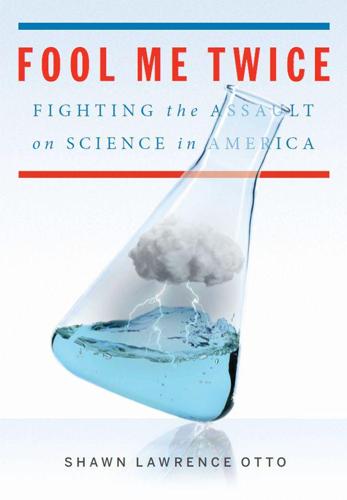
Fool Me Twice: Fighting the Assault on Science in America
by
Shawn Lawrence Otto
Published 10 Oct 2011
Can we manage the new science revolution to our best advantage, or will we be its unwilling victims? At the same time that we are being overwhelmed by progress, we are facing a host of legacy challenges from the science of the last century that are now being pushed to the forefront by global development. They include climate change and energy; ocean acidification and overfishing; biodiversity loss and habitat fragmentation; pandemics and biosecurity management; freshwater resource management; transportation; waste management; chemical, biological, nanotechnological, and genetic pollution; population control; national security; science education and economic competitiveness; and economic growth on a finite planet without degrading it.
…
The telegram contained what has become one of the most famous quotes in science: The unleashed power of the atom has changed everything save our modes of thinking and we thus drift toward unparalleled catastrophe.11 Everything has changed “save our modes of thinking” can speak not only of the bomb, but also of climate change, biodiversity loss and habitat fragmentation, ocean trawling, geoengineering, synthetic biology, genetic modification, chemical pollution, and a host of other science challenges we now face. Science and technology have delivered awesome power to governments and industry, but they have not granted us complete awareness of the potential consequences of this power or mechanisms for its sustained use without causing destruction.
…
THE TRAGEDY OF THE COMMONS In December of 1968, a little-known University of California Santa Barbara biologist named Garrett Hardin published a paper in Science that would change the way we look at economics. The core dilemma it identified, which came to be called “the tragedy of the commons” after the paper’s title, lies at the heart of the unresolved environmental challenges of the twentieth century, among them climate change, ocean acidification, overfishing, biodiversity loss, habitat fragmentation, overdevelopment, pollution, exploding population, and unsustainable energy use, to name a few. The dilemma suggests that politicians are paralyzed by a fundamental conflict between the environment and the economy that arises from the deeply held, mistaken belief that freedom and regulation are incompatible.
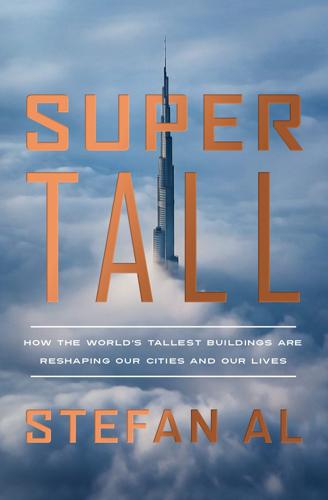
Supertall: How the World's Tallest Buildings Are Reshaping Our Cities and Our Lives
by
Stefan Al
Published 11 Apr 2022
As the French aristocracy once had a monopoly on green spaces, four centuries later there is still inequitable access to vegetation. We are waiting for eco-justice pioneers, who will make clean air and urban park spaces a social issue, not just a green one. Bosco Verticale, Milan, Stefano Boeri, 2014 In our age of biodiversity loss, the new challenge is to design buildings that will spawn their own ecosystems with the most species. Every living thing on this planet is a result of thousands if not millions of years of adaptation to different environmental conditions. Each can offer valuable insights for our own survival in the future.
…
See also parks Trellis, London, 168–69 tripod shape, 4, 72 Trump, Donald, 193, 194 tubular frame, 60–62, 64–66, 67 tuned mass dampers, 74–75, 80, 196, 268, 269 Turning Torso, Malmö, 71, 72 Twain, Mark, 179 Twin Towers, 64, 73–74, 190, 194 twisted towers, 71, 71–72 220 Central Park South, 197 Unilever House, London, 157 United Nations Secretariat Building, 59, 124 urbanization, 12–13. See also cities agriculture and, 149, 246, 249, 270 biodiversity loss and, 262 China’s rise and, 101 dystopian image of, 239 economic growth and, 12–13, 239 enabled by train and elevator, 93 expected growth of, 13 exploded in nineteenth-century US, 181–82 urbanization (continued) heat island effect and, 257, 260 return from suburbs since 1980s, 146 skyscrapers and, 208 sustainable, 238 trees felled during, 246 zoonotic diseases and, 210 Uruk, 240–41 Van Alen, William, 186 Vancouver, energy limits, 136 vaults, 32, 56 Velázquez, Germán, 136 Velcro, 83 VIA 57 West, New York, 174, 175 views, 153, 157, 158–59, 168 Viñoly, Rafael, 164, 195, 204 Vitruvius, 26, 89–90, 151 volcanic ash, 26, 28, 55 vortex shedding, 69, 70 Wainwright, Oliver, 166, 202–3 Waldram, Percy, 158 Walkie-Talkie, 13, 164–65, 169, 260 waste, uses of, 264 water concrete and, 25, 26–27, 28, 33, 39 consumed by Burj Khalifa, 37 water systems green infrastructure and, 249–50 Roman viaducts and, 22, 55 of Singapore, 253, 254, 255, 258 wedding-cake style, 185–86, 189, 190, 199 West, Geoffrey, 209 Whyte, William H., 191 Willis, Carol, 185–86 Willis Tower, 65, 65–66, 67 Wilson, E.
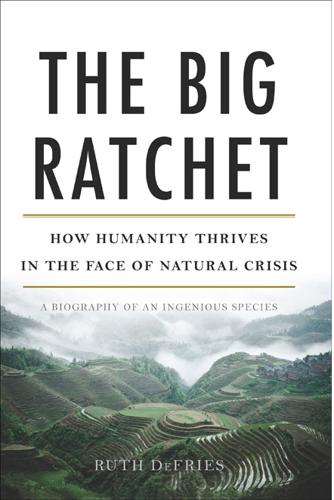
The Big Ratchet: How Humanity Thrives in the Face of Natural Crisis
by
Ruth Defries
Published 8 Sep 2014
Caitling, D., and K. Zahnle. 2009. The planetary air leak. Scientific American 300:36–43. Cardinale, B., E. Duffy, A. Gonzalez, D. Hooper, C. Perrings, P. Venail, A. Narwani, G. Mace, D. Tilman, D. Wardle, A. Kinzig, G. Daily, M. Loreau, J. Grace, A. Larigauderie, D. Srivastava, and S. Naeem. 2012. Biodiversity loss and its impact on humanity. Nature 486:59–67. Feder, J., J. Roethele, K. Filchak, J. Niedbalski, and J. Romero-Severson. 2003. Evidence of inversion polymorphism related to sympatric host race formation in the apple maggot fly, Rhagoletis pomonella. Genetics 163:939–953. Fermi, E. 1946. The development of the first chain reacting pile.
…
See Dichloro-diphenyl-trichloroethane de la Vega, Garcilaso, 89 Dead zone, 121 Death rates, 6 Decomposition, 65, 67 Deforestation, ix–xi, 60, 69–70, 197 Demographic transition, 6 The Descent of Man (Darwin), 38 Detasseling, 148–149 Detergents, phosphate, 119 Dichloro-diphenyl-trichloroethane (DDT), 151 ban on, 163–164 biomagnification of, 160–161, 164 consequences of use, 157, 159–165, 199 early synthesis of, 153 exemptions for use of, 165 for gypsy moth control, 156 human health effects of, 164–165 long-range transport of, 164 persistence in the environment, 160 properties of, 156–157, 160 resistance to, 157–159 in World War II, 154 Dickens, Charles, 86 Diet changed by Haber-Bosch process, 112 eating locally and sustainably-produced foods, 202 fat in, 191–193 movement toward more plant-based, 202 overweight and obesity increase and, 193–195 protein-deficient, 61 shift to more meat, less starch, 142–144, 191–192 sugar in, 96–97, 193 transformation by New World crops, 96 transformation from farmer to urbanite and, 192–195 in transition from foraging to farming, 191 Digestive tracts, short, 43 Dinosaurs, extinction of, 32 “Dirty dozen” chemicals, 164 Disease in ancient China, 77 spread from Old World to New World, 95 spread with crowding of people, 55 water contaminated with human waste and, 86, 87 Diversity of life, 29–32 Dobzhansky, Theodosius, 38 Domesticated animals, 52–53 human labor supplemented by, 73, 74–75, 78–79 of New World, 93 transport to New World, 94–95, 97 Domesticated plants, 52–55, 184–185 Dominant gene, 131–132 Doomsday vault, 185 Dorset, Bill, 139 Drake Well, 124 Drinks, sugary, 193 Drought, in England (1790s), 82 Dutch Elm disease, 156 Dwarf genes, 174, 176–177 Earth average temperature, 20 basic machinery of, 18–19 life development on, 30–32 life supported on, 18–19 magnetic field, 21 number of species on, 30 recycling machinery of, 23–28 tilt of, 22–23 Earthquakes, 25 East, Edward Murray, 134, 172 East India Company, 139 Economic entomology, 147, 153 Ecuador, 90 Egypt crop rotation in, 78 Nile River and, 71–72 pest control by ancient Egyptians, 151 Ehrlich, Paul, 175, 176 Einkorn, 52 Elephants, learning by, 40 Emerson, Ralph Waldo, 109–110 Emerson, Rollins Adam, 134, 172 Emmer, 52, 185 Energy animal power, 73, 74–75, 123 from burning coal, 81–82 cost in calories to produce food, 141–142 cost of meat, 77, 143–144 human to produce food, 122–123 in industrial nitrogen fixation process, 109 loss in food chain, 74, 77 from sunlight, 73–75 used to obtain food, 72–73 England human waste disposal, 85–88 industrial revolution, 81–82 manure use in, 78 nineteenth century, 85–88 sugar consumption, 96 Environmental issues biodiversity loss, 197 biomagnification of DDT, 160–161, 164 Green Revolution, effects of, 182–183 greenhouse gases, 121, 125, 196–197 persistence of pesticides, 157, 160 Espionage, industrial, 110 Euphrates River, 70–71 Europe animal power use in, 78–81 bubonic plague in, 80 diet transformation by New World crops, 96 famines in, 78–80, 82, 83 four-course system of farming, 80–81 medieval, 78–80 moldboard plow use in, 78 sugar from New World, 96–97 three-field system of farming, 80 Eutrophication, 118–120 Evergreen Revolution, 183 Evolution of human brain, 42–43 of human lineage species, 47–51 pest reemergence, 184 of pesticide resistance, 158–159 of photosynthesis, 31 role of culture in human, 37–38 Exoticorum Libri Decem (Culsius), 98 Experimental Lakes Area, Canada, 118 Experiments, 3 Extinctions of plant and animal species, 32 Families, size of, 6 Famine, 4 in ancient China, 77 in Europe, 79–80, 82, 83 Great Irish Famine, 10–13, 148 in India, 175–176 Malthus’ prediction of, 2 Farming and farmers in Amazon region, 59–60 animal labor used in, 73, 74–75 civilization link to, 8 crop rotation, 75–76, 78, 80 dairy, 46 four-course system, 80–81 of Old World crops in New World, 97 by other animal species, 5, 9–10 pest control by traditional practices, 151–153, 166 population growth and, 56–57 three-field system, 80 transition from foraging to, 5, 52–57, 191 transition to urbanites, 5, 15, 203–205 Fat increase in diet, 191–192 sources of, 192–193 Fermi, Enrico, 17 Fermi’s paradox, 17–18 Fertile Crescent, 52, 53, 57, 136 Fertilizer guano as, 88–92 Haber-Bosch process and, 109–113 industrial production, 109 lake eutrophication from, 119–120 Liebig as father of fertilizer industry, 62 mineral theory and, 107 phosphorus, 113–118 saltpeter, 91–92 Finches, of Galapagos Islands, 37–38, 39–40 Fire, 43, 49–50 Fire ants, 155 Floods, 71, 79 Flush toilets, 86, 87 Food abundance of, 5, 6–7 as civilization’s engine, 7–10 cooked, 43, 49 cost of, 5 energy used to obtain, 72–73 hunger, 7 processed, 194, 195 spread to new areas, 149 stored, 55, 56 surplus, 8, 70, 81–83 virtual water and, 98–99 wasted, 201 Food chain, 143, 160–161 Food miles, 202 Food production focus on quality, 201 greenhouse gases from, 196–197 interference with planet’s recycling machinery, 197 land surface area devoted to, 190 local, 202 paradox of success, 200 sustainably-produced foods, 202 threat to diversity of life, 197 See also Agriculture; Farming and farmers Food riots, 82, 83, 198 Foraging, 52, 55, 56, 72–73, 191 Fossil fuels agriculture powered by, 123–124, 140–141 biofuels as replacements for, 198 greenhouse gases from burning, 125 Fossil phosphorus, 116–117 Franklin, Benjamin, 139 Franklin, Lady Jane, 36 Franklin, Rosalind, 186 Franklin, Sir John, 35–37, 39, 45 Frying food, 193 Fungi, 31 Fungus farms, 9 Galapagos Islands, 37–38, 39–40 Gaud, William, 178 Genes, 131–132 diversity of, 29 dwarf, 174, 176–177 tomato, 184 in wild relatives of domesticated species, 184, 186 Genetic engineering Bt crops, 168, 186 criticisms of, 186–187 Genetics genetically engineered crops, 168 Mendel’s experiments, 129–132 See also Inheritance Gilbert, Sir Henry, 62, 103 Global warming, atmospheric carbon dioxide and, 27 Golden Rice, 186 Goodall, Jane, 48 Grains, whole, 194 Great Irish Famine, 82, 83, 148 Great Splash, 22 Grebes, 161 Green Revolution, 176 criticisms of, 179–183 effect on environment, 182–183 failure to reach southern Africa, 182 origin of term, 178 water dependence, 181–182 yield increases with, 178–179 Green spider mite, 150 Greenhouse effect, 20–21 Greenhouse gases, 121, 125, 196–197 Grocery stores, 189 Groundwater, 100, 101 Guano, 88–92, 103 Guano Island Act in 1856, 90 Guatemala, pest management in, 152 Gulf of Mexico, 121 Gunpowder, 110 Gypsy moth, 151, 156 Haber, Fritz, 108–113, 197 Haber-Bosch process, 110–112 Habitable Zone, 19–21 Hadley, George, 94 Hadley cells, 94, 95 Hamburger connection, 198 Harness, collar, 78 Hays, Willet, 137 Herbivore, 74 Hessian fly, 150 Hi-Bred Corn Company, 135 High-fructose corn syrup, 193 Holmes, Arthur, 24–25 Homo erectus, 47, 49 Homo floresiensis, 47 Homo habilis, 47, 48 Homo heidelbergensis, 47 Homo sapiens, 47, 48 Honeybees, 50 Horses, 78, 97, 98 Hoskins, William, 153, 155, 166 Houseflies, resistance to DDT, 158 Hugo, Victor, 76, 87 Human ingenuity, 199–200 civilization and, 8 interplay with nature, 2, 7, 15, 18 overshoot and, 14 as ultimate resource, 2 Human labor, supplementing with domestic animals, 73, 74–75, 78–79 Human waste, 85–88 Humans brain size and complexity, 42–43 evolution and extinction of early human species, 47–51 lactose digestion by, 45–46 Humboldt, Alexander von, 89, 103 Humpback whales, 50 Humus theory, 106–107 Hundred Years’ War, 79 Hunger, 7 Hunter-gatherers, 55, 56, 57, 141 Hutton, James, 28 Hutton, John, 100 Huxley, Aldous, 117 Hybrid vigor, 129, 134, 135, 177 Hybrids corn, 134–136 cross-bred, 130 rice, 177–178 Ice Ages, 43 Ice cream, 190–191 Inbreeding, 128–129, 134 Inca, 88–89 India food production in, 175–176 groundwater extraction, 181–182 growth of urban population in, 203–204 uneven access to Green Revolution, 180–181 Indigenous people, Kayapó, x–xii Indus River, 70, 72 Industrial revolution, 81–82 Inheritance, genetic, 39–40 blended, 129, 132 Darwin and, 128–129 Mendel’s experiments with, 129–132 randomness of, 127 Innovations, cumulative learning and, 44 Insecticides for fire ant control, 155 for gypsy moth control, 156 synthetic organic, 156–157 See also Dichloro-diphenyl-trichloroethane; Pesticides Integrated pest management, 166–167 Intelligent brains, 40 Intelligent life, elsewhere in the universe, 17–18 Internal combustion engine, 123 Introduced species, 150 Inuit, 35–37, 38–39, 45, 164, 194 Invasive species, 150 IR8 (rice variety), 176–177 Ireland, Great Famine in, 10–13, 148 Irrigation, in Mesopotamia, 71 James (King of England), 95 Japan manure use in, 78 short wheat varieties, 174 Japanese macaque, 41, 44 Jericho, 8, 101 Jones, Donald, 135 Kaiser Wilhelm Institute for Physical Chemistry, 111 Kayapó (indigenous people), x–xii Kellogg, Luella, 43, 50 Kellogg, Winthrop, 43, 50 Kenya, increase in overweight people in, 194 Knowledge, building across generations, 3 Kwashiorkor, 60–61 Lactase, 45–46 Lactose, digestion of, 45–46 Lake, eutrophication, 118–120 Lake Mendota, 119–120 Language, 50–51 Law of the Minimum, 65 Lawes, Sir John, 62, 103, 114, 115 Lead arsenite, 156 Leaf-cutter ants, farming by, 9, 149 Learning compensating for locked-in inheritance, 40 cumulative, 44–46, 49, 50 social, 41–43 trial-and-error, 40 Legumes, 62–63, 75 Lenoir, Jean J., 123 Les Misérables (Hugo), 76 Levees, 71 Lice, control with DDT, 153, 154 Liebig, Justus von on Chinese agriculture, 75 law of the Minimum, 65 mineral theory, 106–107 phosphorus and, 62, 65, 103, 113–116 on sewage return to field, 87–88 Life biological homogeneity, 94–95, 98 building blocks of, 30 diversity of, 29–32 diversity threatened by food production, 197 liquid water as requisite for, 19 planets supporting, 17–18 from rivers, 70–72 transcontinental transfer of species, 94–95, 97–98 Life-span, average, 5 Limits to Growth (Meadows), 2 Little Ice Age, 57 Livestock, corn-fed, 133, 134 Lockwood, Jeffrey, 147 Locusts, 145–147, 165–166 London human waste disposal, 86–88 population growth in, 105 London’s Farmer Club, 87 Longping, Yuan, 177–178 Los Baños, Philippines, 176 Maggi, Blairo, x, xii Magma, 24, 26, 27 Magnetic field, planetary, 21–22 Maize.

Climate Change
by
Joseph Romm
Published 3 Dec 2015
Moreover, humans are increasingly working to help species survive, even helping with “species migration and dispersal,” as the Intergovernmental Panel on Climate Change changed noted in its 2014 Fifth Assessment. Even so, the IPCC warned that we are risking “substantial species extinction … with risk increasing with both magnitude and rate of climate change.” There is more to biodiversity than just the number of species, as shown in a 2011 article in Nature Climate Change, “Cryptic Biodiversity Loss Linked to Global Climate Change.” This was the first global study “to quantify the loss of biological diversity on the basis of genetic diversity.” Cryptic biodiversity “encompasses the diversity of genetic variations and deviations within described species.” It could only be studied in detail because molecular-genetic methods were developed.
…
It could only be studied in detail because molecular-genetic methods were developed. Scientists with the German Biodiversity and Climate Research Centre noted that “If global warming continues as expected, it is estimated that almost a third of all flora and fauna species worldwide could become extinct.” However, their research “discovered that the proportion of actual biodiversity loss should quite clearly be revised upwards: by 2080, more than 80% of genetic diversity within species may disappear in certain groups of organisms.” Species may survive, but “the majority of the genetic variations, which in each case exist only in certain places, will not survive,” as coauthor Dr.

Net Zero: How We Stop Causing Climate Change
by
Dieter Helm
Published 2 Sep 2020
A plan is more than the summation of a series of eye-catching and vote-winning announcements, and the choice for us to make now is about how we want to live, and in particular what we choose to consume. The building blocks of a plan that might actually work The plan brings together into a coherent whole the various dimensions that have been set out so far. It starts with sustainable economic growth, not the GDP fetish which beguiles us. Climate change and biodiversity loss are so systemic that they demand an overarching economic system to address them. Critics of the current model of capitalism are right to point out that it is not sustainable, but they are wrong to rule out the ‘growth’ bit. A plan for sustainable economic growth starts with consumption, and views production as the means to our consumption.
…
You can use your ebook reader’s search tool to find a specific word or passage. acid rain 25, 194 Africa xiv, xv, 2, 25, 30, 38, 44, 45, 47, 48, 51, 137, 229 agriculture 2, 6, 12, 13, 14, 23, 35–6, 43, 44–5, 70, 76, 86, 87–8, 95, 100, 102, 109, 116, 146–7, 149, 159, 163–80, 181, 183, 192, 197, 198, 206, 220 baseline, the 164–8 biodiversity loss and 2, 5, 100, 164, 165, 168, 169, 171, 172, 174, 180 biofuels and 197–8 carbon emissions and 2, 12, 13, 35–6, 76–7, 146–7, 163–80 carbon price and 167–70, 171, 172, 173, 180 China and 28–9, 35, 45, 180 economics of 76, 165, 166–7, 171, 174 electricity and 13, 166, 168, 174, 178, 180 fertiliser use see fertiliser lobby 14, 110, 164, 165, 169, 170, 197 methane emissions 23, 84, 177, 178, 179 net gain and 172–4 net value of UK 76, 166 new technologies/indoor farming 87–8, 174–9, 180, 213 peat bogs and 2, 179 pesticide use see pesticides petrochemicals and 166 polluter-pays principle and 76, 168–70, 172, 173 pollution 36, 86, 163, 165–6, 168–70, 172, 173, 177–8, 230 public goods, agricultural 170–4, 180 sequestering carbon and 12, 95, 163, 166, 168, 169, 170, 171, 172, 173–4, 177, 179, 180 soils and 2, 146, 163, 164, 165, 166, 168, 169, 171, 172, 175, 179 subsidies 14, 76, 102, 109, 116, 164, 165, 166, 167, 169, 170, 172, 180, 228 25 Year Plan and 179–80 Agriculture Bill (2018), UK 170 air conditioning 135–6, 224, 233 air quality xiii, 13, 25, 46, 52, 61, 70, 135, 153, 177, 180, 201, 216, 230, 232 air transport 3–4, 6, 11, 13, 22, 50, 53, 73, 87, 88, 92, 107, 125, 128, 129, 132, 133, 134, 149, 156–7, 186, 195, 201, 203–5 aluminium 7, 117 Amazon rainforest 2, 34, 35, 95, 145, 149–50, 151, 155, 229, 230 ammonia 35, 137, 191 anaerobic digesters 35, 165, 230 animal welfare 167, 177 antibiotics 93, 165, 174 Arctic 26, 46, 114, 178 artificial intelligence (AI) 32, 175, 220, 231 autonomous vehicles 13, 129, 132, 175, 189–90, 231 Balkans 137–8 Bank of England 121 batteries 6, 31, 131, 135, 141, 183, 184, 185–90, 191, 199, 204, 213, 214, 219, 220, 221, 225, 231 beef 5, 95, 116, 117, 167, 230 Berlin, Isaiah 104 big 5 polluter products 117–18, 120 bin Salman, Mohammad 27 biocrops 36 biodiversity xiv, 2, 5, 12, 13, 28, 35, 51, 76, 94, 100, 148, 149, 152, 153, 158, 159, 164, 165, 168, 169–70, 171, 172, 174, 180, 227, 233 bioenergy 31, 34–5, 36 biofuels 21, 35, 49, 50, 67, 70, 95, 135, 183, 184, 197–8, 210, 230 biomass 32, 34, 49, 50, 67, 69, 109, 146, 147, 151, 210, 217 bonds, government 220 BP 27, 149, 187, 199 Deepwater Horizon disaster, Gulf of Mexico (2010) 147 Brazil 2, 35, 38, 44–5, 47, 95, 145, 149–50, 155, 198 Brexit 42, 47, 56, 117, 165 British Gas 102, 139 British Steel x, 194 broadband networks 6, 11, 90, 92, 125, 126, 127–8, 130–1, 132–3, 135, 140–1, 199, 201, 202, 205, 211, 214, 231, 232 Brundtland Commission 45 BT 127–8, 141 Openreach 214 Burn Out (Helm) ix, xiv Bush, George W. 36, 48, 53, 103 business rates 76, 165 Canada 52, 191, 193 capitalist model 26, 42, 99, 227 carbon border tax/carbon border adjustment xii, 11, 13, 60, 80, 115–20, 194–6, 204 carbon capture and storage (CCS) xiv, 12, 75–6, 95, 109, 146, 147–8, 149, 154, 159, 203–4, 207, 209, 222, 223 Carbon Crunch, The (Helm) ix, xiv, 221 carbon diary 4–5, 8, 10, 11, 64–6, 83, 86, 116, 143, 144, 155, 156, 167, 180, 181, 185, 203, 205 carbon emissions: agriculture and see agriculture by country (2015) 30 during ice ages and warm periods for the past 800,000 years 21 economy and 81–159 electricity and see electricity global annual mean concentration of CO2 (ppm) 19 global average long-term concentration of CO2 (ppm) 20 measuring 43–6 since 1990 1–14, 17–37 transport and see individual method of transport 2020, position in 36–7 UN treaties and 38–57 unilateralism and 58–80 see also unilateralism carbon offsetting xiii–xiv, 4, 5, 12, 34, 45, 72, 74, 79, 94–6, 97, 105, 143–59, 192, 201, 203, 207, 214, 222, 223, 234 for companies 148–50 for countries 151–5 for individuals 155–7 markets 71–2, 110–13, 117, 144, 157–9, 208 travel and 156, 201–3 see also sequestration carbon permits 71–2, 79, 110–13, 117, 144, 208 carbon price/tax xii, xiii, xv, 8, 11, 12, 13, 26, 60, 61, 71, 72, 77, 79, 80, 84, 85–6, 102–3, 105, 106–24, 134, 143, 146, 147, 150, 151–4, 157, 159, 192, 197, 198, 199, 203, 227–30, 232, 234 agriculture and 167, 168, 169–70, 171, 173, 180 domain of the tax/carbon border adjustment xii, 11, 13, 60, 80, 115–20, 121, 124, 192, 194–6, 197, 204, 227 electric pollution and 216–18 ethics of 107–10 floor price 115, 117, 208 for imports 11, 13 prices or quantities/EU ETS versus carbon taxes 110–13 setting 113–15 transport and 192–9 what to do with the money 121–4 where to levy the tax 119–20 who fixes the price 120–1 carbon sinks 2, 5, 166, 169, 203 carboniferous age 34 cars 1, 3, 4, 7, 20, 22, 36, 44, 70, 73, 114, 129, 181, 182, 183, 184–5, 190, 191, 193, 196, 197, 198, 199 see also electric vehicles cartels 39, 40, 43, 45, 46, 47, 56 cattle farming 35, 36, 95, 150, 166, 167, 173, 177, 198 Central Electricity Generating Board (CEGB) 102, 139, 218 cement 6, 7, 26, 29, 34, 87, 117, 171 charging networks, electric vehicle 91, 129–30, 141–2, 184, 185–90, 199, 200, 202, 219 Chernobyl 78 China xi, xv, 1–2, 5, 8, 18, 42, 46, 47, 48, 64, 66, 74, 101, 180, 229 Belt and Road Initiative 28, 45 coal use 1–2, 8, 23–4, 24, 28, 31, 38, 117, 154, 206, 208 Communist Party 2, 27, 42, 46 demand for fossil fuels/carbon emissions 1–2, 8, 18, 20, 22, 23–4, 24, 25, 27–31, 36, 38, 51, 73, 117, 154, 206, 208 export market x–xi, 5, 9, 64, 66, 117, 155, 194 fertiliser use 35 GDP xv, 27, 29 nationalism and 42 petrochemical demand 22 renewables companies 9, 32, 73, 74, 77, 79 Tiananmen Square 42 unilateralism and 58, 59 UN treaties and 46, 47, 48, 53, 54, 55, 58, 59 US trade war 56, 118 Churchill, Winston 183 citizen assemblies 99–101 climate change: carbon emissions and see carbon emissions 1.5° target 38, 57 2° target 1, 10, 22–3, 28, 30, 38, 39, 45, 47, 54, 55, 57, 108, 122, 155, 206 see also individual area of climate change Climate Change Act (2008) 66, 74–7 Clinton, Bill 40, 48 Club of Rome 98 coal 1–2, 5, 8, 13, 20, 23–5, 28, 29, 30, 31, 32, 34, 36, 38, 50, 52, 53, 60–1, 67, 72, 77, 78–9, 101, 109, 112, 116, 117, 119, 134, 136, 145, 147, 148, 151, 154, 155, 182, 183, 194, 196, 206–9, 210, 212, 214, 216, 217, 218, 229, 230 coastal marshes 146, 159 colonialism 45 Committee on Climate Change (CCC), UK x–xi, 7, 74–5, 120, 164, 166, 169, 217, 235 ‘Net Zero: The UK’s Contribution to Stopping Global Warming’ report x–xi conference/video calls 6, 129, 156, 202, 205 Conference of the Parties (COP) xii, 10, 48, 50, 53–4, 55, 59, 205 congestion charges 198 Copenhagen Accord 48, 53–4, 59 Coronavirus see Covid-19 cost-benefit analysis (CBA) 71, 108, 110, 114, 138 cost of living 116 Covid-19 x, xi–xii, 1, 3, 6, 9, 18, 19, 22, 25, 27, 30, 37, 44, 46, 50, 57, 65, 69, 80, 89, 93, 129, 135, 148, 171, 201, 202, 204, 232 CRISPR 176 crop yields 172, 177 dams 2, 36, 52–3, 179 DDT (Dichlorodiphenyltrichloroethane) 100 deforestation 2, 5, 34, 35, 36, 38, 43, 44, 47, 55, 87, 95, 145, 146, 149–50, 155, 172–3, 179, 197–8, 229 Defra (Department for Environment, Food and Rural Affairs) 170 deindustrialisation x, 29, 46, 52, 54, 59, 72–4, 218 Deng Xiaoping 27 Denmark 69–70, 136–7 desalination 135–6, 179 diesel 4, 20–1, 70, 76, 86, 109, 119, 121, 129, 132, 164, 165, 166, 174, 175, 178, 179, 181, 182, 185, 186, 191, 192, 196–7, 208, 217, 230 ‘dieselgate’ scandal 196–7 digitalisation 1, 8, 11, 13, 33, 92, 117, 136, 174, 175, 180, 206, 211, 215, 221, 228–9, 231 DONG 69 Drax 147, 151, 154, 218 economy, net zero 10–12, 81–159 delivering a 96–103 intergenerational equity and 96–7 markets and 103–5 net environmental gain see net environmental gain political ideologies and 98–101 polluter-pays principle see polluter-pays principle public goods, provision of see public goods, provision of technological change and 98 EDF 139, 218 Ehrlich, Paul 98 electricity 1–2, 4, 6, 11, 12, 13, 23, 31, 32, 49, 53, 61, 65, 66, 68, 70, 73, 77, 78, 79, 91, 92, 101, 102, 109, 117, 125, 127, 128, 129–30, 131–2, 134, 135, 136, 137, 139, 140, 141, 149, 158, 166, 168, 174, 178, 180, 182, 183, 228, 229, 231, 232, 234, 235 coal, getting out of 206–7 electric pollution and the carbon price 216–18 electric vehicles 4, 6, 13, 20, 23, 49, 61, 91, 92, 94, 121, 125, 128, 129–30, 131–2, 134, 141, 183–92, 193, 194, 197, 200, 201, 202, 206, 219, 228 equivalent firm power auctions and system operators 210–16 future of 206–25 gas, how to get out of 207–9 infrastructure, electric 185–90, 218–20 low-carbon options post-coal and gas 209–10 net gain and our consumption 222–5 R&D and next-generation renewables 220–2 renewable see renewables Energy Market Reform (EMR) 219 equivalent firm power (EFP) 212–16, 217, 220 ethanol 35, 71, 95, 197 eucalyptus trees xiv, 152 European Commission 60, 71, 72, 112 European Union (EU) xiv, 2, 7, 8, 9, 37, 42, 44, 46, 47, 117, 137, 165, 166, 197; baseline of 1990 and 51–2 Common Agricultural Policy (CAP) 76, 165 competition regime and customs union 56 deindustrialisation and 46, 52, 54, 59, 72–4 directives for 2030 66 Emissions Trading System (EU ETS) 71–2, 73, 79, 110–13, 117, 144, 208 importing carbon emissions 59 Internal Energy Market (IEM) 68, 71 Kyoto and 9, 51, 59, 66–7 Mercosur Agreement 44, 95 net zero target for 2050 66, 115, 143, 155, 167, 180 Paris and 54 Renewable Energy Directive 68–71, 73, 109 2020 targets signed into law 66 2020–20–20 targets 67, 69, 74 unilateralism and 59, 66–71, 80 Eurostar 133 externalities 104, 170, 180, 196 Extinction Rebellion 6 farmers 14, 26, 35, 36, 43, 71, 76, 86, 95, 102, 109, 110, 146–7, 164, 165, 166, 169, 170, 174, 175, 196, 197, 198 fertiliser 4, 6, 7, 26, 29, 35, 61, 73, 86, 87, 116, 117, 119, 163, 165, 169, 174, 175, 178, 179, 191, 194, 197 fibre/broadband networks 6, 11, 90, 92, 125, 126, 127–8, 130–1, 132–3, 135, 140–1, 201, 202, 205, 211, 214, 231, 232 financial crisis (2007/8) 1, 19, 69 first-mover advantage 75 First Utility 199 flooding 13, 77, 149, 152, 153, 159, 170, 233 food miles 167 food security 170–1 food waste 178, 180, 231 Forestry Commission xiv Formula One 186, 196 fossil fuels, golden age of 20–5 see also individual fossil fuel France 46, 47, 52, 56, 73, 78, 101, 113, 130, 136, 138 free-rider problem 39–40, 43, 62–4, 106, 119 fuel duty 121, 195–6 fuel efficiency 197 fuel prices 26, 112–13, 209 fuel use declaration 195 Fukushima Daiichi nuclear disaster (2011) 52, 78 Fukuyama, Francis: The End of History and the Last Man 40–1 gardens 6, 43, 143, 156 gas, natural ix, 2, 5, 8, 20, 23, 24, 25, 26, 29, 31, 32, 36, 50, 52, 68, 69, 79, 102, 109, 117, 119, 129, 136, 137, 146, 147–8, 149, 183, 190, 193, 194, 207–9, 210, 211, 214, 216–17 G8 47 gene editing 172, 176, 231 general election (2019) 121 genetics 98, 172, 174–6, 231 geoengineering 177 geothermal power 137, 178 Germany 9, 30, 47, 52, 59, 60, 62, 66, 67, 69, 70, 71, 72, 73, 75, 77–80, 83, 91, 101, 112, 136, 137, 138, 144, 206, 208, 209 Energiewende (planned transition to a low-carbon, nuclear-free economy) 59, 69, 77–80, 112, 144, 208 Gilets Jaunes 101, 113 GMOs (genetically modified organisms) 176, 177 Great Northern Forest, Britain 151 Green and Prosperous Land (Helm) xiii, xiv, 165, 169, 234 greenbelt 173 greenhouse effect 17 green new deal 90, 102, 234 green parties/green votes 69, 77, 78 green QE (quantitative easing) 102–3 green walls 153, 231 greenwash 156 gross domestic product (GDP) xii, xv, 1, 25, 27, 29, 41, 57, 59, 73, 76, 83, 93, 98, 103, 133, 165, 207, 227, 229, 233 growth nodes 133 G7 47 G20 47 Haber-Bosch process 35, 163 Hamilton, Lewis 186 ‘hands-free’ fields 175 Harry, Prince 6 Heathrow 133, 134 hedgerow 76, 166, 167, 172 Helm Review (‘The Cost of Energy Review’) (2017) ix, 120, 141, 200, 210, 212, 215, 217, 220, 238 herbicide 163 home insulation 102 House of Lords 170 housing 101, 223–4 HS2 92, 125, 132–4, 138, 202 Hume, David 49 hydrogen 13, 49, 92, 125, 128, 135, 137, 183, 184, 190–2, 199, 200, 204, 206, 213, 228 hydro power 31, 35, 36, 50, 52–3, 70, 136, 137, 191 Iceland 137, 178 imports x–xi, xiii, 5, 8, 10, 11, 12, 13, 62, 68, 70, 117–18, 155, 167, 178, 173, 180, 196, 227 income effect 72, 111 income tax 121, 122, 232 India xiv, xv, 25, 30, 31, 38, 43, 44, 47, 48, 51, 54, 55, 57, 154, 229 individuals, net zero for 155–7 Indonesia 2, 35 indoor farming 87–8, 177–8, 180, 213 indoor pollutants 223, 232 Industrial Revolution 1, 18, 19, 25, 47, 116, 145 INEOS Grangemouth petrochemical plant xi information and communications technology (ICT) 117, 202, 231 infrastructures, low-carbon xiii, xiv, 11–12, 14, 28, 60, 62, 65, 66, 90, 91–4, 96, 105, 109, 123, 125–42, 143, 147, 151, 154, 159, 171, 184, 186, 187, 190, 199–200, 214, 218–20, 228, 230, 231–2, 234–5 centrality of infrastructure networks 128–30 electric 125–41, 218–20 making it happen 141–2 net zero national infrastructure plan 130–6 private markets and 125–8, 141–2 regional and global infrastructure plan 136–7 state intervention and 126, 127–8, 141–2 system operators and implementing the plans 138–41 inheritance tax 76, 165 insects 164, 177, 231 insulation 102, 224 Integrated Assessment Models 114 intellectual property (IP) 75 Intergovernmental Panel on Climate Change (IPCC) 17–18, 47, 55, 57, 108, 172 internal combustion engine 13, 22, 181–2, 183, 184, 200, 221, 228 Internal Energy Market (IEM) 68, 71, 138 International Energy Agency (IEA) 25, 207 International Monetary Fund (IMF) 51 internet banking 131, 213 internet-of-things 128, 175 Iran 27, 42, 113, 137 Iraq 56, 192 Ireland 43, 157 Italy 137, 182 Japan 27, 28, 30, 52, 73, 78, 101, 185 Jevons Paradox 224 Johnson, Boris 89–90 Kant, Immanuel 104 Keynes, John Maynard 89, 102, 103, 105 Kyoto Protocol (1997) xii, 2, 7, 9, 13, 17–18, 37, 38, 39, 40–1, 47–8, 49, 51, 52–3, 59, 66–7, 119 laissez-faire 104, 138, 188 land use 35, 61, 95, 172, 237 LED (light-emitting diode) lighting 87, 178, 179, 180, 213 liquefied natural gas (LNG) 136, 183 lithium-ion battery 185 lobbying 10, 14, 33, 69, 71, 109, 110, 111–12, 115, 121, 157, 169, 170, 187, 197, 209, 223, 227, 228 location-specific taxes 194 maize 35, 165, 197 Malaysia 2, 229 Malthus, Thomas 98 Mao, Chairman 27, 42 meat xi, 65, 164, 177, 180, 232 Mekong River 2, 28, 179, 229 Mercosur Agreement 44, 95 Merkel, Angela 78 methane 4, 23, 84, 177, 178, 179, 216 microplastics 22 miracle solution 49–50, 55, 209 mobile phone 5, 125, 185 National Farmers’ Union (NFU) 110, 164, 165, 169, 170, 171 National Grid 139, 141, 189, 200, 211, 214, 219 nationalisations 101–2, 126–7 nationalism 41, 43, 55, 56, 138 nationally determined contributions (NDCs) 54–5 natural capital xiii, 14, 33–6, 51, 85, 86, 88, 90, 94, 97, 154, 158, 168, 171, 173–4, 236 Nature Fund 123, 169, 234 net environmental gain principle xiii, xiv, 10, 12, 62, 84, 94–6, 105, 143–59, 169, 172–4, 192, 201–3, 222–5 agriculture and 169, 172–4 carbon offsetting and see carbon offsetting electricity and 222–5 principle of 94–6, 143–4 sequestration and see sequestration transport and 192, 201–3 Netherlands 138 Network Rail 214 net zero agriculture and see agriculture defined x–xv, 3–14 economy 10–12, 81–159 see also economy, net zero electricity and see electricity transport and see individual method of transport 2025 or 2030 target 89 2050 target x, xi, 5, 59, 66, 74, 75, 115, 120, 135, 143, 155, 167, 169, 180, 184, 216, 217, 222, 226, 230, 231, 232 unilateralism and see unilateralism NHS 65 non-excludable 91, 93, 126, 170 non-rivalry 91, 93, 126, 170 North Korea 42 North Sea oil/gas 9, 40, 75, 97, 102, 137, 139, 147, 148, 193 Norway 130, 137, 191 nuclear power 5, 9, 12, 18, 23, 52, 60, 73, 77–9, 109, 125, 128, 129, 136, 140, 178, 194, 199, 206, 207, 208, 209–10, 212, 214, 216, 218, 219, 222, 228 Obama, Barack 48, 53, 54, 59 oceans 2, 14, 22, 33, 85, 86, 88, 148, 163, 231 offsetting see carbon offsetting offshore wind power 31, 69, 75–6, 208, 212, 219, 221 Ofgem 220 oil ix, 2, 20, 22–3, 25, 26, 27, 31, 32, 33, 36, 39, 40, 50, 67, 69, 86, 97, 117, 119, 129, 136, 137, 146, 147, 148–9, 150–1, 152, 181–3, 184, 185, 187, 189, 190, 192–4, 196, 197, 199, 206, 209, 210, 216–17, 229 OPEC 39, 40, 193 Orbán, Viktor 41, 42 organic food 61, 87, 178 Ørsted 70 palm oil 2, 5, 6, 35, 36, 66, 71, 167, 173, 197–8, 230 pandemic see Covid-19 Paris Climate Change Agreement (2015) xii, 2, 10, 13, 18, 30, 37, 38, 39, 48, 49, 54–5, 56, 57, 58, 66, 80, 105, 106, 118, 119, 227 peat bogs xiv, 2, 13, 14, 33, 35, 36, 43, 109, 146, 169, 179 pesticides 4, 26, 61, 163, 165, 169, 174, 178, 231 petrochemicals xi, 7, 8, 20, 22–3, 29, 73, 80, 86, 117, 166, 182 petrol 4, 86, 119, 121, 129, 185, 186, 187, 191, 192, 199 photosynthesis 34, 197 plastics 1, 22, 28, 35, 43, 66, 86, 87, 119, 143, 166, 184, 231 polluter-pays principle xiii, xv, 84–90 agriculture and 76, 168–70, 172, 173 carbon price and see carbon price/tax generalised across all sources of pollution 86 identifying polluters that should pay 86 importance of 10–11, 13, 61, 62, 65 intergenerational balance and 96–7 net environmental gain and 94 sequestration and see sequestration, carbon sustainable economy and 96–7, 105, 106 transport and 192–5, 198–9 see also individual type of pollution population growth 93, 97, 177, 178, 179, 232 privatisation 127, 140, 218–19, 220 property developers 94 public goods, provision of xiii, 10, 11–12, 62, 75, 84, 90–4, 96, 104, 105, 109, 122, 123, 126, 128, 141, 147, 151, 153, 159, 164, 168, 173–4, 180, 192, 199–200, 202, 218, 229, 230 agricultural 170–4, 180 low-carbon infrastructures see infrastructures, low-carbon research and development (R&D) see research and development (R&D) Putin, Vladimir 27, 41, 42, 89 railways 11, 13, 13, 87, 91, 92, 94, 125, 128, 129, 130, 131, 132–3, 138, 139, 156, 182, 183, 187, 202, 212, 214, 232 rainforest 2, 5, 34, 35, 36, 38, 44, 47, 55, 87, 95, 145, 149, 155, 173, 179–80, 197, 229 rationalism 40–1 Reagan, Ronald 103 red diesel 76, 109, 164, 165, 196 regulated asset base (RAB) 127, 141, 215, 220 remote working 128, 156, 201–2, 205 renewables ix, 6, 8, 9–10, 18, 19, 21, 26, 31–5, 36, 49, 50, 55, 61, 67, 72, 77, 79, 85, 86, 109, 110, 112, 123, 125, 128, 131, 135, 138, 140, 144, 149, 178, 188, 191, 194, 197, 199, 207, 209–10, 211, 212, 213, 214, 215, 216, 217, 219, 220–2, 224, 228 Chinese domination of market 9, 32, 73, 74, 77, 79 cost-competitiveness of 9–10, 49, 51, 61, 68 failure of, 1990-now 19, 31–3, 36 modern global renewable energy consumption measured in TWh per year 32 miracle solution and 49–51 Renewable Energy Directive 68–71, 73, 109 subsidies ix, 9, 10, 50, 68–9, 71, 79, 80 see also individual renewable energy source Renewables UK 110 research and development (R&D) xiv, 12, 13, 14, 62, 65, 66, 90, 93–4, 104, 109, 123, 165, 172, 192, 200, 218, 220–2, 223, 228, 234 reshoring businesses 8, 204 rivers 2, 22, 28, 86, 128, 152, 165, 169, 179, 214, 230 roads 11, 28, 45, 91, 92, 125, 129, 131–2, 140, 165, 182, 189, 194, 198, 202, 232 robotics 32, 175, 204, 206, 231 Rosneft 26 Royal Navy 183 Russia 26, 27, 30, 40, 42, 44, 45, 46, 47, 48, 50, 52, 55, 56, 192, 193 RWE 139, 218 Ryanair 156–7 rye grass 35 salmon 169, 177 Saudi Arabia 26, 33, 40, 42, 50, 137, 192, 193 Saudi Aramco 26, 50 seashells 34 sequestration, carbon xi, xiv, 12, 61, 66, 85, 90, 95, 143–59, 228, 229, 231, 232 agriculture and 12, 163, 166, 168, 169, 170, 171, 172, 173, 176–7, 179, 180 baseline definition and 146–7 biofuels and 35, 146, 217 carbon capture and storage (CCS) xiv, 12, 75–6, 95, 109, 146, 147–8, 149, 154, 159, 203–4, 207, 209, 222, 223 companies, net zero for 148–51 countries, offsetting for 151–5 electricity and 222, 223 gas and 207 individuals, net zero for xi, xiv, 155–7 markets, offsetting 157–9 natural capital destruction and 2, 19, 33–6, 44, 45, 51 natural sequestration xi, xiii, 2, 7, 12, 14, 33–6, 37, 45, 52, 66, 85, 90, 94–6, 105, 143–59, 163, 168, 171, 173, 176–7, 179, 180, 203, 206, 207, 222, 223 net gain principle and 143–4, 146, 149–50 offsetting principle and 143–5 peat bogs and see peat bogs principle of xi, xiii, 2, 7, 12–13 soils and see soils transport and 185, 190, 203 tree planting and see trees, planting/sequestration and types of 145–8 wetlands/coastal marshes and 146, 159, 233 shale gas 8, 208 Shell 27, 149, 199 shipping 8, 13, 22, 28, 36, 49, 114, 125, 137, 181, 182–3, 191, 194–5, 203–5, 217 Siberia 2, 46 smart appliances 128, 129, 132 smart charging 11, 13, 128, 129, 130, 139, 214, 219 soils xiii, 2, 5, 7, 12, 14, 33, 35, 36, 43, 55, 76, 109, 146, 149, 152, 156, 159, 163, 164, 165, 166, 168, 169, 171, 172, 175, 179, 203, 228 solar panels/solar photovoltaics (PV) 5, 6, 9, 12, 13, 21, 31, 32, 33, 49, 53, 68, 69, 71, 74, 79, 87, 91, 135, 136, 137, 178, 179, 188, 204, 207, 208, 209, 210, 211, 213, 214, 216, 217, 221, 222, 223, 224–5 Sony 185 Soviet Union 18, 40, 52, 67–8, 89 soya 95 Spain 69, 130, 137 sport utility vehicles (SUVs) 106, 121, 192 spruce xiv, 152, 170 standard of living xv, 1, 5, 8, 10, 11, 14, 229, 233 staycations 201 steel x–xi, 6, 7, 8, 26, 28, 29, 53, 66, 73, 80, 87, 116, 117, 118, 119, 171, 184, 194–5 Stern, Nicholas: The Economics of Climate Change 41, 63 subsidies ix, 9, 10, 14, 32, 50, 51, 52, 53, 69, 71, 76, 79, 80, 89, 102, 109, 110, 113, 116, 123, 140, 154, 164, 165, 166, 167, 169, 170, 172, 180, 193, 196, 198, 209, 215, 221, 222, 228, 230 sugar cane 35, 71, 95, 197, 198 sulphur pollution 22, 25, 28, 78, 191, 194, 197, 230 sustainable economic growth xv, 10, 12, 14, 61, 83, 92, 94, 97, 98, 105, 227, 233 Taiwan 42 taxation xii, 11, 62, 71, 72, 76, 80, 87, 89, 90, 91, 92, 97, 101, 102, 103, 106–24, 126, 127, 130, 133, 147, 150, 151–2, 153–4, 157, 159, 165, 169, 170, 192–6, 197, 198, 199, 203, 232, 234 technological change 98, 127, 141, 174–5, 221 Thatcher, Margaret 17 Thompson, Emma 6 3D printing 175, 204 Thunberg, Greta 6, 205 tidal shocks 159 top-down treaty frameworks 13, 38–57, 80, 110, 119 tourism/holidays 6, 22, 36, 88, 94, 107, 114, 128, 156, 201, 204–5 transport, reinventing 181–205 aviation 195, 201, 203–5 see also air transport batteries and charging networks 185–90 biofuels 196–8 electric alternative 183–5 hydrogen and fuel cells 190–2 innovation, R&D and new infrastructures 199–200 internal combustion engine 181–2 net gain and offsets (reducing travel versus buying out your pollution) 201–3 oil 183–4 polluter pays/carbon tax 192–6 shipping 203–5 urban regulation and planning 198–9 vehicle standards 196–8 see also individual type of transport Treasury, UK 120–2 trees, planting/sequestration and xi, xiii, xiv, 2, 7, 13, 14, 33, 34, 45, 76, 85, 94–6, 146, 148, 149–51, 152–3, 155, 156, 157, 158, 159, 168, 169, 172, 179, 203, 231 trophy project syndrome 133 Trump, Donald 2, 8, 41, 42, 48, 89, 99, 103, 121 25 Year Environment Plan xiii, 153, 170, 179–80 UK 47, 69 agriculture and 164, 166, 167, 173 carbon emissions (2015) 30 carbon price and 115, 120 Climate Change Act (2008) 66, 74–7 coal, phasing out of 24–5, 60–1, 77, 208 Committee on Climate Change (CCC) x–xi, 7, 74–6, 120, 164, 166, 169, 217, 235 deindustrialisation and 72–4 80 per cent carbon reduction target by 2050 74 electricity and 206, 208, 218, 219, 224 Helm Review (‘The Cost of Energy Review’) (2017) ix, 120, 141, 200, 210, 212, 215, 217, 220, 238 infrastructure 125, 132–3, 134, 137, 139–40 net zero passed into law (2019) 66 sequestration and 145, 150, 153, 154, 155, 156 transport and 195–6, 197, 198 unilateralism and 58–9, 60–1, 65, 66, 69, 72–7, 80 unilateralism xi, 8, 10, 11, 25, 58–80, 83, 105, 106, 119, 125, 143, 144, 155, 164, 167, 197, 203, 227 in Europe 66–80 incentive problem and 58–60 morality and 62–6 no regrets exemplars and/showcase examples of how decarbonisation can be achieved 60–2 place for 80 way forward and 80, 83 United Nations xi, xii, 6, 10, 17, 37, 38, 118 carbon cartel, ambition to create a 39–40, 43, 45, 46–7, 56 climate treaty processes xi, 6, 10, 13, 17–18, 36, 37, 38–57, 59, 80, 110, 118, 119, 204–5 see also individual treaty name Framework Convention on Climate Change (UNFCCC) 17–18, 36, 38, 59 miracle solution and 50–1 origins and philosophy of 41 Security Council 46, 47, 57 United States 8, 74, 139, 206 agriculture in 175, 176, 197 carbon emissions 8, 29, 30 China and 27–8, 42, 118 coal and 2, 24, 28, 29, 208 economic imperialism 45 energy independence 50 gas and 8, 20, 23, 24, 29, 50, 208 oil production 40, 50, 193 pollution since 1990 29 unilateralism and 58, 59, 74 UN climate treaty process and 38, 40–1, 44, 45, 46, 47, 48, 53, 54, 56 universal service obligations (USOs) 92, 126, 131, 202 utilitarianism 41, 63–4, 108, 110 VAT 117, 119–20, 121, 122, 232 Vesta 69 Volkswagen 196–7 water companies 76, 214, 230 water pollution/quality xiv, 12, 22, 61, 76, 152, 153, 165, 169, 170, 171, 172, 175, 177, 178, 179, 180, 232 Wen Jiabao 53, 59 wetlands 159, 233 wildflower meadow 164, 184 wind power 5, 9, 12, 21, 31, 32, 33, 49, 53, 68, 69–70, 71, 74, 75, 76, 78, 79, 91, 135, 136, 137, 138, 139, 178, 188, 191, 207, 208, 209, 210, 211, 212, 213, 214–15, 216, 217, 219, 221, 222 wood pellets 67, 217, 230 Woodland Trust 156, 158 World Bank 51 World Trade Organization (WTO) 52, 56, 118 World War I 183 World War II (1939–45) 78, 90, 92, 101, 106, 171 Xi Jinping 27, 41, 42 ACKNOWLEDGEMENTS So much is now discussed, written and published about climate change that it is impossible to keep track of all the ideas and conversations that have influenced my understanding of the subject.

How to Spend a Trillion Dollars
by
Rowan Hooper
Published 15 Jan 2020
Wilson’s suggestion, covers 50 per cent of all land on the planet.37 Second, we must find ways to create conservation-protected zones that allow indigenous people to live freely in these areas. And, third, we must do what we can to promote biodiversity in smaller areas, as has been achieved on the Knepp estate. Governments from 72 countries signed a Leaders’ Pledge for Nature in September 2020, promising to address environmental destruction, and ‘reverse’ biodiversity loss by 2030.38 Pledges are very welcome – we like pledges. But our money will help governments keep their word. $ $ $ HUMANS ARE A MAJOR FORCE for homogenisation – a phenomenon also known as ‘McDonald’s-ification’ or the ‘Starbucks Effect’. Essentially we make everything start to look the same.
…
Science 361(6407), 1051. DOI: 10.1126/science.aau1397 36 Patrick Barkham (2020) ‘First wild stork chicks to hatch in UK in centuries poised to emerge’. www.theguardian.com/environ-ment/2020/apr/26/uk-first-wild-stork-chicks-hatch-centuries 37 Eric Dinerstein et al. (2020) ‘A “Global Safety Net” to reverse biodiversity loss and stabilize Earth’s climate’. Science Advances 6(36). DOI: 10.1126/sciadv.abb2824 38 See www.leaderspledgefornature.org 39 Mark Bush (2019) ‘A neotropical perspective on past human–climate interactions and biodiversity’. In Thomas Lovejoy and Lee Hannah (eds), Biodiversity and Climate Change.

What If We Get It Right?: Visions of Climate Futures
by
Ayana Elizabeth Johnson
Published 17 Sep 2024
We are burning ancient plants and animals (aka fossil fuels, not renewable) to jet around and wear fast fashion, and build highways and skyscrapers, and heat outdoor swimming pools in autumn, and shiver inside in summer, and convert lush ecosystems into sprawling and unwalkable suburbs with silly lawns, and commute alone in our cars to jobs that do not change this reckless status quo, and manufacture things we don’t need (probably plastic things), and power the devices we’re addicted to so we can “like” posts about biodiversity loss and climate disasters, and then proceed unchanged. We are fracturing rocks deep underground—causing earthquakes and polluting drinking water—to extract fracked methane (an extra-potent greenhouse gas) to light on fire to cook our food, food that is produced by dousing the soil with chemical fertilizers (made from fossil fuel) and with poisonous pesticides (derived from fossil fuel) that have been used for chemical warfare (how’s that for a red flag).
…
– Residential lawn maintenance and landscaping in the U.S. uses nearly 3 trillion gallons of water, 70 million pounds of pesticides, and 3 billion gallons of gasoline annually. 10 Possibilities + Protecting and restoring ecosystems could provide 37% of the CO2 mitigation needed to stabilize warming below 2°C (3.6°F) by 2030. + Mangroves and coastal wetlands can hold up to five times more carbon per hectare than tropical forests. + Reducing greenhouse gas pollution, ecosystem degradation, and biodiversity loss and restoring land could have an estimated $140 trillion of benefit annually—a third more than the entire 2023 global GDP. + 16% of land area, and growing, has legal protections. (The UN Convention on Biological Diversity goal is to protect 30% by 2030.) + Restoring 15% of croplands and pasturelands to natural ecosystems could prevent 60% of expected species extinctions and sequester almost 300 gigatons of CO2
…
(In a sense, my professional success has been tied to my ability to communicate about the collapse of the ecosystems I have studied. How messed up is that?) So I ease my anxiety with productivity, by completing action items. That’s not to say I haven’t been a puddle of tears on the NYC subway while reading UN climate reports, because I’m picturing the human suffering and biodiversity loss implied by those graphs. I feel all of this, deeply. I can absolutely relate to the sense of grasping for a reason to keep at it. And it would be easy, after reading all these chapters, to focus on the complexities and challenges and just throw up your hands. After all, what is hope? The dictionary definitions of “hope” and “optimism” both include the expectation of a positive outcome.
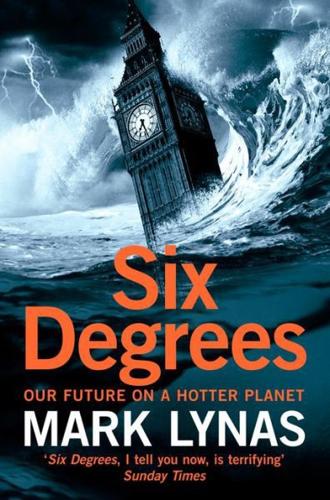
Six Degrees: Our Future on a Hotter Planet
by
Mark Lynas
Published 1 Apr 2008
Even with just a one-degree rise, the results were dramatic. In particular, 63 of the 65 modelled species lost around a third of their core environment. One species of microhylid frog, which instead of having tadpoles in ponds lays its eggs in moist soil, is predicted to go extinct altogether. With higher degrees of warming, rates of biodiversity loss become increasingly dramatic, adding up, in Williams's words, to ‘an environmental catastrophe of global significance’. Nor are animal species the only ones affected. A similar modelling study by David Hilbert of the CSIRO Tropical Forest Research Centre concluded that one degree of warming would reduce the area of highland rainforest by half, wiping out the habitat of many of the rare animal species mentioned above.
…
-L., and Déqué, M., 2003: Anthropogenic climate change over the Mediterranean region simulated by a global variable resolution model', Climate Dynamics, 20,237-339 p. 151 rainfall and frequent floods: McHugh, M., 2005: ‘Multi-model trends in East African rainfall associated with increased CO2’, Geophysical Research Letters, 32, L01707 p. 151 85 per cent of infections: 2002: The World Health Report 2002: Reducing Risks, Promoting Healthy Life, World Health Organization p. 152 96 per cent of the country: Ebi, K., et al., 2005: ‘Climate suitability for stable malaria transmission in Zimbabwe under different climate change scenarios’, Climatic Change, 73, 375-93 p. 152 hundreds of millions more people: van Leishout, M., et al., 2004: ‘Climate change and malaria: analysis of the SRES climate and socio-economic scenarios’, Global Environmental Change, 14, 87-99 p. 152 more people exposed: Ibid. p. 154 tepui endemic plants: Rull, V., and Vegas-Vilarrubia, T., 2006: ‘Unexpected biodiversity loss under global warming in the neotropical Guyana highlands: a preliminary appraisal’, Global Change Biology, 12,1-9 p. 154 coral reefs: Donner, S., et al., 2005: ‘Global assessment of coral bleaching and required rates of adaptation under climate change’, Global Change Biology, 11,2251-65 p. 155 Europe's plants: Thuiller, W., et al., 2005: ‘Climate change threats to plant diversity in Europe’, PNAS, 102,23, 8245-50 p. 155 Rockies and Great Plains: Townsend Peterson, A., 2003: ‘Projected climate change effects on Rocky Mountain and Great Plains birds: generalities of biodiversity consequences’, Global Change Biology, 9, 647-55 p. 155 north-eastern China: Shao, G., et al., 2003: ‘Sensitivities of species compositions of the mixed forest in eastern Eurasian continent to climate change’, Global and Planetary Change, 37, 307-13 p. 156 ‘novel’ climates: Williams, J., Jackson, S., and Kutzbach, J., 2007: ‘Projected distributions of novel and disappearing climates by 2100 AD’, PNAS, 104,14, 5738–42 p. 156 between a third and a half: Thomas, C, et al., 2004: ‘Extinction risk from climate change’, Nature, 427,145-8 p. 157 ‘decline by 10 per cent’: Halweil, B., 2005: ‘The irony of climate’, Worldwatch Magazine, March/April 2005 p. 157 Africa's semi-arid tropics: Sivakumar, M., et al., 2005: ‘Impacts of present and future climate variability and change on agriculture and forestry in the arid and semi-arid tropics’, Climatic Change, 70, 31-72 p. 157 crippling declines: Easterling, W., and Apps, M., 2005: Assessing the consequences of climate change for food and forest resources: a view from the IPCC, Climatic Change, 70,165-89 p. 158 ‘major planetary granaries’: Ibid.
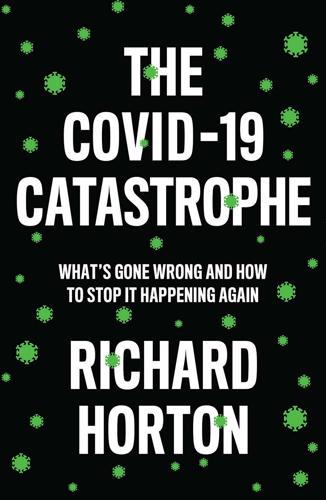
The COVID-19 Catastrophe: What's Gone Wrong and How to Stop It Happening Again
by
Richard Horton
Published 31 May 2020
At such points of political stress, mistrust and suspicion, one might step back to investigate some of the possible reasons for this new moment of instability in international relations and what that instability might mean for our collective future. In his book Risk Society, originally published in 1986, Ulrich Beck argued that the creation of wealth in modern societies was always accompanied by the production of new risks. From the climate crisis to increasing inequality, from cyberattacks to environmental pollution, from biodiversity loss to weapons of mass destruction, we see the truth of Beck’s claim in our everyday lives. The emergence of new viruses amid the sprawling cities of rapidly advancing nations is another such risk. Beck sought to prove that our world had become ‘reflexive’ – many of the problems we face today have been generated by ourselves: While all earlier cultures and phases of social development confronted threats in various ways, society today is confronted by itself through its dealings with risks.

The Weather Makers: How Man Is Changing the Climate and What It Means for Life on Earth
by
Tim Flannery
Published 10 Jan 2001
By the end of the year, however, glimmers of hope were beginning to emerge, with almost every head of government in the developed world alive to the issue. But we cannot wait for the issue to be solved for us. The most important thing to realise is that we can all make a difference and help combat climate change at almost no cost to our lifestyle. And in this, climate change is very different from other environmental issues such as biodiversity loss or the ozone hole. The best evidence indicates that we need to reduce our CO2 emissions by 70 per cent by 2050. If you own a four-wheel-drive and replace it with a hybrid fuel car, you can achieve a cut of that magnitude in a day rather than half a century. If your electricity provider offers a green option, for the cost of a daily cup of coffee you will be able to make equally major cuts in your household emissions.
…
Because waves of climate change will wash over islands, making them unsuitable habitat for many residents, many Pacific island birds will be pushed beyond their limits, and there will be extinctions in all forms of life from island trees to unique insects. And as we have seen, national parks are now islands in a sea of human-modified environments. Kruger National Park in South Africa is nearly the size of Israel, yet it still stands to lose two-thirds of its species.5 These, it must be remembered, are just a few examples of projected biodiversity loss from regions that have been studied. Imagine the world’s climate zones changing dramatically over your lifetime—so that Washington’s climate is more akin to that of Miami today—and try to think what it means for the forests, birds and other animals of the region where you live, and you’ll begin to see the bigger picture.

Stakeholder Capitalism: A Global Economy That Works for Progress, People and Planet
by
Klaus Schwab
Published 7 Jan 2021
It is not only fossil fuels. More broadly, over the past five decades, the use of natural resources tripled, according to the UN Environment's International Resource Panel.70 Their extraction and processing have “accelerated” over the last two decades, and “accounts for more than 90 percent of our biodiversity loss and water stress and approximately half of our climate change impacts,” the organization warned. These trends coincided with one of increased pollution of at least three sorts: water, air, and soil. Take first the issue of water. UN Water, the agency coordinating the United Nations work on water and sanitation, estimated that globally 2 billion people live in countries experiencing high water stress,71 often due to climate change.
…
For the first time in 2020, it said, “Severe threats to our climate account for all of the Global Risks Report's top long-term risks.”85 It pointed to the risks associated with extreme weather events, failure of climate-change mitigation and adaptation, human-made environmental damage, major biodiversity losses, resulting in severely depleted resources, and major natural disasters. We should not take these risks lightly like we did in the 1970s, especially as the next generation is already looking over our shoulder, wondering what legacy we plan to leave. That would be nothing short of a betrayal of future generations.
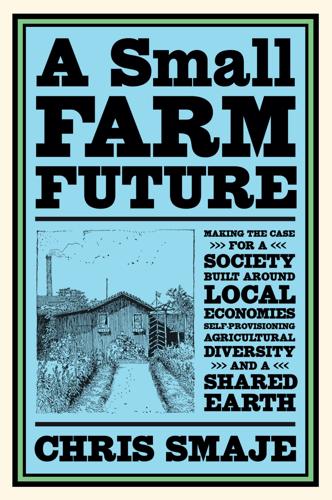
A Small Farm Future: Making the Case for a Society Built Around Local Economies, Self-Provisioning, Agricultural Diversity and a Shared Earth
by
Chris Smaje
Published 14 Aug 2020
(I consider this question in Chapter 12, ‘Households, Families and Beyond’, page 165.) A more general problem is that economic development seems to be the main force behind both fertility decline and ecological breakdown, such as increased greenhouse gas emissions, other kinds of pollution, biodiversity loss and so on. Increases in these latter trends are proportionately greater than population increase, suggesting they can’t simply be explained by it. Ultimately, it’s the material and energy throughputs underlying these trends that must be explained and, more importantly, reduced, and these aren’t straightforwardly indexed to population levels.9 Widely cited equations such as I = PAT (human environmental impact = population × affluence × technology) are misleading here inasmuch as they imply that population is directly, proportionately and causally linked to impact.
…
It’s hard to imagine a realistic scenario in which the world can add around $40 trillion of new economic output in the 2040s alone while decarbonising by using low-EROI energy sources that require greater investment in unproductive intermediate stocks, and deal simultaneously with a raft of other crises related to soil, water and biodiversity loss. But here I’m going to focus on a second form of crisis – the human inequalities within and between countries that seem both an ethical outrage and a political tinderbox. On this point, progress-literature (see ‘Introduction’, page 5) attempts to soothe us with a different view. Steven Pinker, for example, asserts that ‘industrial capitalism launched the Great Escape from universal poverty in the 19th century and is rescuing the rest of humankind in a Great Convergence in the 21st’.127 I’m reluctant to enter the statistical labyrinth through which such claims are defended or refuted because, unlike Pinker, I think summary statistics and grand historical claims make for uncomfortable bedfellows, but I’d like to take a cautious step inside, just to suggest that other views are possible.
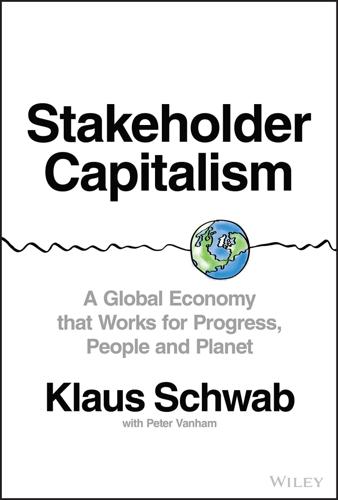
Stakeholder Capitalism: A Global Economy That Works for Progress, People and Planet
by
Klaus Schwab
and
Peter Vanham
Published 27 Jan 2021
It is not only fossil fuels. More broadly, over the past five decades, the use of natural resources tripled, according to the UN Environment's International Resource Panel.70 Their extraction and processing have “accelerated” over the last two decades, and “accounts for more than 90 percent of our biodiversity loss and water stress and approximately half of our climate change impacts,” the organization warned. These trends coincided with one of increased pollution of at least three sorts: water, air, and soil. Take first the issue of water. UN Water, the agency coordinating the United Nations work on water and sanitation, estimated that globally 2 billion people live in countries experiencing high water stress,71 often due to climate change.
…
For the first time in 2020, it said, “Severe threats to our climate account for all of the Global Risks Report's top long-term risks.”85 It pointed to the risks associated with extreme weather events, failure of climate-change mitigation and adaptation, human-made environmental damage, major biodiversity losses, resulting in severely depleted resources, and major natural disasters. We should not take these risks lightly like we did in the 1970s, especially as the next generation is already looking over our shoulder, wondering what legacy we plan to leave. That would be nothing short of a betrayal of future generations.

The Measure of Progress: Counting What Really Matters
by
Diane Coyle
Published 15 Apr 2025
The current System of National Accounts (SNA), including the all- important figure for GDP, dates from the 1940s when physical capital was the binding constraint on growth in the postwar era, natural resources seemed free, and the pressing economic policy challenge was seen as effective demand management so the Great Depression could never recur. Now, nature is the binding constraint. Extreme weather will destroy much physical and human capital, biodiversity loss will reduce agricultural productivity, and new zoonotic diseases seem likely I n t r o du c t i o n 5 to emerge as humans press harder upon natural habitats. And the main economic policy challenge is now on the supply side, restarting the economy’s productivity engine to drive improving living standards, at a time when t here are headwinds such as climate shocks, conflict, and ageing societies.
…
Finally, if the justification for adding digital welfare to GDP is to construct a better measure of economic welfare, should we not also take into account all the other contributors to consumer welfare, ranging from the value of conventional public goods such as parks and defence to the external costs of pollution or biodiversity loss? And if so, should they be valued at marginal prices, like diamonds, or at their true shadow prices, like drinkable w ater? All in all, there is considerable interest in all these approaches but many unanswered questions. User Innovation So far this chapter has mainly focused on commercially produced free digital products.

The New Prophets of Capital
by
Nicole Aschoff
Published 10 Mar 2015
Over the past decade and a half, this state-centered focus has shifted to a consumer-centered focus as fears stoked by globalization have changed the frame of environmentalism. In the age of global supply chains, free trade agreements, and capital flight, states have increasingly come to be seen as incapable of protecting their citizens from big global problems like ozone depletion, climate change, and biodiversity loss, and even more tractable problems, like controlling hazardous waste flows or regulating toxic substances in consumer goods.14 But while processes of globalization have delegitimized states and made citizens feel disconnected from the protective embrace of their respective governments, they have also helped to forge new, global identities based on feelings of “world-citizenship.”15 Westerners in particular have become uneasily aware of their power as consumers in shaping and driving global value chains.

The Future Is Faster Than You Think: How Converging Technologies Are Transforming Business, Industries, and Our Lives
by
Peter H. Diamandis
and
Steven Kotler
Published 28 Jan 2020
A few months later, the World Economic Forum seconded that notion, releasing their Global Risks Report, the latest edition of a periodic issuance designed to highlight the top five threats humanity will face over the next decade. Traditionally, the WEF’s concerns are economic—oil crises, financial crashes, that sort of thing. But 2018 marked the first time that fiscal fears didn’t make the top five. Instead, today’s biggest dangers are all ecological in nature: water crises, biodiversity loss, extreme weather, climate change, and pollution. Over the next few sections, we’ll examine how technology is helping us tackle the WEF’s top five concerns, but this doesn’t happen automatically. Ours is not a techno-utopian argument. Solving our planet’s ecological woes requires technology, for certain, but it also demands one of the largest cooperative efforts in history.
…
Not only is this good for the environment, it’s good for the bottom line. GM recently reported they’ve saved $1 billion over the past few years with their 152 zero waste facilities. When we started this chapter, we highlighted the World Economic Forum’s top five threats—water crises, climate change, biodiversity loss, extreme weather, and pollution. We’ve addressed all five individually, yet they’re not individual problems. Extreme weather results from climate change, but its effects are magnified by other issues. Consider Myanmar’s Irrawaddy River Delta, once a biodiversity hotspot that was home to one of the largest mangrove forests on Earth.

Bread, Wine, Chocolate: The Slow Loss of Foods We Love
by
Simran Sethi
Published 10 Nov 2015
David Roubik of the Smithsonian Tropical Research Institute in Balboa, Panama, found coffee cherry yields skyrocketed nearly 60 percent when the shrubs’ flowers were visited by African honeybees.61 And an additional study in Tanzania found that, when birds and bees spent quality time with coffee blossoms, the cherries were approximately 7 percent heavier.62 Yet these small miracles are dying off for reasons we can’t fully explain. There are more than 25,000 different bee species in the world, but many are threatened.63 How many? We don’t exactly know, because it’s tough to study bees on a global scale. A 2015 study from the International Union for Conservation of Nature offers a sobering snapshot of this biodiversity loss: Nearly 10 percent of Europe’s almost 2,000 wild bee species are at risk of extinction, while an additional 5 percent will likely be threatened in the near future. Even more troubling was the study’s assertion that it is impossible to determine whether the majority of European bee species are at risk because of “an alarming lack of expertise and resources.”64 We don’t know what we don’t know, so it’s difficult to fully quantify what we’re actually losing.
…
“Facts and Figures on Marine Biodiversity,” United Nations Educational, Scientific and Cultural Organization (UNESCO), accessed April 27, 2015, http://www.unesco.org/new/en/natural-sciences/ioc-oceans/priority-areas/rio-20-ocean/blueprint-for-the-future-we-want/marine-biodiversity/facts-and-figures-on-marine-biodiversity/. 11.“Phytoplankton,” Woods Hole Oceanographic Institution, accessed April 27, 2015, http://www.whoi.edu/main/topic/phytoplankton. 12.“Facts and Figures on Marine Biodiversity,” UNESCO. 13.Boris Worm et al., “Impacts of Biodiversity Loss on Ocean Ecosystem Services,” Science 314 (November 2006): 790, doi:10.1126/science.1132294. 14.Robert Krulwich, “The Hardest-Working Mom on the Planet,” Krulwich Wonders, NPR, June 2, 2011, http://www.npr.org/sections/krulwich/2011/06/02/136860918/the-hardest-working-mom-on-the-planet. 15.Ed Yong, “Octopus Cares for Her Eggs for 53 Months, Then Dies,” Phenomena: Not Exactly Rocket Science (blog), National Geographic, July 30, 2014, http://phenomena.nationalgeographic.com/2014/07/30/octopus-cares-for-her-eggs-for-53-months-then-dies/. 16.Rachel Nuwer, “Ten Curious Facts About Octopuses,” Smithsonian.com, October 31, 2013, http://www.smithsonianmag.com/science-nature/ten-curious-facts-about-octopuses-7625828/?

Innovation and Its Enemies
by
Calestous Juma
Published 20 Mar 2017
Dulvy, Frédéric Mélin, Reg Watson, Didier Gascuel, and Olivier Le Pape, “Global Marine Primary Production Constrains Fisheries Catches,” Ecological Letters 13, no. 4 (2010): 501. 6. Boris Worm, Edward B. Barbier, Nicola Beaumont, J. Emmett Duffy, Carl Folke, Benjamin S. Halpern, Jeremy B. C. Jackson, et al., “Impacts of Biodiversity Loss on Ocean Ecosystem Services,” Science 314, no. 5800 (2006): 787–790. 7. Chassot et al., “Global Marine Primary Production,” 501. 8. Bernice Lee et al., Resources Futures: A Chatham House Report (London: Chatham House, 2012). 9. Lee et al., Resources Futures. 10. C. L. Hew, G. L. Fletcher, and P.
…
DC), 157, 168 Battle of Yamamah (632), 72 Bayer company, 244 Bayezid II, Sultan, 68 Beef, frozen, tariffs on, 186 Beer industry, 61, 178 Behavior, 24, 29, 99, 158, 273 Behavioral economics, 33, 36 behavioral change, 33–34 foundations for, 35 Belfield, Reginald, 155 Belgium dioxin-contaminated animal feed in, 240 disease-resistant wheat cultivars in, 228 Beliefs, 25, 301, 312 Belighi (poet), 54 Bell, Alexander Graham, 257 Belli, Onorio, 55 Bell Labs, 41–42 Ben & Jerry’s, 270 Berliner, Ernst, 231 Berners-Lee, Tim, 3 Biases. See also Stigmatization in agricultural systems, 228 omission bias, 35 status quo bias, 35 Bid’a (new products, religious innovation), 48, 70 “Big Four” recording companies, 212, 218 Bill and Melinda Gates Foundation, 350n1 Binoculars, 70 Biodiversity, loss of, 259 Biological diversity, 127, 239, 303 Biology. See also synthetic biology chemistry vs., European chemical company knowledge of, 230–231 Biopesticide industry, 232 Bioremediation, 314 Biotechnology, 4, 235–236, 253–254 opposition to, 2–3, 30, 236, 238, 242, 268, 274 Bismarck, Otto von, 100 Block, Louis, 190–191 Book guilds, 83 Boric acid, in butter, 97 Boston, parking restrictions in, 132 Boston Symphony Orchestra, 213 Boyer, Herbert, 236 Brewing industry, need for better refrigeration, 178–179 A Brief Description of the Excellent Vertues of that Sober and Wholesome Drink called Coffee… (Rosée), 59 Brine, in refrigerators, 189–190 Britain.
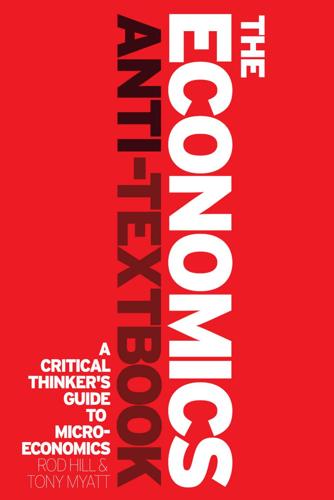
The Economics Anti-Textbook: A Critical Thinker's Guide to Microeconomics
by
Rod Hill
and
Anthony Myatt
Published 15 Mar 2010
. — (2008a) ‘International Code of Marketing of Breast-Milk Substitutes, frequently asked questions, updated version 2008’, Geneva: World Health Organization, available at whqlibdoc.who.int/publications /2008/9789241594295_en.pdf, accessed 23 November 2008. — (2008b) ‘Air quality and health’, August, available at www.who.int/topics/ air_pollution/en/. Worm, B. et al. (2006) ‘Impacts of biodiversity loss on Ocean Ecosystem Services’, Science, 314: 787–90. Wray, R. (2008) ‘Breeding toxins from dead PCs’, Guardian, 6 May, 289 Bibliography ing’, Press release, 20 June, www. unicef.org/media/media-40135.html. — (2008) The Child Care Transition, Innocenti Report Card 8, Florence: UNICEF Innocenti Research Centre.
…
J., 46, 56, 169–70, 210, 229; Regulation Misled by Misread Theory, 134 Bear-Sterns, collapse of, 143 beauty contest analogy, 149 Bebchuk, L. A., with J. M. Fried, Pay without Performance, 114 behavioural economics, 23–5, 146–7, 244 Benicourt, Emmanuelle, 102 Bentham, Jeremy, 74 Bergson, A., 139 Berra, Yogi, 169 biodiversity, loss of, 165 Blinder, Alan, 35–6, 46, 56, 57, 103, 169–70 blood, donation of, 24 Bok, D., 180 boom and bust, cycles of, 147–8 Boulding, Kenneth, 253 bounded rationality see rationality, bounded bounded willpower, 244 branding, 128 breastfeeding, 82–3 British Medical Association, 82 Brock, James W., 108 Brown Brothers company, 240 Brue, S.

Hacking the Code of Life: How Gene Editing Will Rewrite Our Futures
by
Nessa Carey
Published 7 Mar 2019
If the new varieties of gene-edited crops allow farmers to use existing farmland more efficiently, that will indeed be a great achievement. But we always have to beware of unintended consequences. What if instead the new varieties are used to bring more land under cultivation, converting previously marginal or agriculturally useless land into farmed fields? This will inevitably cause more biodiversity loss, as these marginal lands are often the only place where species are able to cling on to some habitat. If the new technologies are implemented without addressing the fundamental issues of food waste and over-consumption, they will at best be delaying a doomsday scenario, and at worst pushing us towards it faster.
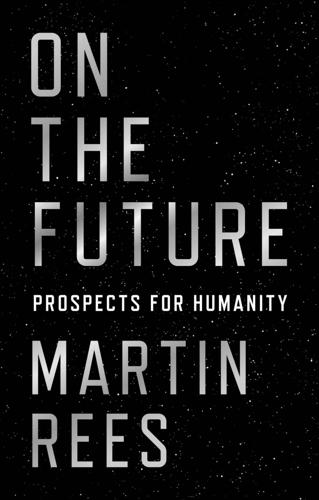
On the Future: Prospects for Humanity
by
Martin J. Rees
Published 14 Oct 2018
See also planets; SETI (search for extraterrestrial intelligence) Allen, Woody, 178 ALMA radio telescope in Chile, 207 AlphaGo, 86–87, 88, 106, 191 AlphaGo Zero, 87 Alzheimer’s disease, failure of drugs for, 212 Ambrosia, life-extension start-up, 80 Anders, Bill, 120 Anderson, Philip, 176 Andromeda galaxy, 178 animal research, ethics of, 221 Anthropocene, 3, 31 antibiotic resistance, 72 antimatter, 169 Apollo programme, 120, 137, 139, 144, 145 Archimedes, 165 Arkhipov, Vasili, 18 Armstrong, Neil, 120, 138 arts and crafts, resurgence of, 98 Asilomar Conference, 74–75 assisted dying, 70–71 asteroid impact: collapse in global food supplies and, 216; existential disaster compared to, 114; on Mars, sending rock to Earth, 129; nuclear destruction compared to, 15, 18; planning for, 15–16, 43; as rare but extreme event, 15, 76 asteroids: establishing bases on, 149; travel to, 148 astrology, 11 atoms: aliens composed of, 160; complexity and, 172–74; as constituents of all materials, 165–66, 168; hard to understand, 195; number in visible universe, 182; quantum theory of, 166, 205 Bacon, Francis, 61 battery technology, 49–50, 51 Baumgartner, Felix, 149 Baxter robot, 106 Before the Beginning (Rees), 186 The Beginning of Infinity (Deutsch), 192 Bethe, Hans, 222 The Better Angels of Our Nature (Pinker), 76 Bezos, Jeff, 146 big bang: birth of universe in, 124; chain of complexity leading from, 164, 214; conditions in particle accelerator and, 111; intelligent aliens’ understanding of, 160; physical laws as a given in, 197–98; possibly not the only one, 181, 183, 184–85 (see also multiverse) Bill & Melinda Gates Foundation, 224 biodiversity: loss of, 32–33, 66; our stewardship of, 35 bio error, 73, 75, 77–78 biofuels, 32, 52 biohacking, 75, 78, 106 biotech: benefits and vulnerabilities of, 5, 6; concerns about ethics of, 73–75; concerns about safety of, 73, 74, 75, 76, 116, 218; responsible innovation in, 218, 225; threat of catastrophe due to, 76, 109–10; unpredictable consequences of, 63.

Unsustainable Inequalities: Social Justice and the Environment
by
Lucas Chancel
Published 15 Jan 2020
We must now examine the complex relationship between economic inequalities and another form of injustice that lies at the heart of unsustainable development: environmental inequalities. PART TWO The Vicious Circle of Environmental and Social Inequalities 3 Unequal Access to Environmental Resources THE ENVIRONMENTAL CRISIS we are presently experiencing—a warming climate; biodiversity loss; polluted air, soil, and water—is usually described as an injustice committed by all those who are alive today in bequeathing an ill-fated future to all those who will come after them.1 This is partly true, particularly as far as the climate is concerned, since it takes several decades for CO2 emissions to have a warming effect on the atmosphere, sometimes with irreversible consequences for ecosystems.
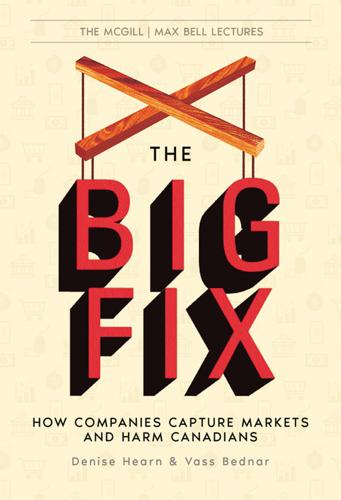
The Big Fix: How Companies Capture Markets and Harm Canadians
by
Denise Hearn
and
Vass Bednar
Published 14 Oct 2024
As Jacobs says, “Both the competition and the arena for competition are necessary.”268 If we deplete our own habitat to the point of not being able to sustain life, and even our own lives, that feedback loop ends in self-termination. We are facing enormous challenges as a nation, and as a species, including rising inequality, climate change, biodiversity loss, and democratic decline. We must place limits on ourselves; otherwise, we risk a race to the bottom that ends in planetary and human destruction. Markets are constantly evolving, changing, and forming anew. Novel innovations mean that policymakers must be adaptive and responsive to ensure that shifting markets don’t get rigged by private actors that set the rules in their favour and perpetuate illusions of rivalry with their peers.
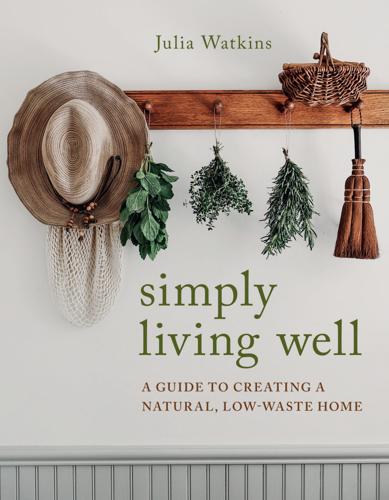
Simply Living Well: A Guide to Creating a Natural, Low-Waste Home
by
Julia Watkins
Published 6 Apr 2020
Because they are a concentrated product, it takes an extraordinary amount of plant material to produce a small amount of an essential oil: One pound of essential oil requires, for example, 10,000 pounds of rose petals, 2,000 pounds of cypress, 6,000 pounds of lemon balm, 250 pounds of lavender buds, or 1,500 lemons. That’s a lot of natural resources, and the impacts can be devasting depending on how and at what scale the plants are grown and harvested. Many large-scale distributers work with corporate farms that use a farming practice known as monocropping, which often leads to depleted soils, biodiversity loss, and the use of pesticides and herbicides. Seeking out essential oils that bear organic certification is the easiest way to guarantee that they were grown without synthetic fertilizers, pesticides, herbicides, irradiation, or genetic engineering. However, some companies forego organic certification since the system isn’t specific to essential oils.

The Coffee Book: Anatomy of an Industry From Crop to the Last Drop
by
Gregory Dicum
and
Nina Luttinger
Published 1 Jan 1999
Sun or reduced-shade systems account for as much as 68 percent of Colombia’s and 40 percent of Costa Rica’s permanent cropland planted in coffee. About 40 percent of the land planted with coffee in Mexico, Colombia, Central America, and the Caribbean during the early 1990s has been converted to the technified system. This has caused significant tropical biodiversity loss, including the now-notorious decline of neotropical migratory songbirds such as Baltimore orioles, warblers, and vireos. These birds summer in the United States and migrate to different regions of Latin America during the winter, where they are heavily dependent on forested landscapes such as those provided by traditional coffee agroforestry systems.
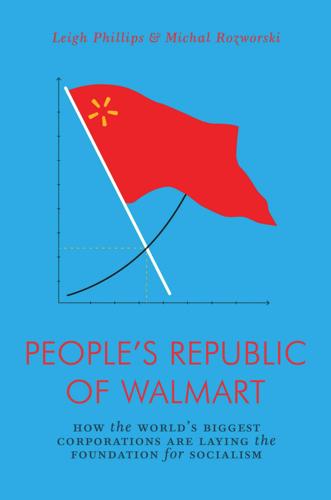
The People's Republic of Walmart: How the World's Biggest Corporations Are Laying the Foundation for Socialism
by
Leigh Phillips
and
Michal Rozworski
Published 5 Mar 2019
Climate change and the wider bio-crisis reveal that multiple local, or regional or continent-wide, decision-making structures are obsolete. No jurisdiction can decarbonize its economy unless others do as well. For even if one country figures out how capture and store carbon, the rest of the world will still face an acidifying ocean. Similar truths hold for nitrogen and phosphorus flows, closing nutrient-input loops, biodiversity loss, and freshwater management. Moving beyond environmental questions, we could say the same about antibiotic resistance, pandemic diseases, or near-Earth asteroids. Even in less existential policy areas, like manufacturing, trade, and migration, too many interlinked nodes tie our truly planetary society together.
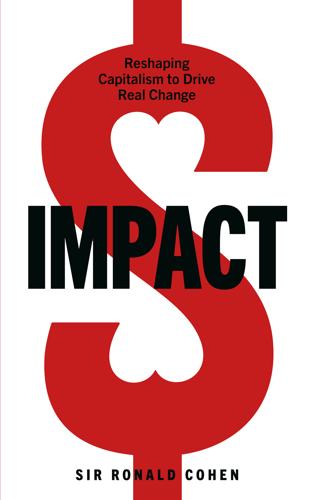
Impact: Reshaping Capitalism to Drive Real Change
by
Ronald Cohen
Published 1 Jul 2020
Aboyeji, Iyinoluwa ‘E’ 48 ABP (Dutch civil service pension fund) 74 accelerators, start-up 175–7, 197 Accenture 90 Access Foundation 175 accounts, impact-weighted financial v, 29–30, 67, 84, 107–17, 159, 183, 186, 190–1, 201 Acumen 84 Adidas 93, 101–4, 107 Adidas x Parley 102–3 Adie 162–3 Africa 1, 27, 39, 48, 49, 83, 84, 136, 148, 167–8 agriculture 36, 45–6, 78, 83, 84, 94–5 Ahrens, Andreas 105 Ailman, Christopher 77–8 Align17 80 Aliko Dangote Foundation 136 Alpert, Sharon 145 Amazon (online retailer) 14 Andela 46, 47–9 AOL 15, 48 Apax Partners 1, 2–3, 15, 18, 35, 174–5 AP funds (pension fund) 74 APG (pension fund) 73 Apple 14, 15, 77 Apposite Capital 142 Argentina 125, 164, 173, 176, 177 artificial intelligence (AI) 39, 40 Ashoka 58, 59 Asian Women’s Impact Fund 144 asset classes 7, 13, 27, 67, 187, 191 asset management 33, 63, 64, 65, 69, 70, 71, 72, 73, 74, 79–85, 172 Ather Energy 56 Australia 6, 22, 40, 124, 158, 176, 204 Avanath 143 Aviram, Ziv 40 Avishkaar 84 Bain Capital 81 Baldinger, Michael 79 Ballmer, Steve 127 Bangladesh 94 Bank of America 81, 115 Bank of Palestine 163 Bannick, Matt 148 Barby, Clara 29 Barclays 169 Bassa, Naim 39–40 Bayer 150 B Corp (Benefit Corporation) 57, 92, 96, 149, 177, 189, 197 Bedouin community, Israel 52–3, 163 Beijing, US embassy 28 Ben & Jerry’s 57 Bertelsmann Stiftung 153 Bhatia, Amit 7 Big Lottery Fund 175 Big Society Capital (BSC) v, 19, 72, 76, 160, 169–70, 171–2, 175 Big Win, The 136 Bill and Melinda Gates Foundation 149–50 Strategic Investment Fund (SIF) 149–50 biodiversity loss 16 biotechnology 45 BlackRock 32, 62, 82 Blair, Tony 160, 179 B Lab 56–7, 107 blended finance 197 Blood, David 19, 26, 49, 82 Blue Orchard Finance 80, 145 BNP Paribas 163 Bolton, Emily 20 Bombas 54 bond markets 71, 191 Bono 79 BP 111 Branson, Richard 88 Brazil 7, 41, 42, 94, 160–1, 177 Bridges Fund Management v, 18–19, 29, 53, 83, 125, 126, 127, 165 Bridges Ways to Wellness SIB 126 British Asian Trust 27, 137, 191 Brodin, Jesper 104, 106 Brown, Gordon 25, 27, 136, 179 B Team 88 Buffet, Warren 117 Burberry 54 Business for Inclusive Growth 88 Business Roundtable 87–8 Buycott 89–90 Cabinet Office 160, 161, 169 California Public Employees’ Retirement System (CalPERS) 76, 77 California State Teachers’ Retirement System (CalSTRS) 77–8 Calouste Gulbenkian Foundation 144, 153 Cameron, David 6, 19, 160, 169, 179 Camfed 137 Canada 6, 124, 144, 158, 160, 171 Capital Impact Partners 143 capitalism 3, 4, 5, 82, 117, 146, 148, 154, 181, 182, 186, 191, 193, 194, 200 impact capitalism 4, 180, 181–94, 200 see also impact investment Capricorn Investment Group 149 carbon emissions 18, 36, 55–6, 62, 66, 74, 76, 83, 90, 91, 97, 105, 106, 107, 111, 112–13, 139, 149 Carlyle Group 81 Carney, Mark 106–7 Cartigny, Gerald 73 Casa de Depositi e Prestiti (CDP) 171 Case, Steve 48, 52 Catalyst Strategies initiative 167 catalytic capital 151 Catalytic Capital Consortium 151–2 CDC (UK’s development finance institution (DFI)) 167 Central Outcome Funds 165–6 Chang, Alan 149 Chan, Priscilla 48–9, 151 Chan Zuckerberg Initiative (CZI) 48–9, 151 Charities Act (2016) 141 Charles, Prince 21–2, 191 Chiang, John 77 Children’s Investment Fund Foundation 132 Chobani 93, 98–101, 107 Clevedon Pier 173 Climate Action 100+ 76 climate change 16–17, 28, 45, 66, 73, 74–5, 76, 77, 81, 95, 104, 105, 106, 107, 139, 177, 191 Coca-Cola 90, 91, 110–11 Commission on Unclaimed Assets (2005–7) 19, 169 Community Interest Companies (CIC) 57 Cone Communications Millennial Employee Engagement Study (2016) 92 Conservative Party 160, 179 Consumer Goods Forum, Berlin (2017) 86–7, 97 contraceptive implants 150 coronary heart disease 113 corporate social responsibility (CSR) 92–3, 96 corporation, redefining purpose of 57, 87–8, 93 see also benefit corporation CRE Venture Capital 49 credit 43–4, 80, 83, 95, 144, 163 Crédit Agricole 95 crop production 45–6 CureVac 150 Daimler AG 112 Danone 57, 86, 87, 91, 93, 94–8, 107 David and Lucile Packard Foundation 144 DBL Partners 83–4 Delaney, John 179 Department for International Development (DFID) 137, 167, 168 Department for Work and Pensions (DWP) 164 Designated Utilization Foundation 170 development aid 134, 136, 166–8, 198 Development Finance Institutions (DFI) 166, 167, 198 DIBs (Development Impact Bonds) 8, 27, 68, 80, 124, 130–5, 137, 138, 153, 157, 163, 165, 167–8, 184, 198, 203, 204 Dimon, Jamie 87 dormant accounts 170, 171, 198, 205 Dormant Account Utilization Bill (2016), US 170 Dormant Assets Commission, UK 170 ‘double bottom line’ investment strategy 83–4 Dove 90, 91 Drayton, Bill 58 driverless cars 39, 40 drones 37–9, 149 Dutch SDG Investing Agenda 73 Dyson, Tasha 126 Eccles, Toby 20 Echoing Green 58–9 Edmond de Rothschild Foundation 153 Educate Girls Development Impact Bond 80, 132–4, 137 Education Commission 27, 134, 136 Education Outcomes Funds 26–7, 136, 148 Education Outcomes Fund for Africa and the Middle East (EOF) 136, 148 electric vehicles 55–6 ELMA 136 Elvis & Kresse 54–5 emerging markets 7, 13, 131, 167 Employee Retirement Income Security Act (ERISA) 157 Endeavor 59 endowment 9, 138–46, 149, 152, 153, 173, 187, 188, 202, 204 entrepreneurship 3, 4, 5, 9, 14, 15, 17, 31, 33, 83, 131, 146, 153, 154, 156, 158, 174, 175, 176, 177, 178, 183, 186, 191, 193, 194, 197 age of impact entrepreneurship 34–61, 188–9 government support for 60, 70, 174–5, 176, 177, 178 micro-entrepreneurs 83 social entrepreneurship 8, 19, 21, 82, 137, 144, 148., 176–7 tech entrepreneurship 5, 17, 55, 61, 138 environmental challenges 3, 4, 5, 8, 9, 12–13, 16, 17, 18, 27, 32, 181–2, 183, 191, 192, 193, 194, 197, 198, 199, 200, 201, 202, 203, 205 asset management and 83, 84 B Lab and 56–7 business and 88, 89, 90, 93, 97, 101, 102, 107, 108, 109–13, 114, 116 climate change 16–17, 28, 45, 66, 73, 74–5, 76, 77, 82, 95, 104, 105, 106, 107, 139, 177, 191 government and 154, 156, 159, 162, 163, 164, 166, 171, 172, 174, 176, 177–8, 179 green bonds 63, 173, 191, 199 impact philanthropy and 121, 131, 138, 139, 140, 141, 142, 143, 153 measuring impact on 28 pension funds and 72, 78 SDGs and see United Nations: Sustainable Development Goals SIBs and 68 Environmental Sustainable Governance (ESG) 63, 64, 70, 71, 72, 75, 76, 77, 78–9, 80, 81, 82, 83, 115, 145, 159, 187, 190, 198–9, 200, 203, 205 Esmée Fairbairn Foundation 23 European Bank for Reconstruction and Development 163 European Union 1, 6, 159–60, 171, 173, 176 Everplans 47 externalities 28 Exxon Mobil 111 Faber, Emmanuel 86–7, 94, 95, 96, 97 Facebook 14, 48, 83 family offices 71, 81, 146 Fawcett, Mark 74–5 FC United of Manchester 172–3 Ferrari, Sara 81 fiduciary duty 75, 145, 199 financial crisis (2008) 158–9, 185–6 financial markets, size of 71 Fink, Larry 33, 62, 82 Fink, Lord (Stanley) 19 Finland 124, 163 Fintech 42–5, 199 Flint, Michigan water crisis 54 FMO (Dutch development finance institution) 163 Fondece 176 Ford 111–13, 136, 140, 142–4, 153 Foundation 140, 142–4, 153 France 1, 6, 22, 58, 63, 75–6, 86, 88, 95, 124, 158, 159, 160, 161, 162–3, 173–4, 175–6, 177, 184, 187, 204–5 Francis, Pope 6 Freedom Bakery, Glasgow 172 Friedman, Milton 185 FTSE Blossom Japan Index 78 Fusion Housing SIB, The 126–7 Gates, Bill 55, 149–50 Gaudio, Paul 103 G8 Social Impact Investment Taskforce (G8T) v, 6, 7, 148, 160, 235 gender bond 191 generally accepted accounting principles (GAAP) 110, 115, 117 generally accepted impact principles (GAIP) 110, 114 General Mills 113 General Motors 112 Generation Investment Management 49–50, 82–3 Georgieva, Kristalina 68 Ghislane 37 Giddens, Michele 18 Gilbert, Jay Coen 108 Glencore 76 Global Family Office Report (2017) 81 Global Impact Investing Network (GIIN) 108 Global Impact Investing Rating System (GIIRS) 108 globalization 13, 16 Global Reporting Initiative (GRI): Sustainability Reporting Standards 108 Global Steering Group for Impact Investment (GSG) v, 7, 27, 29, 109, 136, 148, 158, 171, 206 Global Value Exchange 31, 162 Goldberg, Randy 54 Goldman Sachs 80, 127 Goldstein, John 80 Google 14, 49 Gore, Al 28, 49, 83 government 3–4, 30–1, 70, 154–80, 189–90 how impact investment can help governments do their job 155–8 local government 26, 125–6 measuring and valuing impact of 30–1 nine things for governments to do 158–77 Government Pension Investment Fund (GPIF), Japan 78 Grameen Danone Foods Social Business Enterprise 94–5 Great Depression vii, 185 green bond 63, 173, 191, 199 G7 166 gut microbiome, human 45 Guy’s and St Thomas’ Charity 142 GV (formerly Google Ventures) 49 Haas School of Business, University of California, Berkeley 51 Harrison, Peter 64 Harvard Business School 2, 25, 26, 29, 92–3, 109 Hawkes, Richard 191 Hayes, Lisa 40 Heath, David 54 hedge funds 13 Heron Foundation 139, 145 Hewlett Foundation 137, 153 high-net-worth individuals (HNWIs) 70, 71, 81, 145, 200 high-sustainability investments 74 Hines, Luke 39–40 Hohn, Sir Christopher 66 homelessness 30, 31, 54, 124, 125, 126, 127, 166, 170 Horn, Bernard 20 Houlahan, Bart 108 HSBC 75, 169 Hulme, Philip 19 Husain, Safeena 132 Hutchison, David 20 IBM 47, 189 IKEA 93, 103, 104–6, 107 impact capitalism 4, 180, 181–94, 200 impact economies 68, 85, 155, 157, 159, 161, 178, 180, 184, 186, 192, 200 impact investment birth/origins of 17–28 business, embedding in 86–117 defined 11–13 entrepreneurs, rising generation of 34–61 future of 9–10, 32–3, 186–94 government, role of see government impact capitalism, move from selfish capitalism to 181–94 ‘impact investing’ term coined 11 market growth 64 measuring/valuing 10, 13, 14, 28–31, 64, 67–8, 69, 107–17, 119, 120–1, 159, 183, 186, 190–1, 201 philanthropy and 9, 70, 118–53, 187–8 risk and see risk specialist impact investing firms 82–3 wholesalers 168–72, 184, 201 ‘Impact Investment: The Invisible Heart of Markets’ report (2014) 6 Impact Management Project (IMP) v, 29, 109 impact philanthropy 9, 70, 118–53, 187–8 Impact Revolution v, 1, 5, 8, 9, 10, 14, 28, 32, 33, 85, 152, 180, 182, 186, 188, 189, 235 impact unicorn 35, 188–9 impact ventures/impact enterprises 34–61, 63, 66 impact washing 30, 64 Impact-Weighted Accounts Initiative (IWAI) v, 29–30, 109–17, 201 impact-weighted financial accounts v, 29–30, 67, 107–17, 159, 183, 186, 190–1, 201 Impresa Sociale 177 Imprint Capital 80 incubator (collaborative program designed to help new start-ups grow their business) 175, 176, 202 India 7, 27, 43, 47, 53, 56, 80, 84, 94, 124, 131–4, 153 Indigo Agriculture 45–6 inequality vii, 1, 3, 14, 15–16, 58, 88, 116, 140, 154, 155, 177, 179, 181, 182, 186, 192–3, 194, 200 Ingka Group 104 inheritance, generational 65, 81 Instiglio 132 institutional investors 63, 76, 81, 85, 95, 125, 174, 202 insurance companies 69, 71, 73, 157, 170, 202 Intarcia Therapeutics 150–1 Intel 40 intermediary 22, 202 International Committee of the Red Cross Program for Humanitarian Impact Investment (PHII) 133 International Finance Corporation (IFC) 64, 68–9 ‘Operating Principles for Impact Management’ 68–9 ‘The Promise of Impact’ report 69 Investing with Impact Platform 81–2 Invest Palestine 163 ‘invisible hand’ of markets 10, 97, 184, 185 invisible heart of markets 6, 10, 185 iPhone 77 Ireland 171 Israel 7, 39, 40, 50, 52, 53, 83, 124, 152, 158, 163, 177 Italy 6, 11, 58, 133, 158, 159, 171, 173, 177 Jana Partners 77 Japan 6, 63, 78–9, 124, 144, 158, 159, 170, 171 Japan National Advisory Board 171 Jewish Vocational Services (JVS) 128–9 Jobs, Steve 55 Joby Aviation 149 Johnson, Jeremy 48 Jonathan Rose 143 JP Morgan 87, 169 J.W.

Survival of the Richest: Escape Fantasies of the Tech Billionaires
by
Douglas Rushkoff
Published 7 Sep 2022
Although they don’t spit carbon fumes while we drive them, their lifetime carbon footprint may not be much better than their gas counterparts—at least not until we change more of the power grid from coal to less carbon-intensive processes, and commit to producing renewables without the subjugation of the global south, toxic pollution, and biodiversity loss. Even accepting that EVs and solar panels are or will one day be more energy-efficient than coal- and gas-burning technologies, the bigger question is how fast we attempt to transition. For renewables to provide a majority of our power, we would have to increase wind and solar twenty-fold. But there are not enough rare earth metals on the planet to build such an energy system and then replace it every couple of decades.

McMindfulness: How Mindfulness Became the New Capitalist Spirituality
by
Ronald Purser
Published 8 Jul 2019
In an interview about his promotion of military mindfulness, Kabat-Zinn recalls meeting the Zen master Harada Roshi, who gave him a poster saying: “Never forget the one-thousand-year view.”3 Does it really take that long to grasp that giving soldiers “a kinder, gentler machine gun hand” — as Neil Young puts it — is unlikely to dismantle the military-industrial complex, or end its pursuit of perpetual war? The United States already spends more on weapons than the next ten countries combined.4 I’m unconvinced that humans will exist in a thousand years without radical changes. It seems foolhardy to assume that watching one’s breath will have any systemic effect on climate change, biodiversity loss, pollution, or mass environmental devastation. As for changing the pluto- cratic control of government, finance, and the media by corporations — or ending unemployment, inequality, homelessness, substance abuse, or white supremacy — it seems almost mean to suggest that paying attention will wave magic wands.
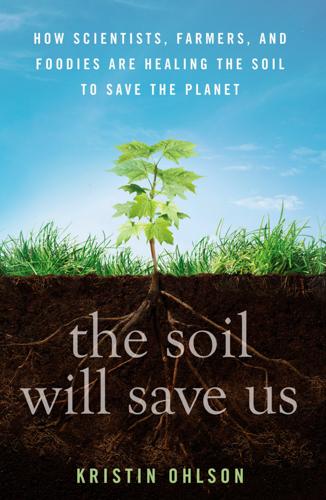
The Soil Will Save Us
by
Kristin Ohlson
Published 14 Oct 2014
“They may as well proclaim it the state flower because there are now more than ever.” Our ignorance about the holistic nature of our environment is best expressed, Savory said in remarks at the 2012 annual congress of the Grassland Society of Southern Africa, by the way we approach our most pressing environmental problems. “The three great issues of the day are biodiversity loss, desertification, and climate change,” he said. “Each is being addressed separately by different institutions and even within such institutions—universities, environmental organizations, governments and international agencies, and in separate international conferences. Yet they are one and the same inseparable issue.”
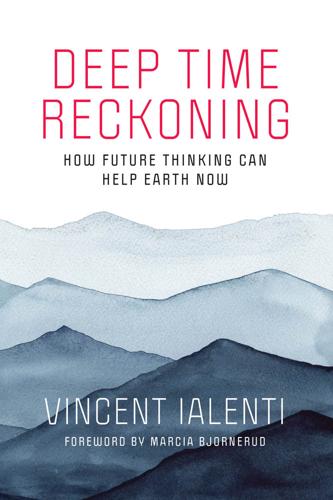
Deep Time Reckoning: How Future Thinking Can Help Earth Now
by
Vincent Ialenti
Published 22 Sep 2020
We may feel paralyzed, as our familiar orientation to the world breaks down, and the “individual and the individual’s system of relations disappears from view.”1 Telling a human story in the evolutionary history of our species, in the cosmological history of the universe, or in the geophysical history of our planet can make our lives seem instantaneous. When contemplating Big History, we can be overcome by a sense of meaningless. Our Anthropocene visions of tomorrow can be filtered by guilt-ridden despair about resource extraction, privilege, nuclear weapons, population growth, capitalism, biodiversity loss, climate change, future asteroid impacts, pandemic illness, and human extinction. Our optimism about technological innovation, moral progress, human virtue, cultural values, personal responsibility, and expert collaboration can seem hopelessly naïve. Nevertheless, the Safety Case experts’ work to develop quantitative models, numerical forecasts, and computer simulations of far future Finlands has persisted with a steadfast stride since the mid-1980s.
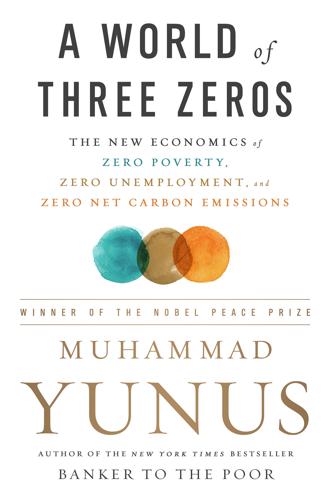
A World of Three Zeros: The New Economics of Zero Poverty, Zero Unemployment, and Zero Carbon Emissions
by
Muhammad Yunus
Published 25 Sep 2017
Life Below Water: Conserve and sustainably use the oceans, seas, and marine resources for sustainable development. 15. Life on Land: Protect, restore, and promote sustainable use of terrestrial ecosystems, sustainably manage forests, combat desertification, and halt and reverse land degradation and halt biodiversity loss. 16. Peace, Justice, and Strong Institutions: Promote peaceful and inclusive societies for sustainable development, provide access to justice for all, and build effective, accountable and inclusive institutions at all levels. 17. Partnerships for the Goals: Strengthen the means of implementation and revitalize the global partnership for sustainable development.1 EACH OF THE SEVENTEEN GOALS is associated with a number of specific targets.
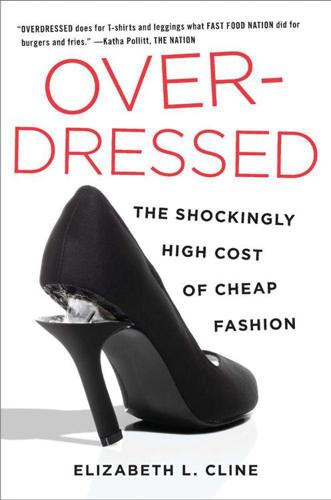
Overdressed: The Shockingly High Cost of Cheap Fashion
by
Elizabeth L. Cline
Published 13 Jun 2012
And all those blends of wonderful low-maintenance Frankenfabrics we’re now buying—the polyester-viscose blends and the wool-nylon-acetate blends in my own closet, for example—aren’t recyclable, as the technology does not exist to separate the fibers back into their original state. This massive pollution created by the textile industry can’t be pegged on a single type of fiber. Each fabric has its own complex and hefty ecological footprint. Environmental reporter Stan Cox has noted that sheep farmed for wool can cause soil erosion, water pollution, and biodiversity loss; leather tanning involves toxic heavy metals; all man-made fiber production emits greenhouse gasses and pollutes water; and the U.S. cotton crop demands 22 billion pounds of weed killer per year.7 Most fiber is bleached or dyed and treated in toxic chemical baths to make it brighter, softer, more fade-resistant and waterproof, less prone to wrinkles, and any other number of qualities that we demand of modern clothing.

Cogs and Monsters: What Economics Is, and What It Should Be
by
Diane Coyle
Published 11 Oct 2021
The double economic catastrophe in just over a decade is reinforcing questioning of what we mean by economic progress, and the role of economists in achieving it, or not. Meanwhile, further significant challenges loom. One is the process of deglobalisation; mitigating the effects of climate change and biodiversity loss is another. Then there is growing concern about the next economic challenge: a wave of automation sweeping over so-far unaffected sectors of the economy, including professional services such as law and accountancy. Advances in digital technologies, robotics, and AI are coalescing to alter the shape of work, automating routine tasks and requiring jobs for humans to be repackaged as non-routine ones.
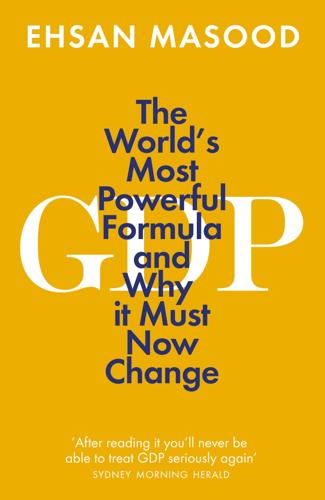
GDP: The World’s Most Powerful Formula and Why It Must Now Change
by
Ehsan Masood
Published 4 Mar 2021
At the same time, a sixth mass extinction3 is becoming more likely as humans continue to encroach into nature to build more homes, new railways, and entire new cities—simultaneously increasing the risks of zoonotic diseases such as COVID-19.4 All of this means that economic recovery needs to be greener if climate change, biodiversity loss and future pandemics are to be avoided. But the problem with measuring economic activity using GDP is that it rewards traditional, fossil fuel-powered economic development. In contrast, greener development takes longer and cannot be achieved in the time it takes for governments to sanction what are called ‘shovel-ready’ projects that can deliver faster growth.

The Locavore's Dilemma
by
Pierre Desrochers
and
Hiroko Shimizu
Published 29 May 2012
—many landscape ecologists are not fond of what they refer to as the “homogecene” (i.e., humanity’s homogenization of the world’s flora and fauna through transport of species across once insurmountable barriers), arguing that richness is only one component of biodiversity and that invasive exotics can relegate existing populations of native species to marginal habitats, leading to genetic bottlenecks and eventual decline, extirpation, and/or extinction over time. Yet, no specialist denies that much human-caused biodiversity losses long predate the advent of modern agri-business and that only very wealthy societies can afford to care about the fate of native species with no direct economic value. As we see things, plants, insects, and other animals that have a major negative impact on human health and economically valuable resources should obviously be kept under control, but whether they are “native” or “invasive” should be irrelevant, for, in the words of Davis and his collaborators, the fight against invasive species ultimately amounts to “an impossible quest to restore the world to some imaginary, pristine state.”11 If one is willing to consider that something along the lines of doubling the world’s food output by 2050 is required, and that, as the molecular biologist Nina Fedoroff observes, agriculture is always “ecologically destructive, whether it is performed at the subsistence level for a single family or on an industrial scale,”12 then the most environmentally sensible course to pursue is to minimize the amount of land devoted to food production by increasing agricultural yields.

The Ages of Globalization
by
Jeffrey D. Sachs
Published 2 Jun 2020
The first is human-induced global warming resulting from the massive emission of heat-absorbing greenhouse gases into the atmosphere. The biggest culprit is carbon dioxide (CO2) emitted by burning fossil fuels. The second is the massive loss of biodiversity, with an estimated 1 million species under threat of extinction according to a major recent analysis.9 The main culprit in biodiversity loss is the massive conversion of land agricultural production, with so much habitat taken from other species that they are being pushed to the edge of extinction. The third is the mega-pollution of the air, soils, freshwater, and oceans. We are assaulting the environment with industrial chemicals, plastics, and other waste flows that are not properly recycled or reduced in production and consumption.
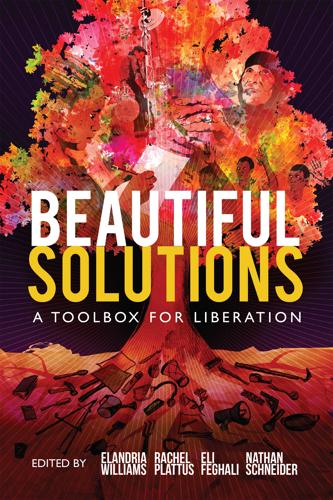
Beautiful Solutions: A Toolbox for Liberation
by
Elandria Williams, Eli Feghali, Rachel Plattus
and
Nathan Schneider
Published 15 Dec 2024
While many different forms are possible depending on the context, an initiative must contain the following elements to be recognized as a PGS: a shared vision, stakeholder (farmers and community members) participation, transparent standards and processes, mechanisms for building trust, non-hierarchical democratic structures, and an ongoing learning process. In 2020, the directory included 223 PGS initiatives in 76 countries serving more than 500,000 farmers. “OUR WORLD’S FOOD AND FARMING SYSTEMS CURRENTLY FACE MULTIPLE CHALLENGES RANGING FROM INCREASING HUNGER, CLIMATE CHANGE, AND BIODIVERSITY LOSS TO FARMERS AND FOOD WORKERS NOT EARNING A DECENT INCOME. THE WAY WE PRODUCE AND CONSUME FOOD CAN EITHER ALLEVIATE OR EXACERBATE THESE CONDITIONS.” — IFOAM - ORGANICS INTERNATIONAL Organic PGS initiatives are often linked to local market opportunities. In 2012, for example, a group of volunteers in Sri Lanka started a weekly market called Good Market, at which all farm products for sale had to be organically grown.

There Is No Planet B: A Handbook for the Make or Break Years
by
Mike Berners-Lee
Published 27 Feb 2019
A., Sorg M., Jongejans E., Siepel H., Hofland N., Schwan H. et al. (2017) There has been more than a 75 percent decline over 27 years in total flying insect biomass in protected areas. PLoS ONE 12(10),p. e0185809. https://doi.org/10.1371/journal.pone.0185809 6 Cardinale, B. J., Duffy, J. E., Gonzalez, A., Hooper, D. U., Perrings, C., Venail, P., Narwani, A., Mace, G. M., Tilman, D., Wardle, D. A. and Kinzig, A .P. (2012) Biodiversity loss and its impact on humanity. Nature 486(7401), p. 59. This Nature paper draws on hundreds of other pieces of research. “For provisioning services, data show that (1) intraspecific genetic diversity increases the yield of commercial crops; (2) tree species diversity enhances production of wood in plantations; (3) plant species diversity in grasslands enhances the production of fodder; and (4) increasing diversity of fish is associated with greater stability of fisheries yields.
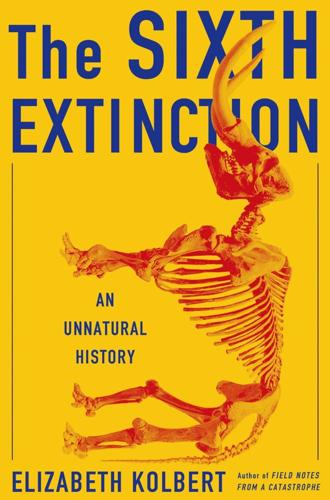
The Sixth Extinction: An Unnatural History
by
Elizabeth Kolbert
Published 11 Feb 2014
Anthony Hallam and Paul Wignall, British paleontologists who have written extensively on the subject, define mass extinctions as events that eliminate a “significant proportion of the world’s biota in a geologically insignificant amount of time.” Another expert, David Jablonski, characterizes mass extinctions as “substantial biodiversity losses” that occur rapidly and are “global in extent.” Michael Benton, a paleontologist who has studied the end-Permian extinction, uses the metaphor of the tree of life: “During a mass extinction, vast swathes of the tree are cut short, as if attacked by crazed, axe-wielding madmen.” A fifth paleontologist, David Raup, has tried looking at matters from the perspective of the victims: “Species are at a low risk of extinction most of the time.”
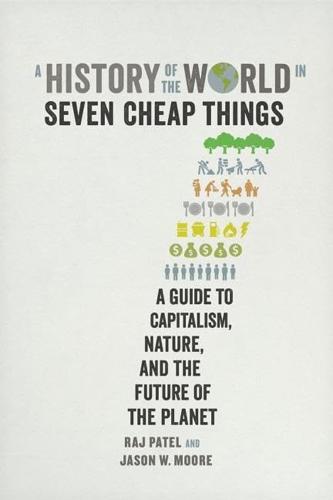
A History of the World in Seven Cheap Things: A Guide to Capitalism, Nature, and the Future of the Planet
by
Raj Patel
and
Jason W. Moore
Published 16 Oct 2017
The New Plastics Economy: Rethinking the Future of Plastics. Geneva: World Economic Forum. http://www3.weforum.org/docs/WEF_The_New_Plastics_Economy.pdf. Worm, Boris, Edward B. Barbier, Nicola Beaumont, J. Emmett Duffy, Carl Folke, Benjamin S. Halpern, Jeremy B.C. Jackson, et al. 2006. “Impacts of Biodiversity Loss on Ocean Ecosystem Services.” Science 314, no. 5800: 787–90. Wright, Melissa W. 2006. Disposable Women and Other Myths of Global Capitalism. New York: Routledge. Wrigley, Edward Anthony. 1990. Continuity, Chance and Change: The Character of the Industrial Revolution in England. Cambridge: Cambridge University Press.

The Great Disruption: Why the Climate Crisis Will Bring on the End of Shopping and the Birth of a New World
by
Paul Gilding
Published 28 Mar 2011
Where possible, they then defined absolute limits to changes in those systems, limits that could not be crossed without endangering our prosperity and stability. The results were summarized in the scientific journal Nature.13 The study identified nine such boundaries and found that we had already crossed three of them—climate change, biodiversity loss, and nitrogen levels—and were approaching several others. The study provides numerous examples of the interlinkages between ecosystem health and economic prosperity. For example, it showed how our efforts to increase agricultural productivity have led to us dramatically exceeding the earth’s capacity to absorb our emissions of nitrogen.
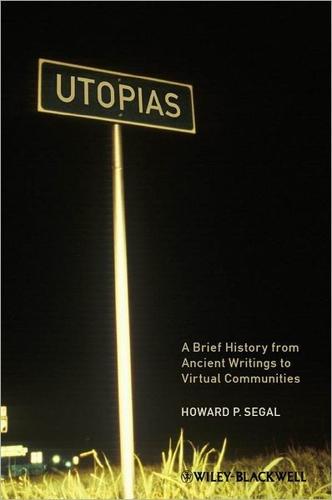
Utopias: A Brief History From Ancient Writings to Virtual Communities
by
Howard P. Segal
Published 20 May 2012
The term derives from several seminal writings of the late 1960s and early 1970s on “wicked problems” by University of California at Berkeley professors C. West Churchman, Horst Rittel, and Melvin Webber. They coined the phrase to describe social problems that were extremely difficult to solve because of various complexities, 112 Growing Expectations of Realizing Utopia changes, and contradictions. Examples include biodiversity loss, global warming, urban violence, and overpopulation. Such problems contrast with what these authors called “tame” social problems: those that were assumed to be capable of being solved by Ramo and McNamara’s brand of technical, scientific, and managerial experts. Those who deal with “wicked” social problems endorse Roszak’s sarcastic criticism of “the good systems team” as being narrowly conceived.
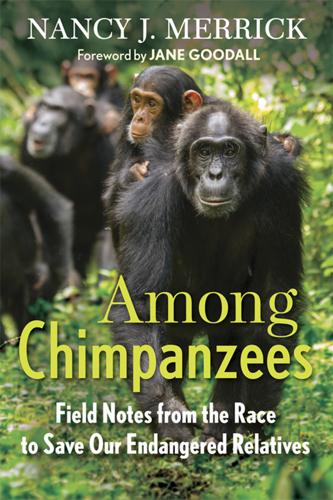
Among Chimpanzees
by
Nancy J. Merrick
He reminds us that Africa has already lost more than two-thirds of its original forest, particularly in areas with explosive population growth.4 The result in Equatorial Africa has been to create remnant forest stands in populated areas, leaving unperturbed forest only in Africa’s Congo Basin. The basin remains the second-largest tropical forest in the world, surpassed only by the Amazon, and its health is integral to preventing a sinkhole of biodiversity loss, desertification, and climate change not just in Africa but even here in the United States. Predictions have been made that deforestation of the Congo Basin would decrease precipitation in the Great Lakes area of the United States by 5 to 15 percent and by 17 percent in West Africa and would have an impact on southern Africa’s rainfall as well.5 These forests, which have been referred to as the lungs of the Earth, are critical to reducing atmospheric carbon load.
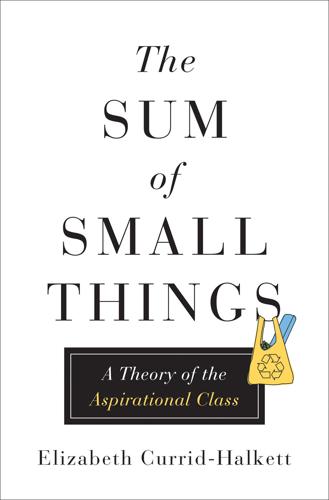
The Sum of Small Things: A Theory of the Aspirational Class
by
Elizabeth Currid-Halkett
Published 14 May 2017
From their 1960s efforts to preserve the life of the Galapagos Islands to their ongoing international rain forest campaign (particularly in the Amazon), WWF has made environmentalism and preservation a real and pertinent issue across the world. The organization’s work has resulted in conservation treaties, a moratorium on commercial whaling, and documented proof of biodiversity loss. WWF has intervened in the logging in the Congo, pioneered efforts to curb carbon emissions, and made rain forest destruction a household topic.37 Even if WWF’s mission is compelling and its work important, the organization’s efficacy relies on people, donors, and other organizations willing to respond to and support their causes.

Falter: Has the Human Game Begun to Play Itself Out?
by
Bill McKibben
Published 15 Apr 2019
Consider this: In November 2017, fifteen thousand scientists from 184 countries issued a stark “warning to humanity.” Just like Pinker, they had charts, but theirs depicted everything from the decline in freshwater per person to the spread of anaerobic “dead zones” in the world’s seas. As a result, the scientists predicted, we face “widespread misery and catastrophic biodiversity loss”; soon, they added, “it will be too late to shift course away from our failing trajectory.” (Within six months, that warning was already the sixth-most-discussed academic paper in history.)6 The worries have grown severe enough that a NASA-funded group recently created the Human and Nature DYnamics (HANDY) program to model the fall of the Roman, Han, Mauryan, and Gupta Empires, and when they pushed the button, it spit out a disquieting forecast: “Global industrial civilization could collapse in coming decades due to unsustainable resource exploitation and increasingly unequal wealth distribution.”
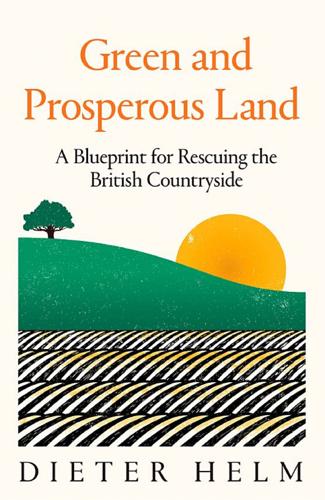
Green and Prosperous Land: A Blueprint for Rescuing the British Countryside
by
Dieter Helm
Published 7 Mar 2019
For the last 200 years it has been reasonable to assume that future people will be better off than we are; the assumption that follows is that they can take care of themselves. That no longer stands up when it comes to nature and natural capital. Future people will have much better technologies, but climate change and biodiversity loss are big liabilities we are bequeathing them. Nature might not care, since there are always new ecological niches for evolution to fill, but future people almost certainly will. The political trick in tackling short-termism has been to create constitutions – rules that constrain immediate political interests – and arm’s-length institutions.

The End of Doom: Environmental Renewal in the Twenty-First Century
by
Ronald Bailey
Published 20 Jul 2015
Instead of island biogeography, the researchers propose a theory of “countryside biogeography” that takes note of the fact that a lot of species, not just bats, can cope with and even thrive in landscapes encompassing natural and modified areas. The new tools afforded researchers by countryside biogeography render, according to the authors of the 2014 Nature study, “more optimistic predictions of biodiversity loss than classic tools because they incorporate the conservation value of the countryside.” One of the authors of the new Nature study, Stanford University researcher Chase Mendenhall, agreed, “The current model of nature reserves works toward separating humans and nature. That’s good to a point, but it can’t be the only approach.
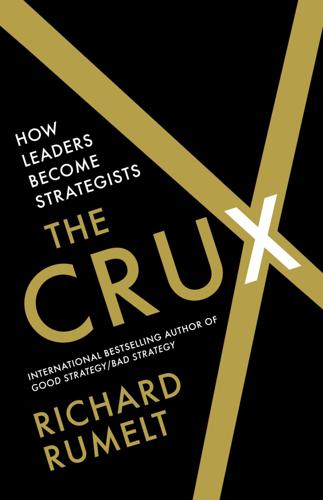
The Crux
by
Richard Rumelt
Published 27 Apr 2022
UN Sustainable Development Goals, 2015 1 End poverty in all its forms everywhere. 2 End hunger, achieve food security and improved nutrition, and promote sustainable agriculture. 3 Ensure healthy lives, and promote well-being for all at all ages. 4 Ensure inclusive and equitable quality education, and promote lifelong learning opportunities for all. 5 Achieve gender equality, and empower all women and girls. 6 Ensure availability and sustainable management of water and sanitation for all. 7 Ensure access to affordable, reliable, sustainable, and modern energy for all. 8 Promote sustained, inclusive, and sustainable economic growth; full and productive employment; and decent work for all. 9 Build resilient infrastructure, promote inclusive and sustainable industrialization, and foster innovation. 10 Reduce inequality within and among countries. 11 Make cities and human settlements inclusive, safe, resilient, and sustainable. 12 Ensure sustainable consumption and production patterns. 13 Take urgent action to combat climate change and its impacts. 14 Conserve and sustainably use the oceans, seas, and marine resources for sustainable development. 15 Protect, restore, and promote sustainable use of terrestrial ecosystems; sustainably manage forests; combat desertification; halt and reverse land degradation; and halt biodiversity loss. 16 Promote peaceful and inclusive societies for sustainable development, provide access to justice for all, and build effective, accountable, and inclusive institutions at all levels. 17 Strengthen the means of implementation, and revitalize the global partnership for sustainable development.

Limitarianism: The Case Against Extreme Wealth
by
Ingrid Robeyns
Published 16 Jan 2024
Project Drawdown has developed an extensive list of strategies to halt and possibly even reverse climate change—see drawdown.org/solutions. 32. Andreas Malm, How to Blow Up a Pipeline (London: Verso Books, 2021). For arguments that we should at the very least vote for a party that has a viable plan to address climate change, biodiversity loss, and environmental challenges, see Aaron Maltais, “Radically Non-Ideal Climate Politics and the Obligation to at Least Vote Green,” Environmental Values 22:5 (2013), pp. 589–608. 6. Nobody Deserves to Be a Multimillionaire 1. Thomas Hobbes, Leviathan, ed. Richard Tuck (Cambridge: Cambridge University Press, 1996; first published in 1651), p. 89. 2.
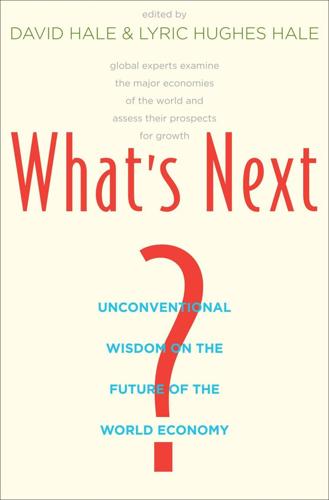
What's Next?: Unconventional Wisdom on the Future of the World Economy
by
David Hale
and
Lyric Hughes Hale
Published 23 May 2011
In the same way, a disjointed regulatory environment has led to excess consumption that ultimately feeds into global warming, which can only be controlled by hard budget constraints in the form of current taxation, not future taxation. We are reminded of the effects of global climate change by recent typhoons, floods, earthquakes, and droughts, as well as the estimate that biodiversity loss could cause as much as US$2–5 trillion annually, while the total cost of the current financial crisis is less than $4 trillion. Advocates of global governance reform suggest that the current problems can be solved through a global currency or a global financial regulator. They forget that the precondition for global government action is a global fiscal system.

Business Lessons From a Radical Industrialist
by
Ray C. Anderson
Published 28 Mar 2011
The bad news is that, until quite recently, the call to action was muffled and distant. The good news is, the awakening is already happening. 14 | Awakening the Mind and Spirit I used to think we could solve the environmental crisis by throwing enough good science at the problem. I was wrong. The primary threat isn’t pollution, climate change, biodiversity loss, or habitat destruction. It’s selfishness, greed, and apathy. We need a spiritual and cultural transformation to deal with that. GUS SPETH, dean, Yale School of Forestry and Environmental Studies In chapter 2, I explained how Paul Hawken’s book, The Ecology of Commerce, indicted me as a plunderer of the earth.

10% Human: How Your Body's Microbes Hold the Key to Health and Happiness
by
Alanna Collen
Published 4 May 2015
Our species has come within decades of permanently losing the microbial diversity that makes us human. Were it not for the remaining societies living antibiotic-and fast-food-free in some of the most untouched parts of the world, we would never have known what the human gut microbiota was ‘supposed’ to be like. Now, it is up to those of us whose internal ecosystems already reflect the biodiversity loss of planet Earth to turn things around for the sake of our children and grandchildren. CODA Twenty-First-Century Health In 1917, King George V of the United Kingdom sent telegrams to seven men and seventeen women in recognition and celebration of their 100th birthdays. It began a tradition that is continued today, via greetings card rather than telegram, by King George’s granddaughter.
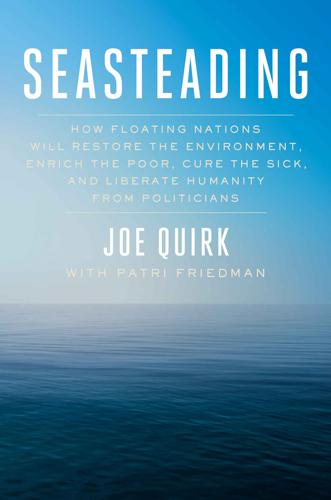
Seasteading: How Floating Nations Will Restore the Environment, Enrich the Poor, Cure the Sick, and Liberate Humanity From Politicians
by
Joe Quirk
and
Patri Friedman
Published 21 Mar 2017
See also Steve Sorrell et al., “Oil Futures: A Comparison of Global Supply Forecasts,” Energy Policy 38, no. 9 (September 2010): 4990–5003. the world will run out of wild-caught seafood in 2048: Juliet Eilperin, “World’s Fish Supply Running Out, Researchers Warn,” Washington Post, November 3, 2006, www.washingtonpost.com/wp-dyn/content/article/2006/11/02/AR2006110200913.html. See also Boris Worm et al., “Impacts of Biodiversity Loss on Ocean Ecosystem Services,” Science 314, no. 5800 (November 3, 2006): 787–90, www.sciencemag.org/content/314/5800/787.abstract. “peak phosphorus,“or the point at which: Ingrid Steen, “Phosphorus Availability in the 21st Century: Management of a Non-Renewable Resource,” Phosphorus & Potassium 217 (1998): 25–31.

The Coming Wave: Technology, Power, and the Twenty-First Century's Greatest Dilemma
by
Mustafa Suleyman
Published 4 Sep 2023
We pursue new technologies, including those in the coming wave, not just because we want them, but because, at a fundamental level, we need them. * * * — It’s likely that the world is heading for two degrees Celsius of climate warming or more. Every second of every day biospheric boundaries—from freshwater use to biodiversity loss—are breached. Even the most resilient, temperate, and wealthy countries will suffer disastrous heat waves and droughts, storms and water stress in the decades ahead. Crops will fail. Wildfires rage. Vast quantities of methane will escape the melting permafrost, threatening a feedback loop of extreme heating.
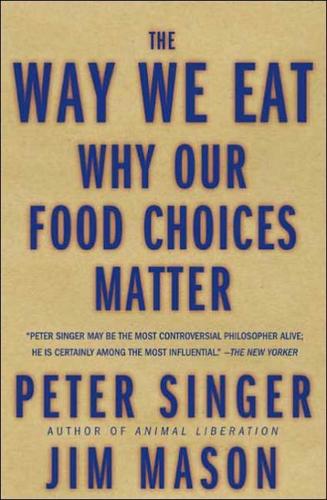
The Way We Eat: Why Our Food Choices Matter
by
Peter Singer
and
Jim Mason
Published 1 May 2006
This is because, they wrote, "as environmental science has advanced, it has become apparent that the human appetite for animal flesh is a driving force behind virtually every major category of environmental damage now threatening the human future-deforestation, erosion, fresh water scarcity, air and water pollution, climate change, biodiversity loss, social injustice, the destabilization of communities and the spread of disease."2s ~t 14 THE ETHICS OF EATING MEAT any people, like Jake Hillard and Lee Nierstheimer, eat whatever meat takes their fancy at the supermarket or in fast food restaurants. Some, like Mary Ann Masarech and her daughters, make an effort to eat meat from humane and organic farms.
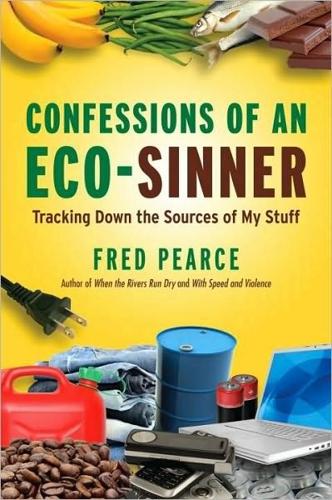
Confessions of an Eco-Sinner: Tracking Down the Sources of My Stuff
by
Fred Pearce
Published 30 Sep 2009
abortions, Manila 154 Abramovitch, Roman 222 Acer 160, 163, 165 Africa Darfur droughts 335 desertification 108, 334–8 fertility rates 366 Homo sapiens evolution 328–9 land management 334 tourism 320–1 Agarwal, Ravi 291 Agnes 71–2 Agrocel 129, 131 AIDS clinics 73–4 demographic effects 72–3, 366 elderly carers 71–2, 73–4 societal effects 72–3 air freighting organic food 102 plant food imports 101, 111–12 air travel Buncefield fuel depot explosion 236 CO2 emissions 233, 236–7 Kyoto Protocol 236–7 reducing 357 short-haul flights 233 total emissions 306–7 UK airports 236–7 Akter, Nazma 143 Alaska caribou migration routes 217–20 climate changes 218–19 oil 214–20 Prudhoe Bay 214–20 racial issues 216–17 Albania, sage 57–8 Alexander, Christopher 347 allotments 342 aluminium environmental footprint 195–6 properties 191–2 recycling 199–200, 256, 285–6 Rio Tinto Aluminium 192–4 smelting 192, 194–7, 226 Ambrose, Stanley 327, 329–30 AMG Resources, steel recycling 256 Amnesty International 276 Anglo American, metal mining 203 antimony, China 205 apples, Kazakhstan 90–1 Aquaculture Certification Council 69 Aral Sea climate change 150 drying up 146–7 pollution 150 Archer Daniels Midland (ADM) cocoa 96 palm oil 78 Asda 142 Associated British Foods 80 Association for Responsible Mining 246–7 Asustek 161–4 auctions coffee 31–2 fish 49 Australia aluminium 192–8 Brisbane 303–4 coal 230 cotton 119–22 droughts 120 eco-projects 345 Gladstone 192–7 Kyoto Protocol 198 Melbourne 345 tea tree oil 59–60 Ausubel, Jesse 347–8 Awaj Foundation 141–2 Badger brewery see Hall and Woodhouse bananas 84, 86–9 Banc d’Arguin marine national park 50–2 fishing permits 51–2 WWF 51, 54 Bangladesh Awaj Foundation 141–2 banking system 68 child labour 143 corruption in 65 deltas 62–3, 66, 70 Dhaka 138–45, 345 family sizes 364 female emancipation 144–5 garment workshops 138–44 Khulna 63–4, 67–8 King prawns 62–70 land grabbing 64–5 wages 142–3 Bangladesh Frozen Food Exporters Association 67 barley malts, beer 38–9 Barry Callebaut 96 Bazalgette, Joseph 254 beaches, over-cleansing 263 Beckton sewage treatment works 254 beer barley malts 38–9 brewery closures 37 Hall and Woodhouse 37–9 herb 39 ingredients 38–9 local brews 36–7 summer ales 39 water for 38 yeasts 39 Bertrand, Nick 350 BHP Billiton 203 Bihar 289 bio-capacities 317–18 biodiesel, European Union laws 77 Biodiversity (formerly International Plant Genetic Resources Institute) 84 biodiversity loss, and sugar 83 biofuels 82, 355 burying CO2 with 357 and palm oil 77 threat of 341 bismuth 207 black tiger prawns see king prawns books carbon footprint 312–13 research for 313 Borneo, rainforest clearances 169, 172 Box, John 350 BP, targetneutral scheme 305 Brasilia 347 bread Lighthouse 42 processes 42 stoneground wholemeal flour 42–4 yeasts 42 breweries, closures 37 Brisbane 303–4 British Airways, carbon offsets 304–5 British Trust for Ornithology 262 Broadacre City, Lloyd Wright 346–7 Brown, Gordon, eco-cities 350 brownfield sites development of 351 wildlife 350–1 ‘built environment’ emissions CO2 emissions 242 domestic greenhouse gases 242–4 Buncefield fuel depot explosion 236 Bunting, Madeleine 365–6 Burden, Graham 122, 128 cabbages 89 Cafédirect coffee 27–30 and fairtrade philosophy 35 prices paid 31–2 CAI (Computer Aid International) 299–300 Caldwell, Jack 365 Cameron, David 45, 103, 359 Cameron, Ray 219–20 Cameroon cocoa 94–7 cotton 136 slash-and-burn agriculture 95 carbon footprint books 312–13 calculating 371 publishing 313 carbon offsets see also CO2 emissions aircraft emissions 303–4, 306–8 availability 304–5 British Airways 304–5 Climate Care 308, 310, 312 costs 308 definitions 305 forest maintenance 308–9 Kyoto Protocol 304, 311 Orbost estate 305–6 programme range 304–5 Sky 305 Carbon Trust 241–2 CarbonNeutral Company 305–6, 311 cardamom 58 Cargill cocoa 96 cotton 123 palm oil 78 Sun Valley chickens 78–9 caribou, migration routes 217–20 cement 240 cereals, for meat production 340 CETC (China Electronics Technology Group Corporation) 272 Chang, Mage 165 charities, textile recycling 266–9 cheese 40–1 Chen, David 162, 163–4 Cheng, Sammy 159, 163–4, 165, 371 Cheng, Shengchan 280–2 Cheung, Yan 284–5, 371 chickens free-range organic 39–40, 41 soya fed 79 child labour Bangladesh 143 computer recycling 288–90 cotton industry 124 India 124, 288–91 Ivory Coast 97 Pakistan 124 China see also Shenzhen; Suzhou aluminium recycling 285–6 antimony 205 computer industry 160–1, 165, 167 deforestation 171–2 ginger 58 mobile phones 271–2 one-child policy 364 paper recycling 280–2, 284–5 plastic bottle recycling 256–7, 282–3 power stations 358 Qiaotou 179 recycling ethos 282–4 small commodities markets 177–80 tin 205 traditional medicines 181–3 Yiwu 177–80 Zhangjiagang 169, 171 zinc 205 China Electronics Technology Group Corporation (CETC) 272 Chinatext, cotton 123 Chococo 99 chocolate see also cocoa fairtrade 98 gourmet 99 UK introduction 93–4 world-wide consumption 94 Christmas decorations 178 chromium, Kazakhstan 205 cinnamon 58 cities see London; mega-cities; urban farming city metabolism 239–40 civil wars 208–10 Clean Air – Cool Planet 305 Climate Care 308, 310, 312 climate changes Alaska 218–19 economic implications 358 Mount Toba eruption 326–7 cloves 58 CO2 emissions see also carbon offsets accumulation 316 air travel 233, 236–7 built environment’ 242–4 burying with biofuels 357 cement 240 coaches and buses 235 coal-fired power stations 228–9, 356 global reductions 370–1 global warming 354–5 Heathrow airport 235–6 targets 357 train travel 232–3 coaches and buses 235 coal-fired power stations 228, 356 CO2 emissions 228–9, 356 Drax 228–30 imports for 229–31 Coastal Development Partnership, Kulna 63 Cockerill, Ian 19 cocoa Archer Daniels Midland 96 Barry Callebaut 96 Cameroon 94–7 Cargill 96 fairtrade 98 history 93–4 Ivory Coast 97 middlemen 96–7 Nestlé 96 price crashes 96 processing 98 smallholdings 94–6 western discovery of 93 coffee auctions 31–2 Cafédirect 27–30 cooperatives 28–30 fairtrade 32–4 global trading 31 Kilimanjaro 27–9 organic farming 30 prices 28–9, 31–3 roasting 33–4 shipments to London 33 Starbucks 30 coltan see tantalum community projects fairtrade coffee 32 fairtrade cotton 131, 133–4 Compal 165–6 Computer Aid International (CAI) 299–300 computer components 160–4, 161–4 metals for 205, 207–8 computer recycling 288–91 child labour 288–90 copper recovery process 288–90 illegal imports 291–2 computers, reuse 297–300 Computers for Schools Kenya 297–300 conferences, ecological footprints 318 congestion charge, London 345 Congo 276–7 conservation, herbs 56 consumption, globalized 7–10 contraception Philippines 153–5 religious attitudes to 153–4, 364–5 cooking, energy expenditure 103 copper production 203, 204 recovery 288–90 Cory, household waste management 251–3, 261 cotton Australia 119–22, 124 Cameroon 136 Chinatext 123 Cragill 123 Dreyfus 123 Dunavant 123 fairtrade 128–30, 134 genetic modification 125, 132–3 India 124–5, 128–31, 133 Maral Overseas 133–4, 135–7 Marks & Spencer 122, 132 Pakistan 124 Plexus 123 Reinhart 123 social costs 126–7 spinning and knitting 136–7 USA 124–6 Uzbekistan 124, 147–8, 151 world production 123–4 Cotton Australia 120 Crossness sewage treatment works 254–5 Culham nuclear-fusion research reactor 226 Cure, Lynne 251 Dairy Crest 40 dairy industry, depression of 40 Dar es Salaam innovative enterprises 278–9 Milonge brothers 264–7 mitumba 264–7 Phones for Africa 278 textiles recycling 266–9 wildlife sculptures 278–9 debt slavery, Mauritania 186 deforestation consequences, China 171–2 Delhi computer recycling 292 LNG transport 345 Mandoli 287–92 Dell computers 160, 163, 165, 166 demography see also population growth AIDS 72–3 and migration 367–8 desertification 334–5 reversals 108, 335–8 Dhaka garment workshops 138–45 LNG transport 345 Dickens, Charles, Our Mutual Friend 253–4 domestic environment greenhouse gases 242–4 zero-carbon homes 244 domestic recycling 251 Drax coal-fired power station 228–30 Dreyfus, cotton 123 Driefontein goldmine 15–18 droughts Australia 120 Darfur 335 Dubai electronic waste trading 291 gold smuggling 21 mitumba trading 266 dump, burn and offset 303–4 Dunavant, cotton 123 Duncan, Anne 194 Dyson, Tim 365 e–waste brokers, Environment Agency 296 Earth, ecological statistics 315 eco-efficiency 316 town planning 349 eco-projects mega-cities 345 urban transport 345 ecological footprints see also CO2 emissions conferences 318 European 317 global 317–18 Homo sapiens 333 urban 314–15 Edwards, Rob 305 elderly carers, South Africa 71–2, 73–4 electricity see also power stations aluminium smelting 192, 196–7, 199, 226 cooking 103 domestic use 242 from incinerators 261 ‘green tariffs’ 311 imported 227 National Grid 226–7 renewable sources 227–8 world–wide consumption 315–16 electronic waste European Union directive 277, 293–4, 296 landfill 287 metals recovery 288–92 UK recycling 293–6 Ely 184–7 EMR (European Metal Recycling) 295 endangered species, traditional medicines 181–3 energy intensive production, agribusiness 102–3 Environment Agency, e-waste brokers 296 Environment and Development, International Institute for 103, 339 environmental footprint mega-cities 344–5 personal contributions 242–4 public services 241–2 environmental impact aluminium smelting 195–6 metal mining 203–4 oil extraction 220–2 environmental protectionism 359 Essissima, Joseph 94–5 ethical trading, supermarkets 70 Europe fertility rates 366–7 global footprint 317 European Metal Recycling (EMR) 295 European Union beaches directive 263 biofuel additives 77 electronic waste directive 277, 293–4, 296 fishing rights 53 sugar beet 81–2 waste export ban 258–9 Eurostar 232–3 Evans, Dicky 104 evolution, Homo sapiens 328–31 Excel Crop Care, G.

Imaginable: How to See the Future Coming and Feel Ready for Anything―Even Things That Seem Impossible Today
by
Jane McGonigal
Published 22 Mar 2022
What would partnering and parenting look like in a future with biological moms but no biological dads? On a scale of 1 to 10, how comfortable are you thinking about this scenario? (1 is extremely uncomfortable, 10 is extremely comfortable.) Could this scenario really happen? In fact, scientists are already working to prevent long-term biodiversity loss on our planet by creating underground safehouses to preserve genetic material for the future. The Frozen Ark, founded in 2004 and named as a nod to the biblical Noah’s ark, is a UK-based charity that works with zoologists and conservationists worldwide to collect and preserve the DNA of animal species at risk of extinction, of which there are currently more than thirty-five thousand.19 This practice is known as endangered animal biobanking.
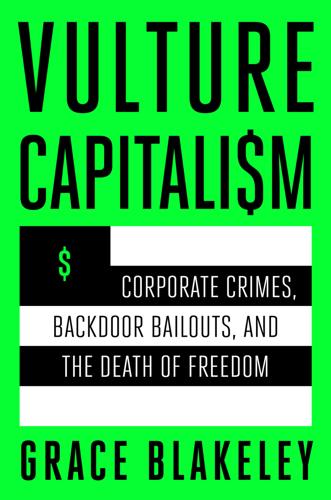
Vulture Capitalism: Corporate Crimes, Backdoor Bailouts, and the Death of Freedom
by
Grace Blakeley
Published 11 Mar 2024
We are currently living through the sixth mass-extinction event in the earth’s history, driven by everything from climatic changes to the overuse of chemical pesticides.162 We have disrupted the nitrogen cycle through the overuse of chemical fertilizers that have compromised the quality of our drinking water and the air we breathe, as well as accelerating climate breakdown and biodiversity loss.163 The overuse of antibiotics has led to the emergence of resistant strains of many potentially deadly bacteria, and the overuse of pesticides has resulted in pollinator decline that is putting at least $600 million in global crops at risk every year.164 Meanwhile, up to 40 percent of the earth’s land is now degraded, potentially compromising our ability to grow the foods we need to feed ourselves.165 Marx realized more than a century ago that the wealth provided by nature was treated by capital as a “free gift”—a store of wealth that could be drawn on, apparently indefinitely.166 The pandemic was a wake-up call for those who have grown used to exploiting the natural world without consequence.

Why We Can't Afford the Rich
by
Andrew Sayer
Published 6 Nov 2014
Figure 20.2: ‘Just wash the spoon’ Source: http://posters-for-good.tumblr.com/post/13199697341/just-wash-the-spoon Key environmental impacts include soil erosion, deforestation, water salinisation, accumulation of insecticides and pesticides, particulates in the air, tropospheric (lower atmosphere) ozone pollution, stratospheric ozone loss, toxic chemical waste, heavy metals, asbestos, nuclear waste, rapid biodiversity loss (marine as well as terrestrial), acidification of the oceans, hormone discharges into the water supply, endangered fish stocks and, of course, climate change (of which more later).30 No wonder some environmental scientists believe that the pace at which we are transforming the earth – land, sea and atmosphere – warrants the designation of a new geological period, ‘the anthropocene’.

Berlin
by
Andrea Schulte-Peevers
Published 20 Oct 2010
The local fauna, however, has not fared nearly so well. Loss of habitat, low ground-water levels and dry biotopes have caused more than half of all animal and plant species to limp onto the endangered species list. In May 2008 Berlin joined the international initiative Countdown 2010 (www.countdown2010.net), whose goal is to stop the ongoing biodiversity loss. Larkspur, early purple orchid and wild carnations are among the species that are practically extinct, while the survival of otters, partridges, lapwings and natterjack toads is severely threatened. Only about 33 fish species still inhabit the city’s rivers and lakes, the most common being perch, pike, roach and bream.
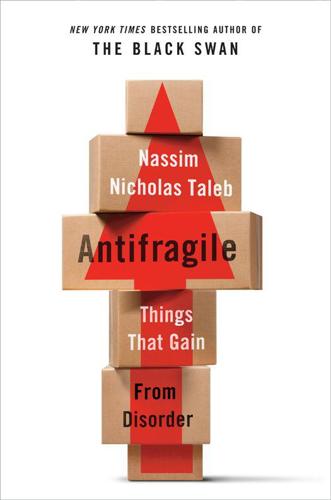
Antifragile: Things That Gain From Disorder
by
Nassim Nicholas Taleb
Published 27 Nov 2012
M., and D. A. Humphries, 1988, Protean Behaviour: The Biology of Unpredictability. Oxford: Oxford University Press. Duffin, Jacalyn, 1999, History of Medicine: A Scandalously Short Introduction. Toronto: University of Toronto Press. Dunne, J. A., R. J. Williams, et al., 2002, “Network Topology and Biodiversity Loss in Food Webs: Robustness Increases with Connectance.” Ecology Letters 5(4): 558–567. Earle, J., 1975, “Thyroid Cancer. Delayed Effects of Head and Neck Irradiation in Children (Medical Information).” Western Journal of Medicine 123:340, October. Easterly, W., 2001, The Elusive Quest for Growth: Economists’ Adventures and Misadventures in the Tropics.

Aftershocks: Pandemic Politics and the End of the Old International Order
by
Colin Kahl
and
Thomas Wright
Published 23 Aug 2021
A green recovery from COVID-19 could create good jobs in both the near and long terms and unleash enormous innovations in cutting-edge technological fields while reducing the greenhouse gas emissions that imperil the planet. It will also enable countries and communities to better adapt to and ride out the inevitable shocks from climate change.41 At the February 2021 G7 summit, the United States and its allies pledged to “put our global ambitions on climate change and the reversal of biodiversity loss at the center of our plans” to “build back better” from the pandemic.42 In the years ahead, that new sense of collective purpose must become a reality. A STRATEGIC FRAMEWORK FOR THE POST-COVID ERA Grappling with the broader implications of COVID-19 and its aftershocks for American foreign policy, the geopolitical landscape, and the future of international order will also be essential.
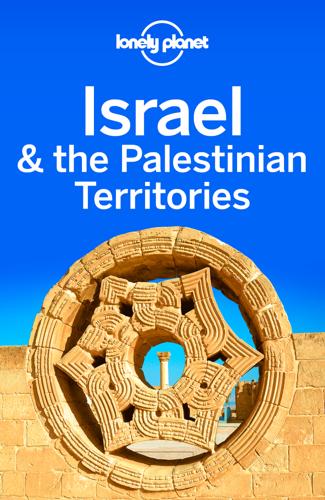
Israel & the Palestinian Territories Travel Guide
by
Lonely Planet
Like a number of other sites around the country, they are world-class spots for bird-watching. Israel’s 128 surviving indigenous mammal species are, for the most part, holding their own thanks to restrictions on hunting and a system of nature reserves and protected areas that encompass some 25% of Israel’s land. However, protected areas are hardly a panacea for biodiversity loss. Many are quite small and isolated and can therefore offer only limited protection for endangered species. Moreover, many of the reserves in the south are also used for military exercises. Sometimes this overlap works to nature’s advantage because civilian visitors are allowed in only on weekends and holidays, but the soldiers, tanks and jets cause significant disruption, especially for mammals.

Enlightenment Now: The Case for Reason, Science, Humanism, and Progress
by
Steven Pinker
Published 13 Feb 2018
Appley, ed., Adaptation-level theory: A symposium. New York: Academic Press. Briggs, J. C. 2015. Re: Accelerated modern human-induced species losses: Entering the sixth mass extinction. Science. http://advances.sciencemag.org/content/1/5/e1400253.e-letters. Briggs, J. C. 2016. Global biodiversity loss: Exaggerated versus realistic estimates. Environmental Skeptics and Critics, 5, 20–27. Brink, D. O. 1989. Moral realism and the foundations of ethics. New York: Cambridge University Press. British Petroleum. 2016. BP Statistical Review of World Energy 2016, June. Brockman, J. 1991.
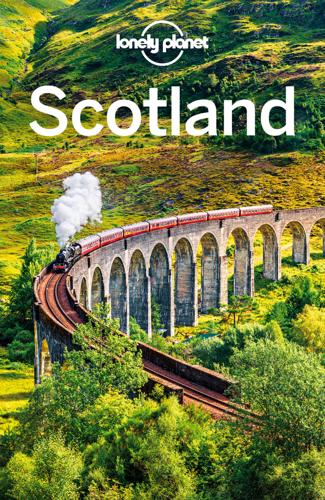
Lonely Planet Scotland
by
Lonely Planet
Offshore, some 800 islands are concentrated in four main groups: the Shetland Islands, the Orkney Islands, the Outer Hebrides and the Inner Hebrides. Scottish Natural Heritage (www.snh.gov.uk) is the government agency responsible for the conservation of Scotland's wildlife, habitats and landscapes. A key initiative is to reverse biodiversity loss. The Water It rains a lot in Scotland – some parts of the western Highlands get over 4m of it a year, compared to 2.3m in the Amazon Basin – so it's not surprising there's plenty of water about. Around 3% of Scotland's land surface is fresh water; the numerous lochs, rivers and burns (streams) form the majority of this, but about a third is in the form of wetlands: the peat bogs and marshes that form a characteristic Highland and island landscape.
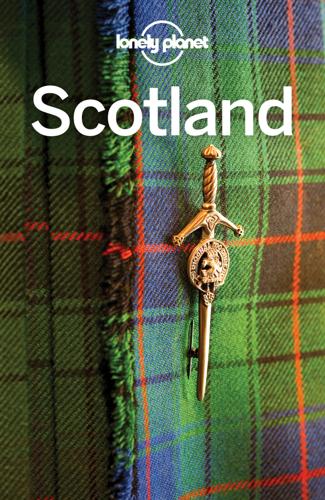
Lonely Planet Scotland
by
Lonely Planet
Several species have been successfully reintroduced, and the populations of other precariously placed species have stabilised, including those of ospreys (absent for most of the 20th century), golden eagles, white-tailed eagles, peregrine falcons and hen harriers. Scottish Natural Heritage (www.nature.scot) is the government agency responsible for the conservation of Scotland’s wildlife, habitats and landscapes. A key initiative is to reverse biodiversity loss. National Parks Scotland has two national parks – Loch Lomond & the Trossachs and the Cairngorms. There’s a huge range of other protected areas: 43 national nature reserves (www.nnr.scot) span the country, and there are also marine areas under various levels of protection. Environmental Issues Scotland’s abundance of wind and water means the government hasn’t had to look far for sources of renewable energy.
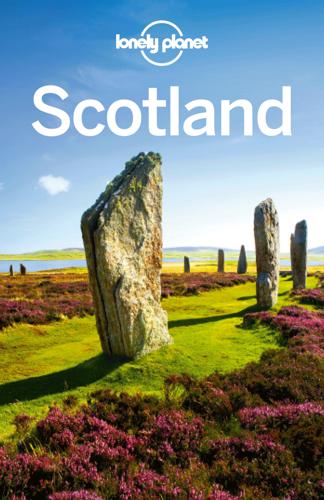
Scotland Travel Guide
by
Lonely Planet
The latest proposal, the Clyde Wind Farm in Lanarkshire, will supply power to over a quarter of a million homes once completed. Scottish Natural Heritage (www.snh.org.uk) is the government agency responsible for the conservation of Scotland’s wildlife, habitats and landscapes. A key initiative is to reverse biodiversity loss. The problem is, although everyone agrees that wind power is clean and economical, there’s a powerful NIMBY (not in my back yard) element who don’t want the windmills spoiling their view. And it’s not just the whirring blades, of course. A remote Highland wind farm is all very well, but the power lines trailing all the way down to the south have a significant visual and environmental impact.